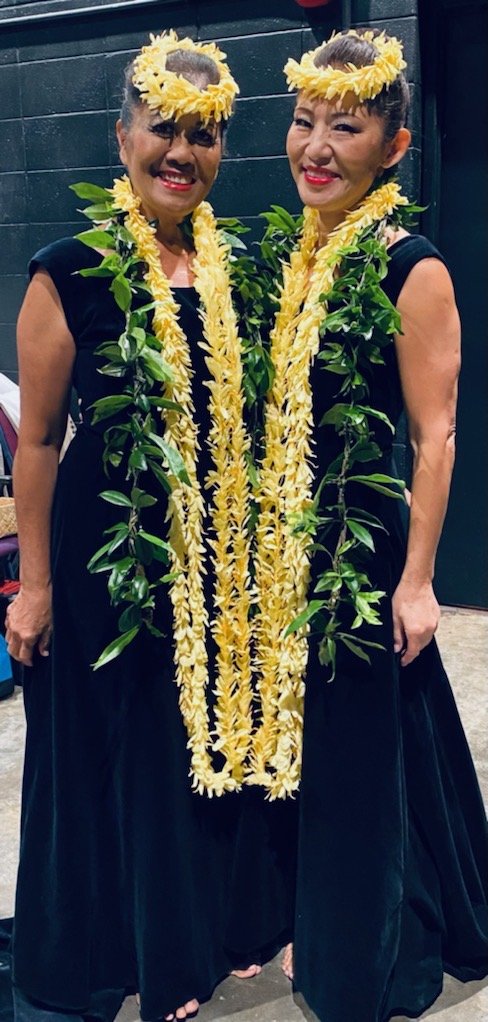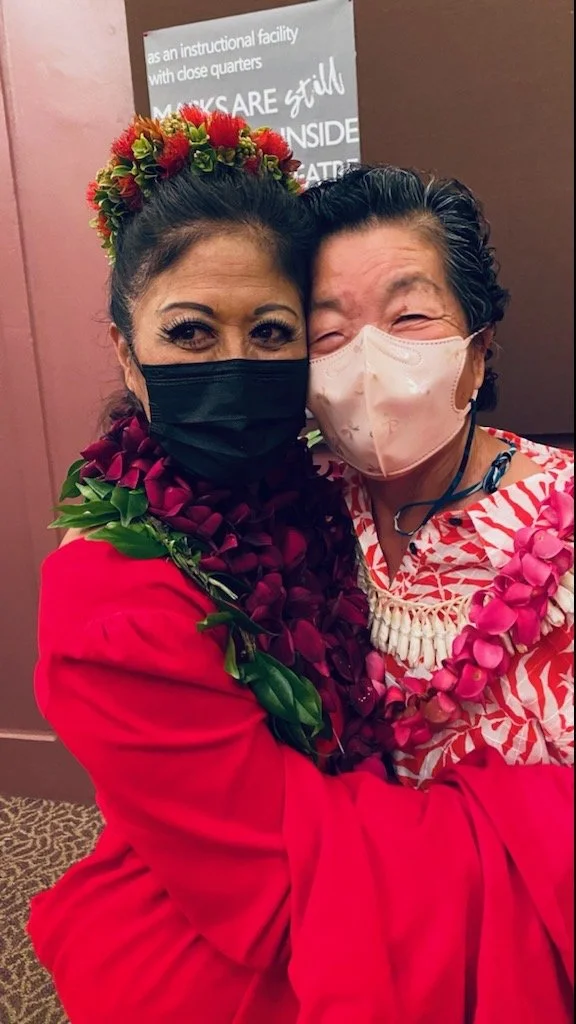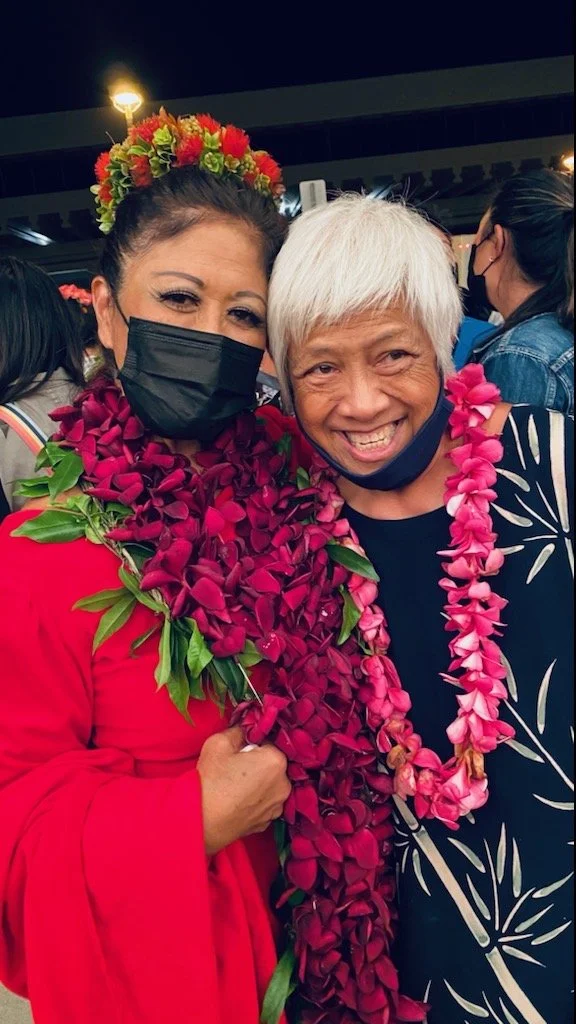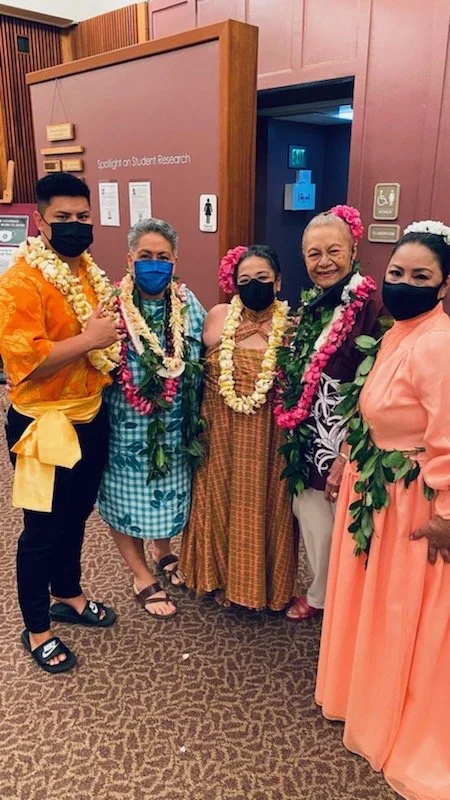Local Motion!
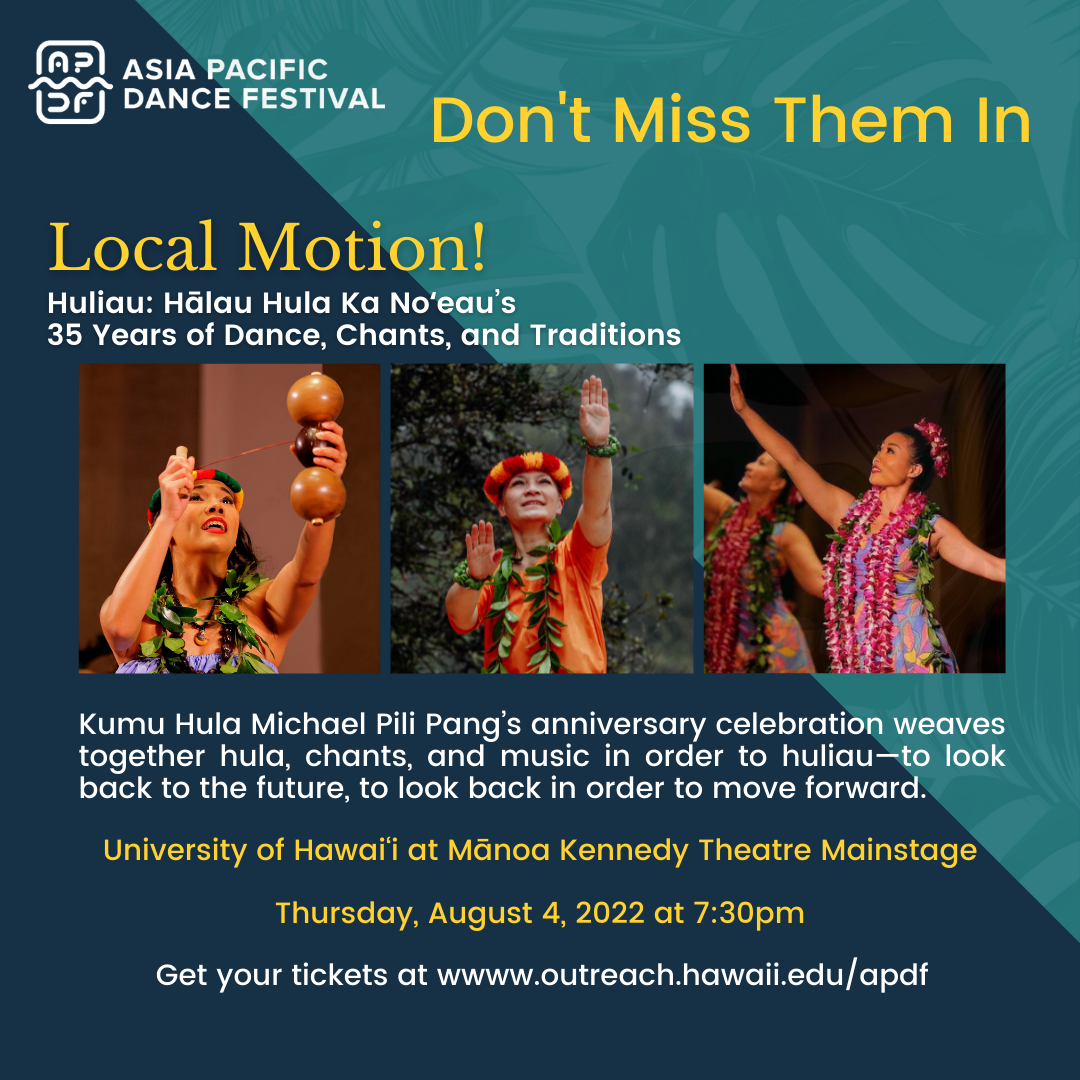
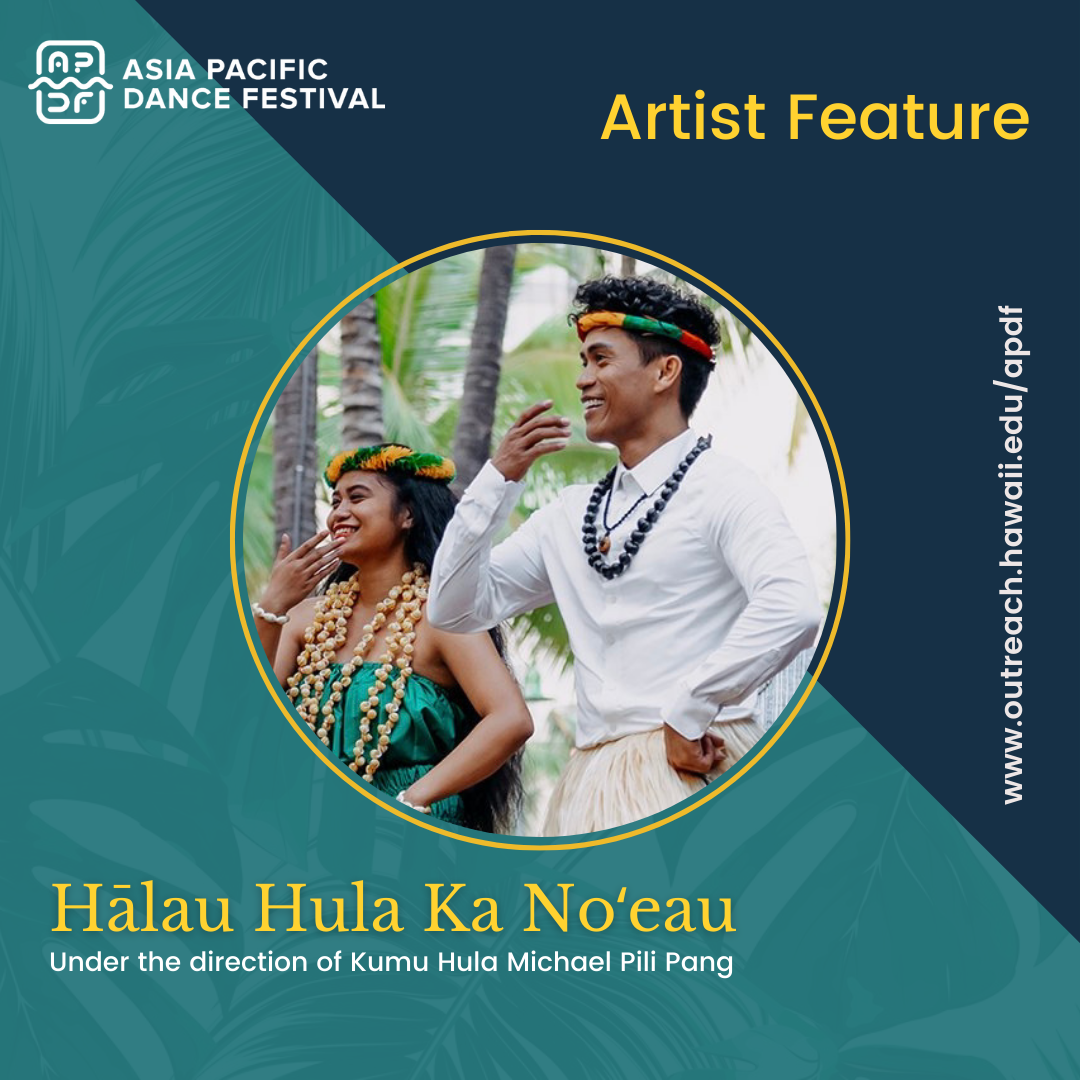
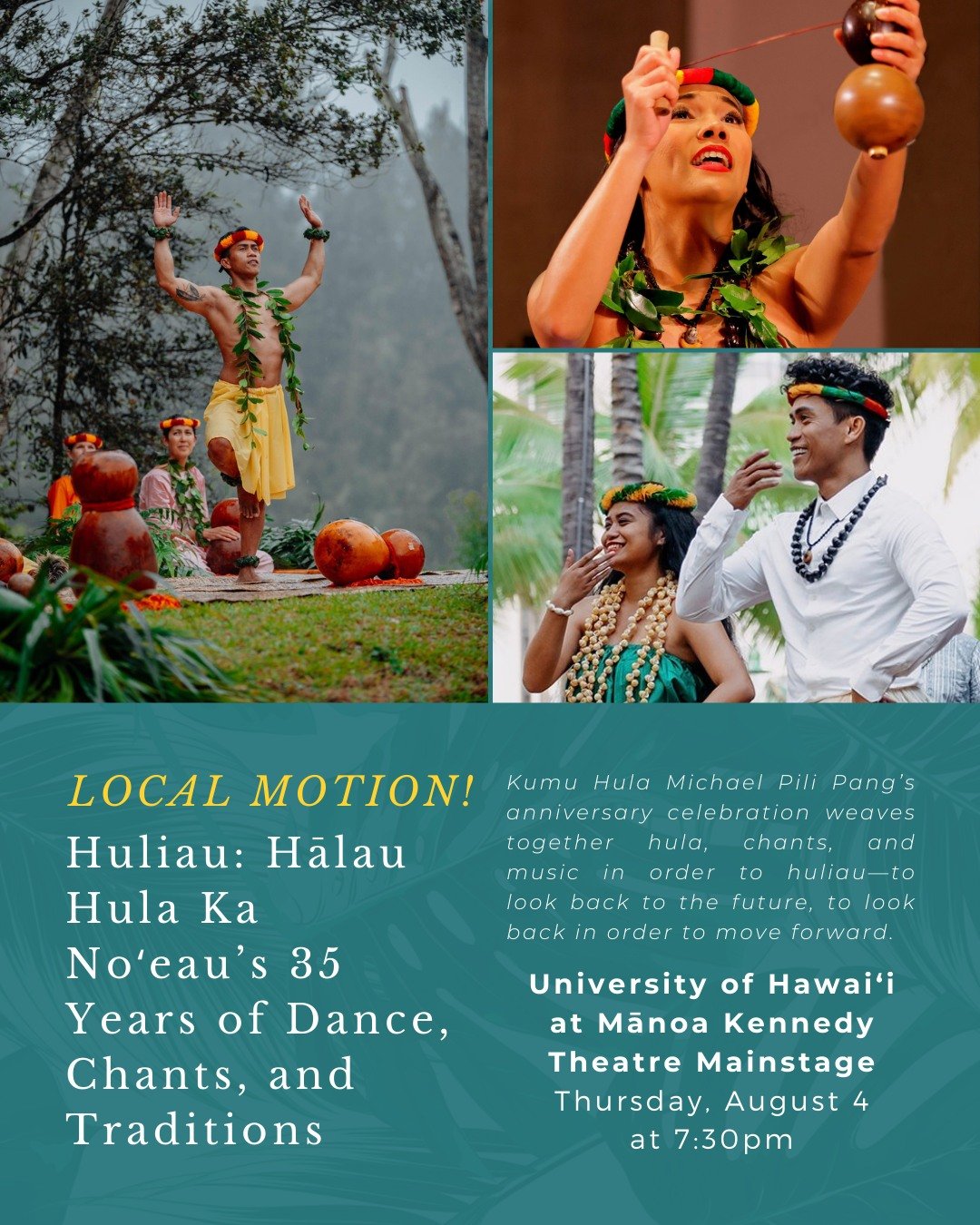
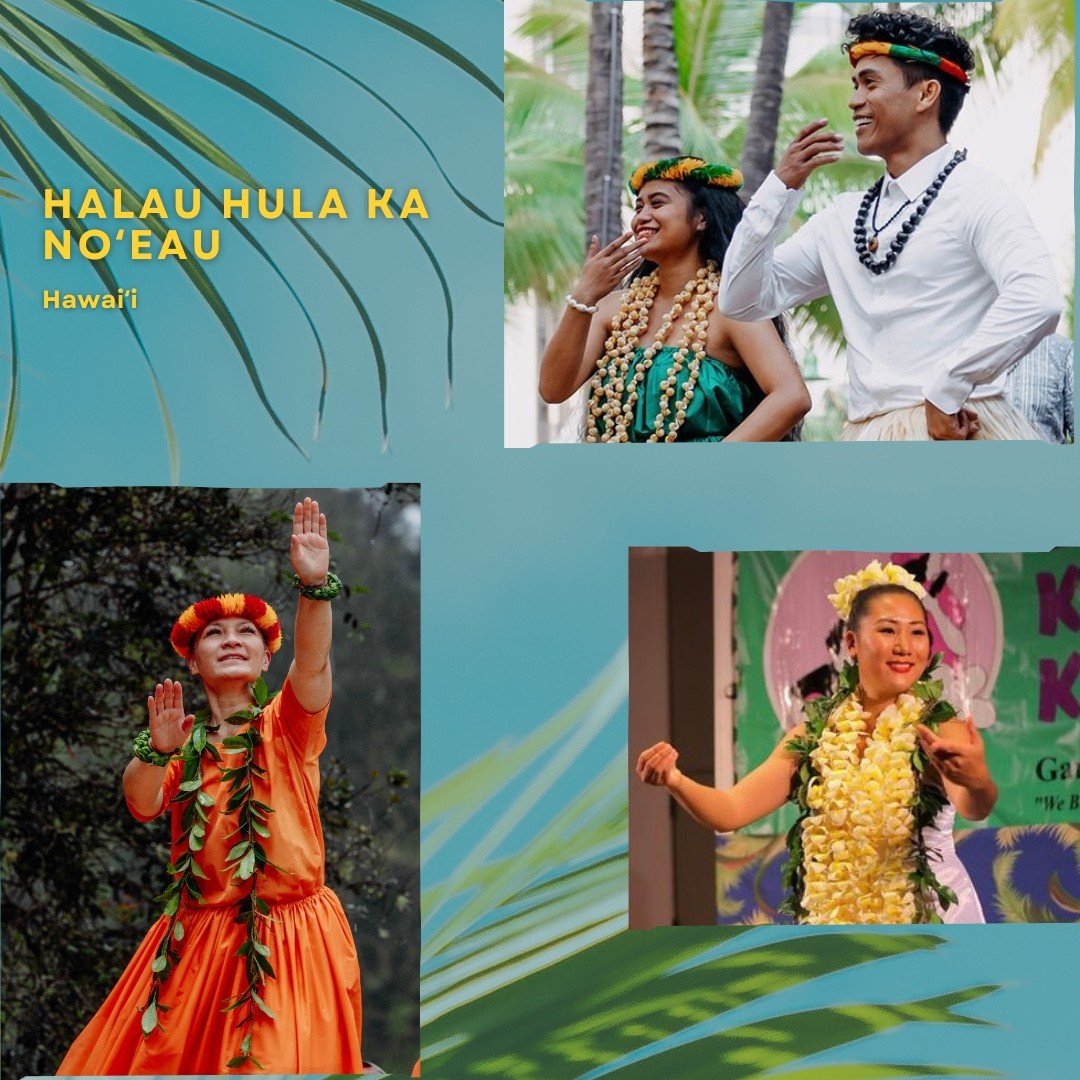



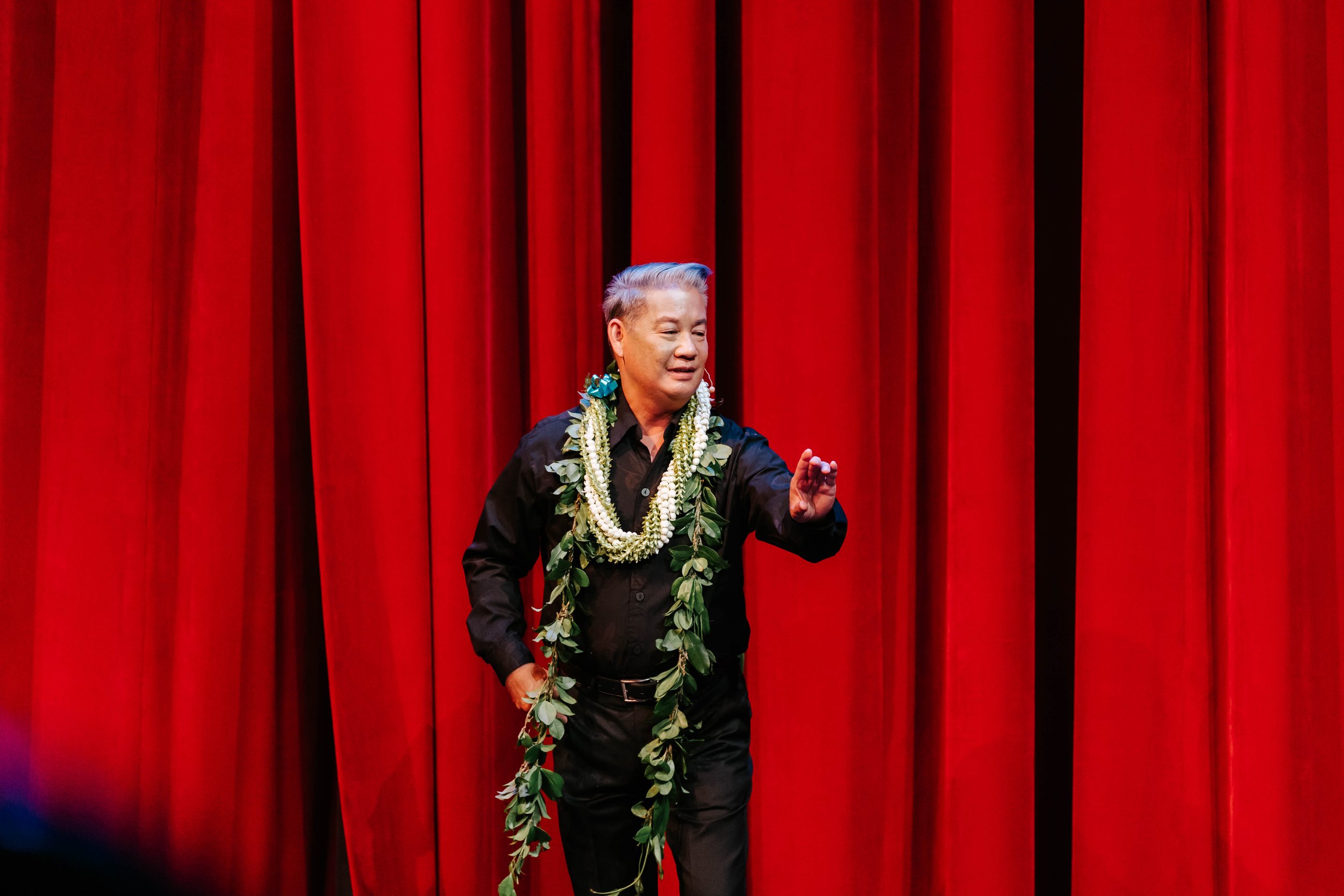


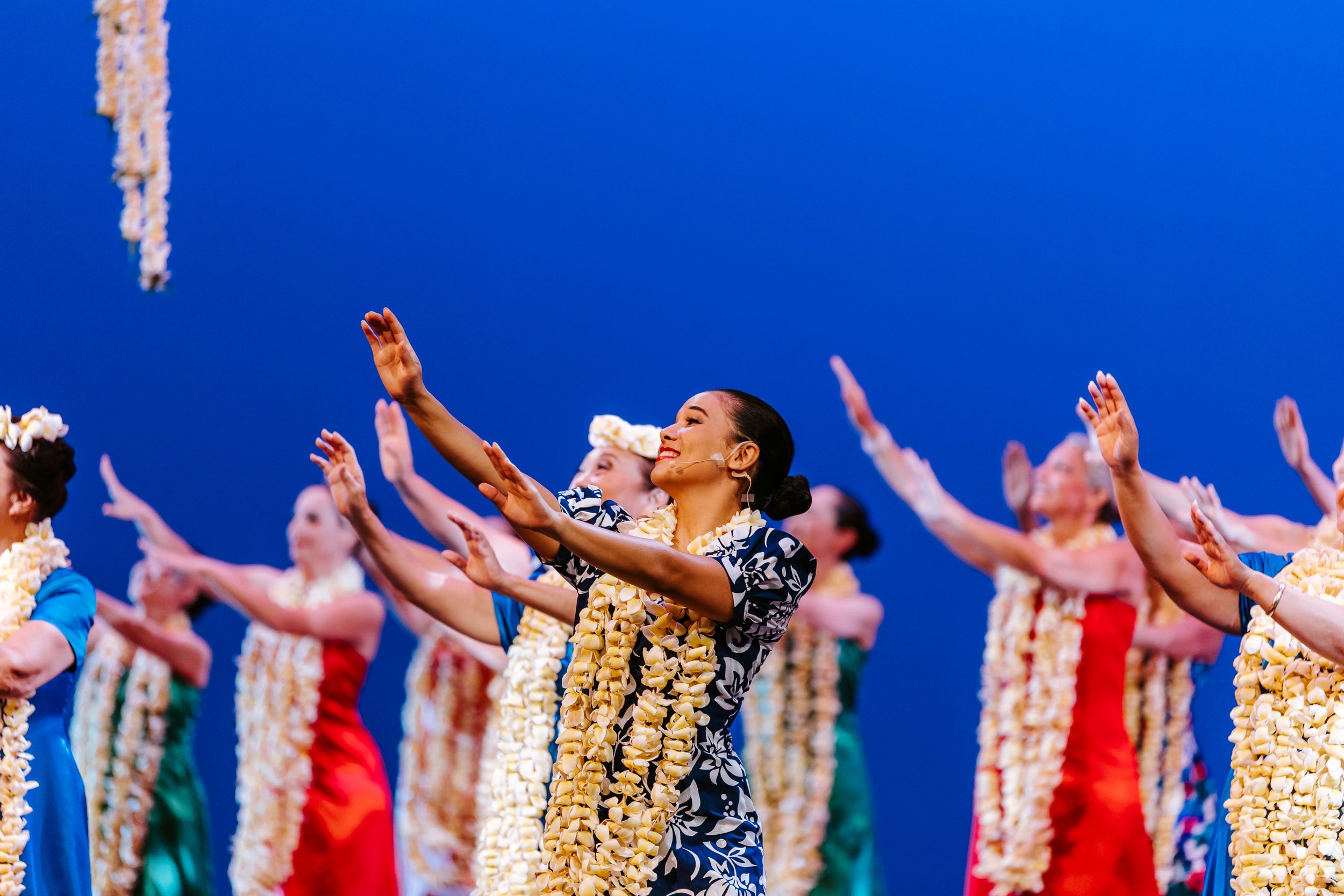
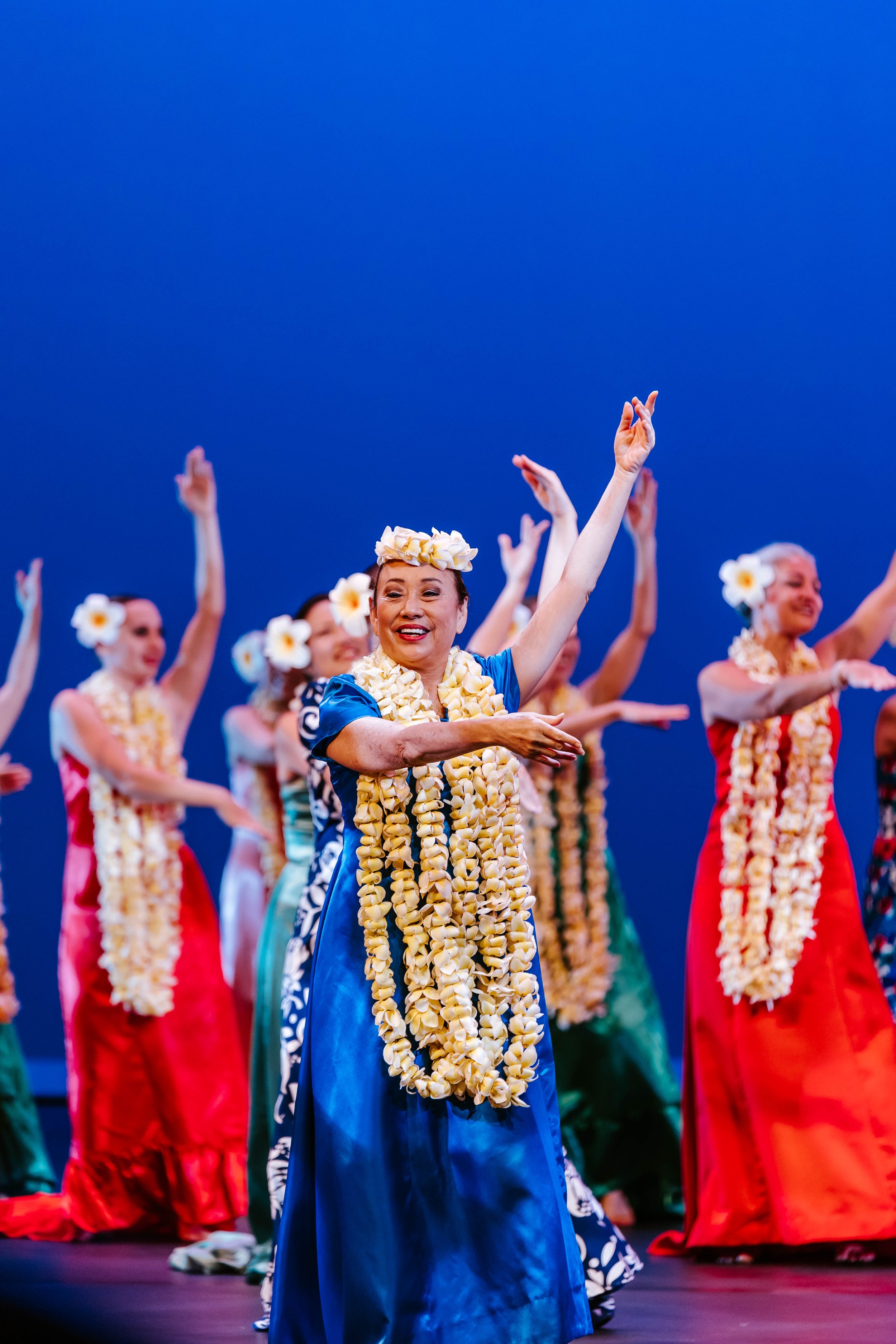
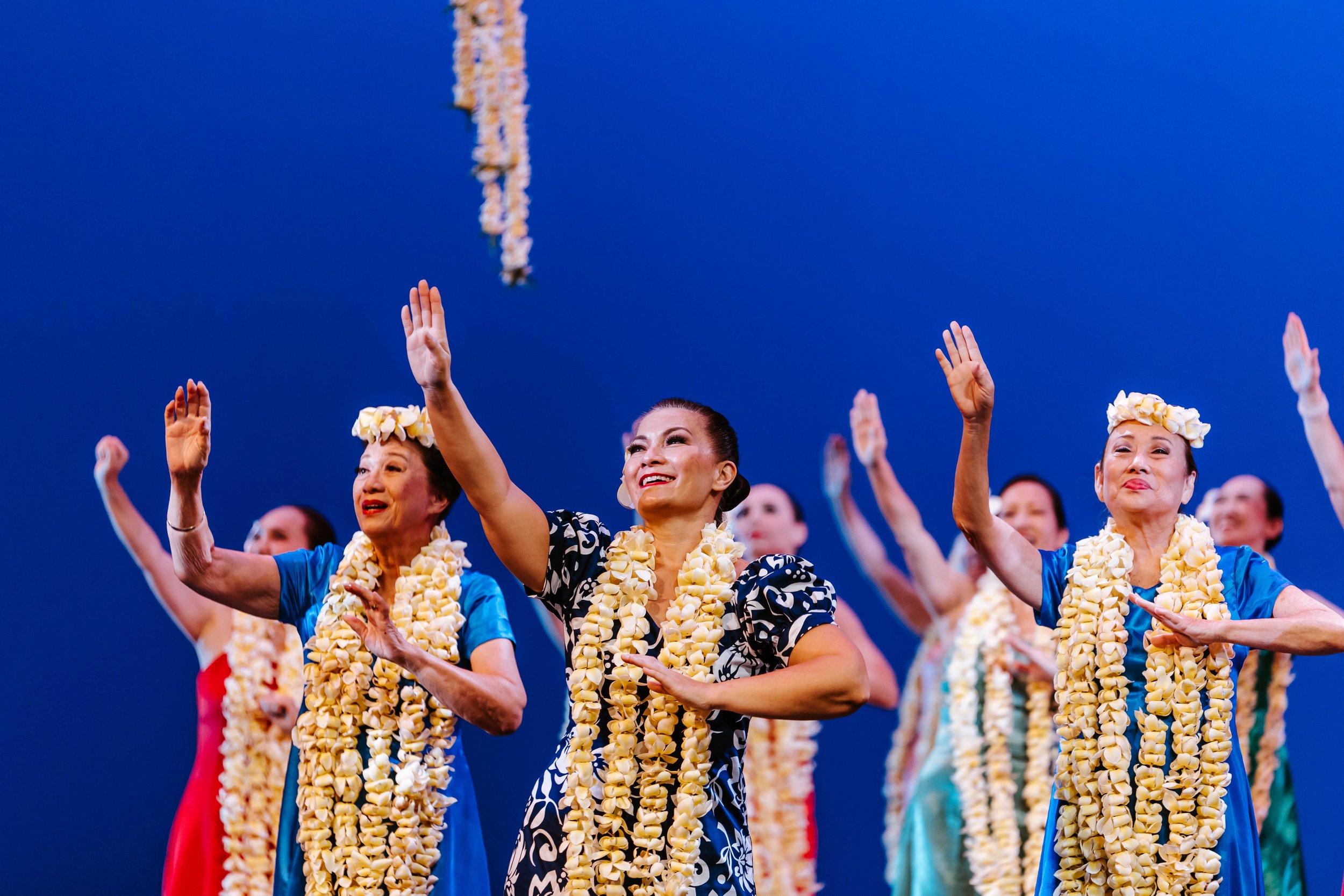
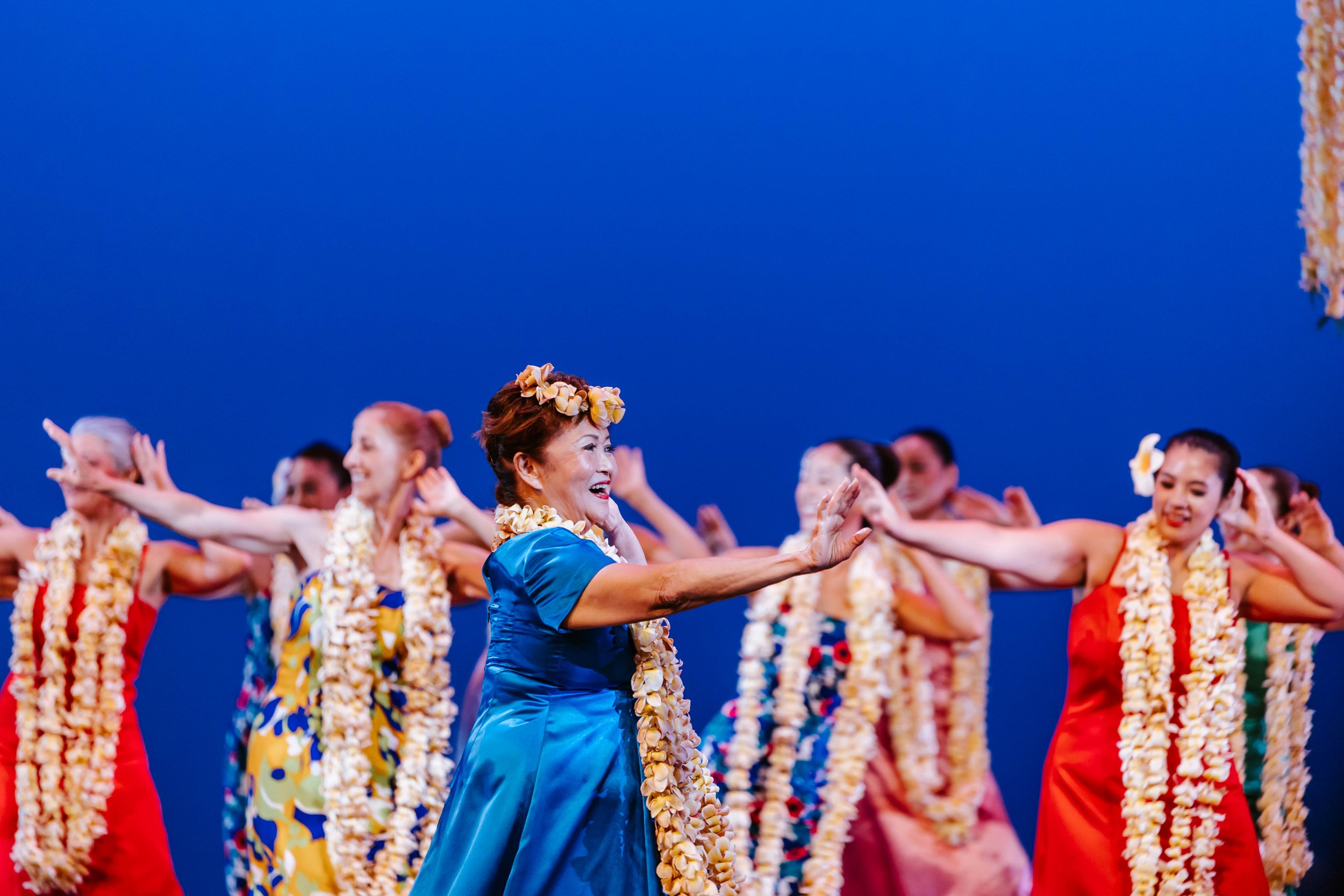

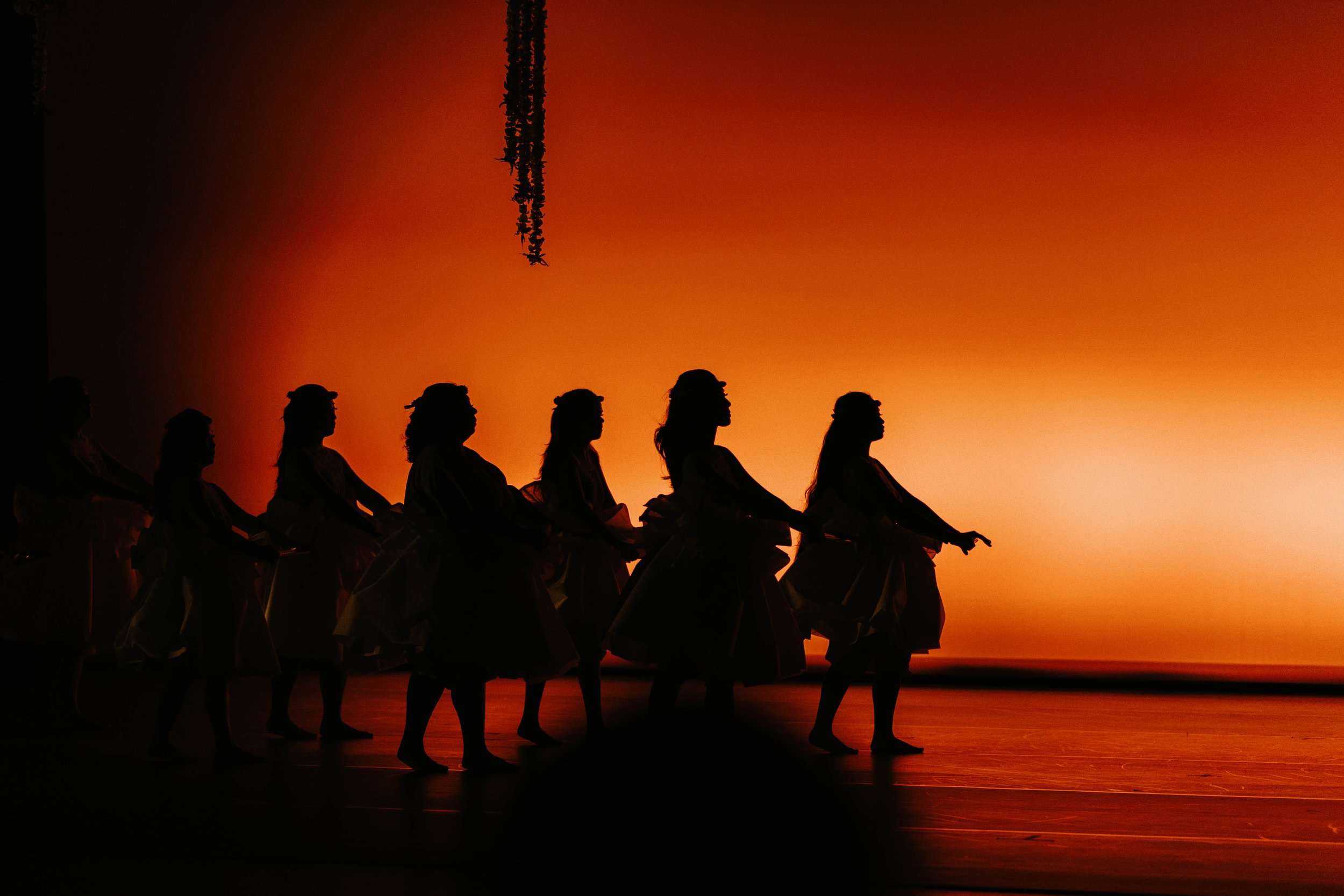
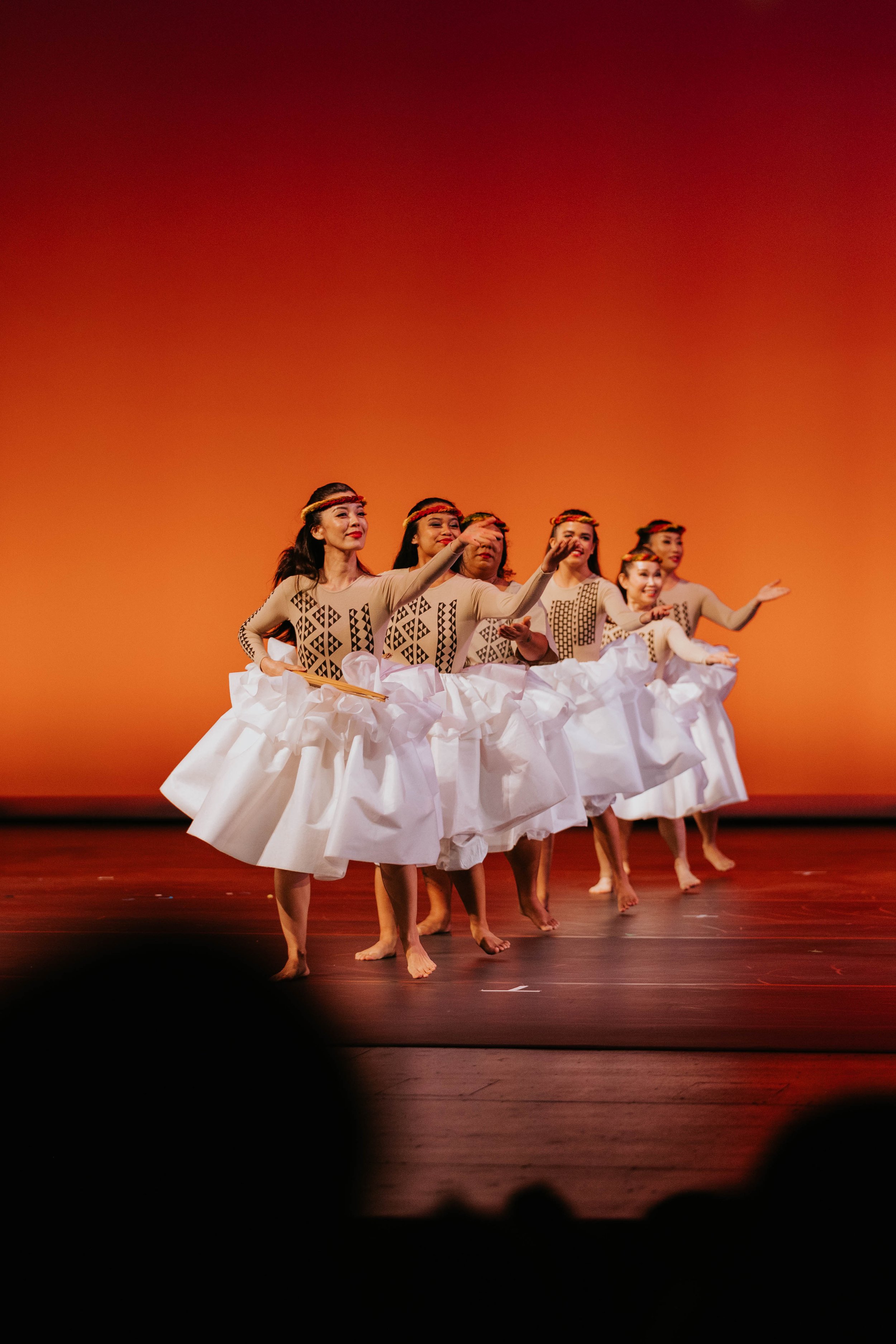
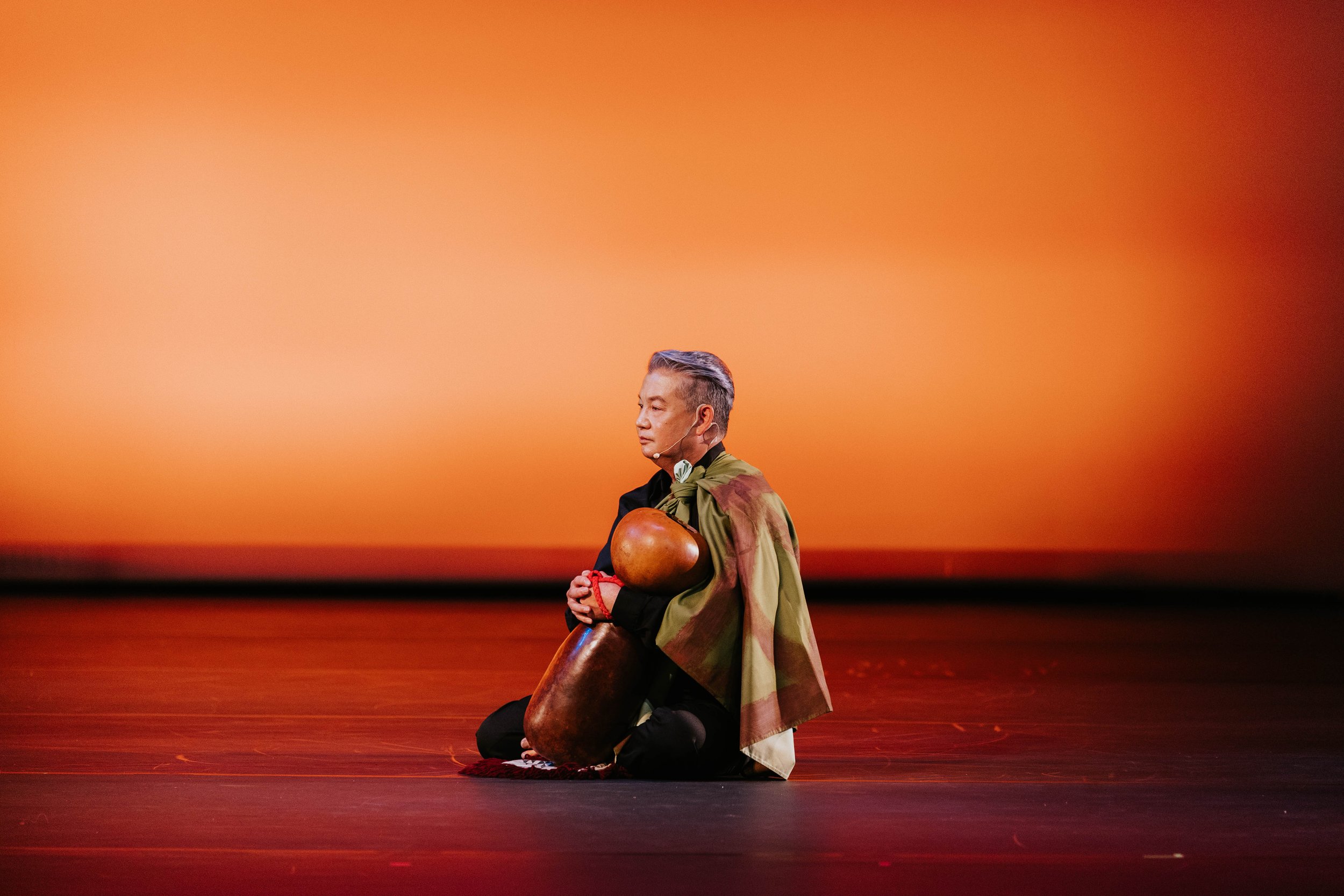

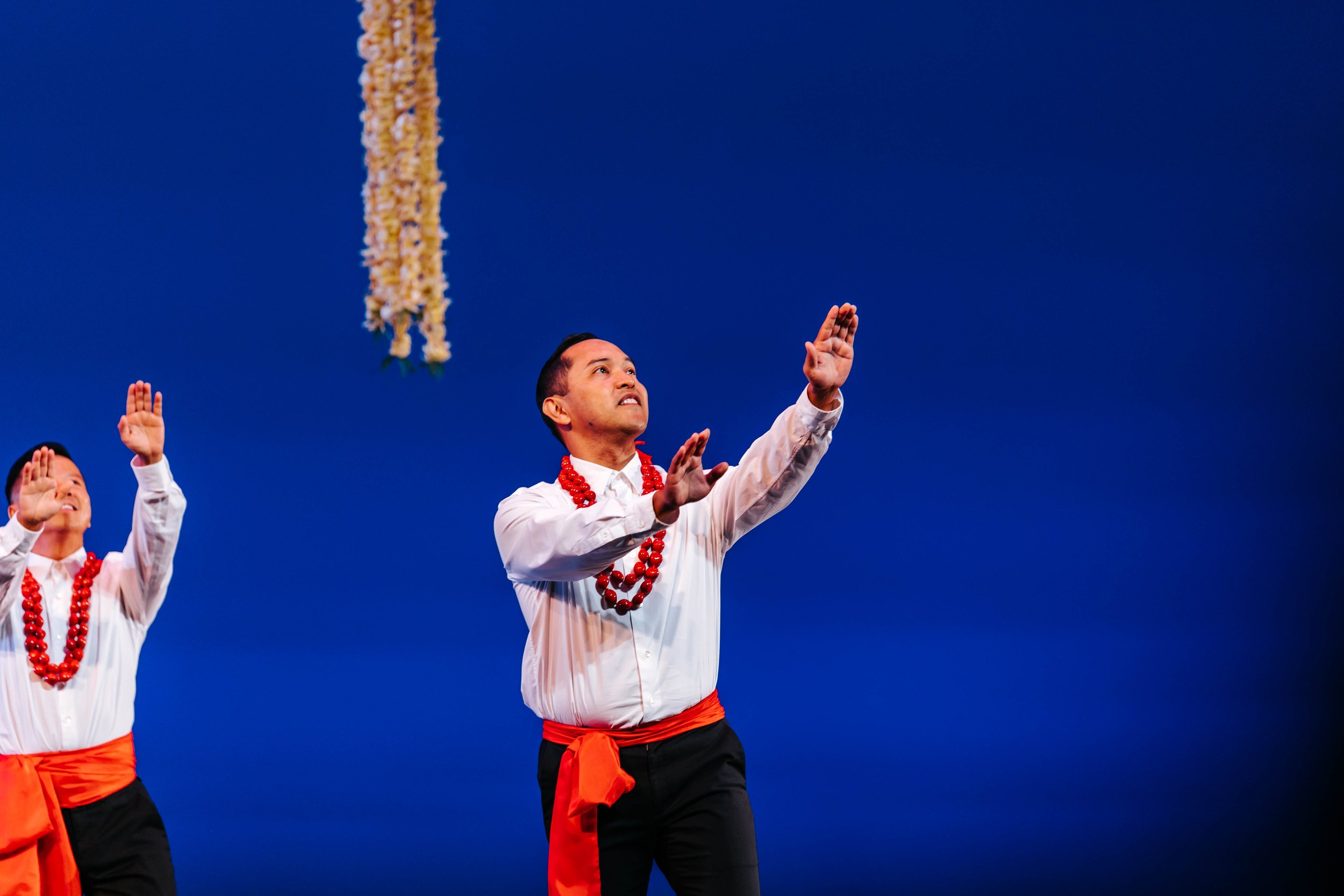

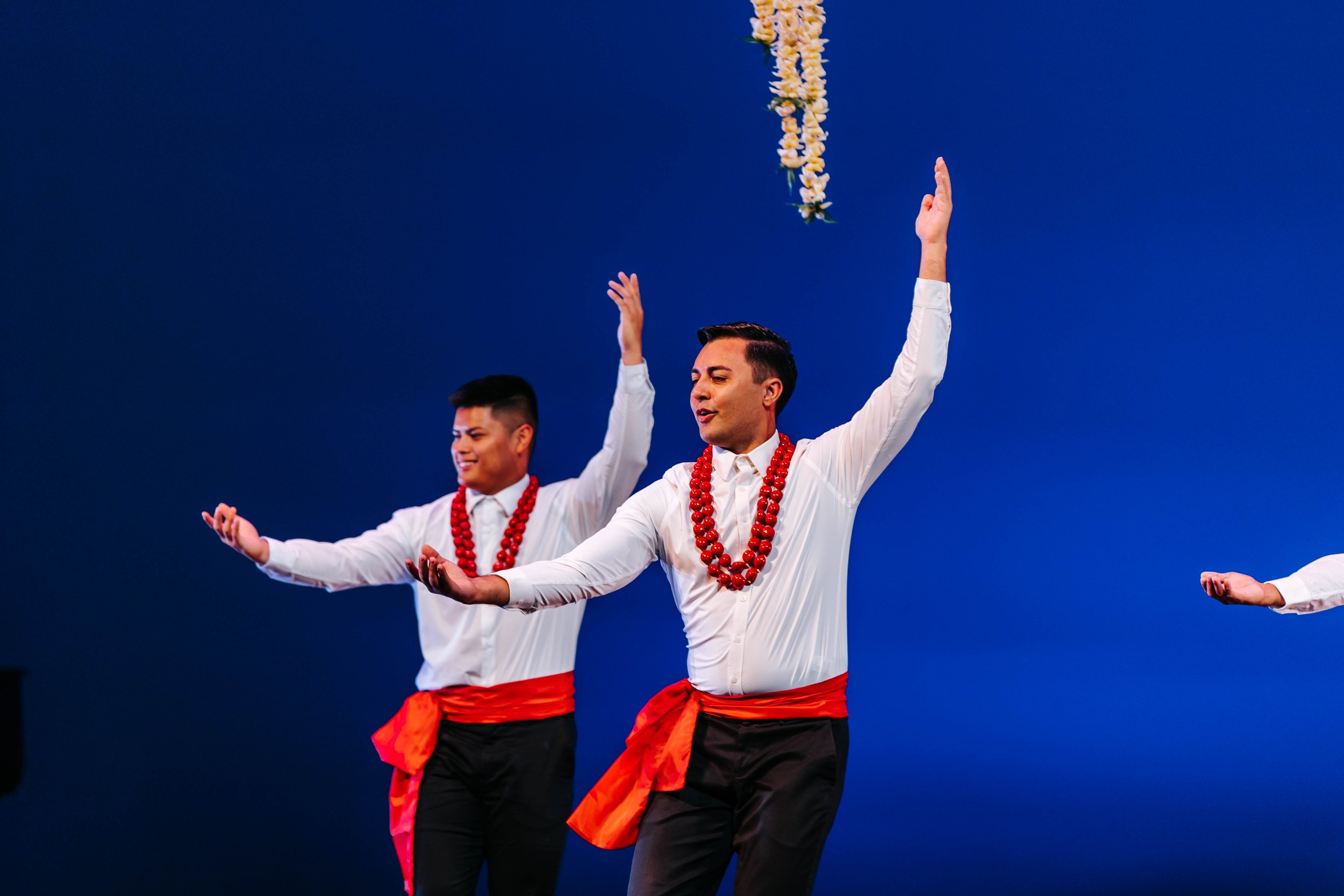
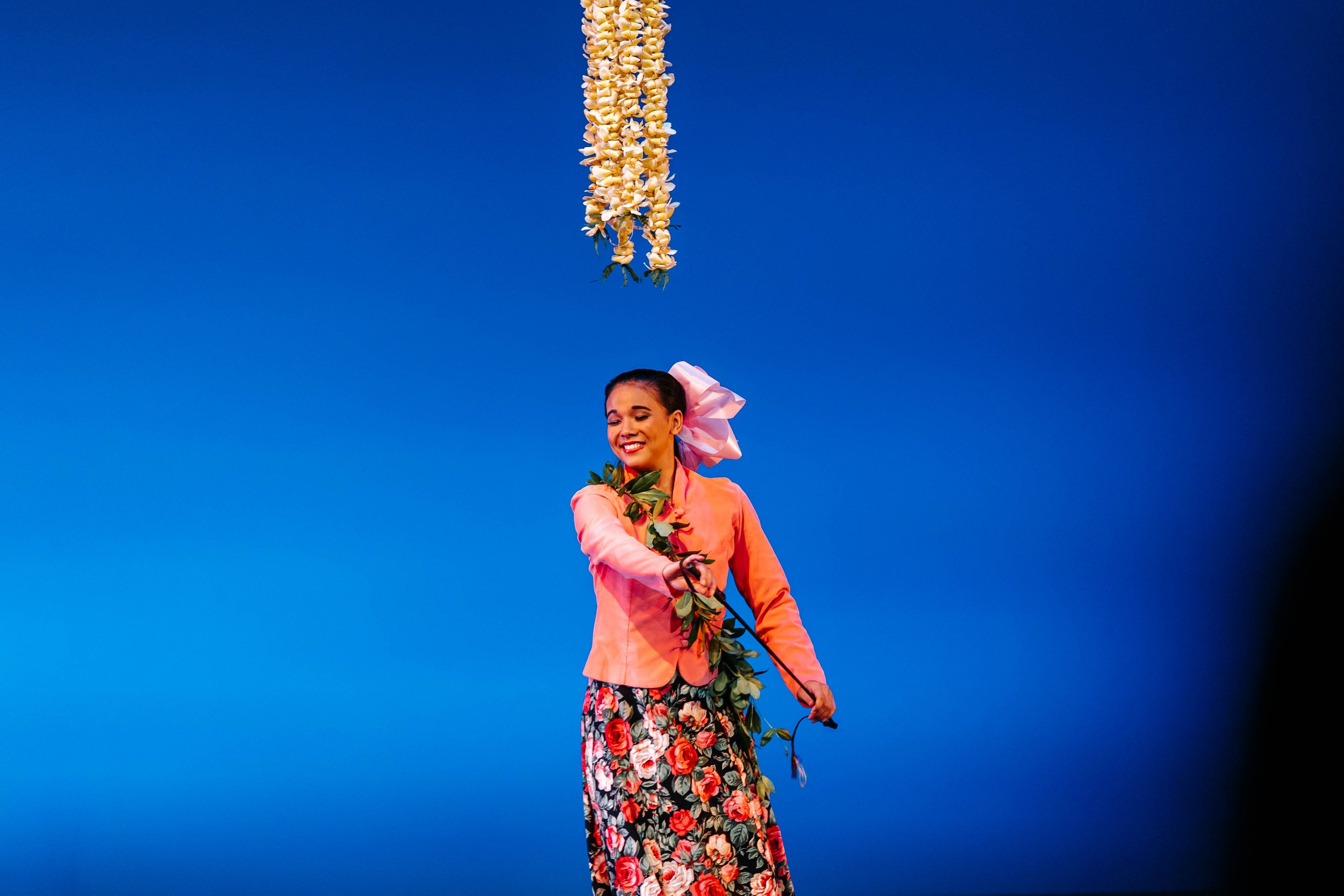
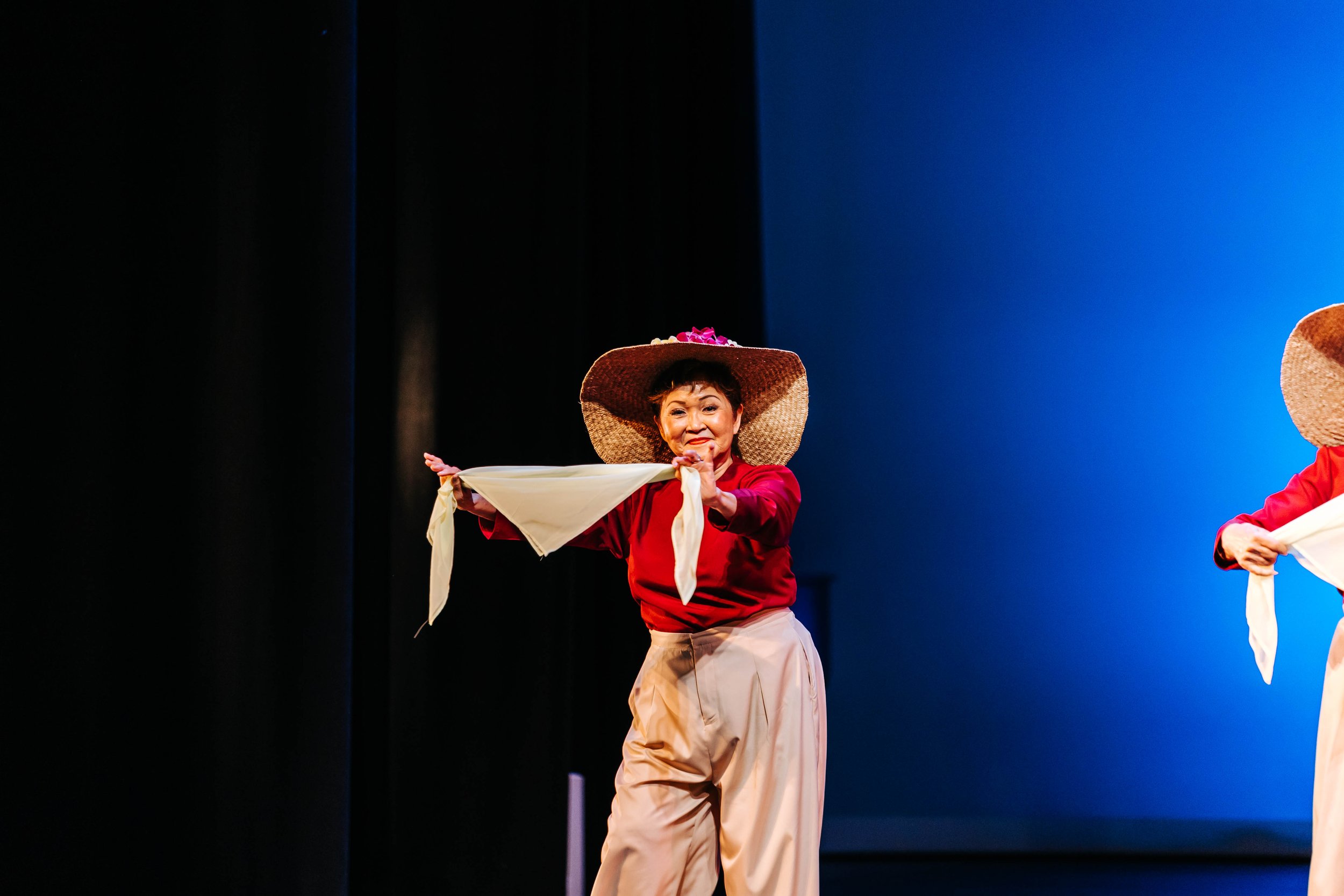
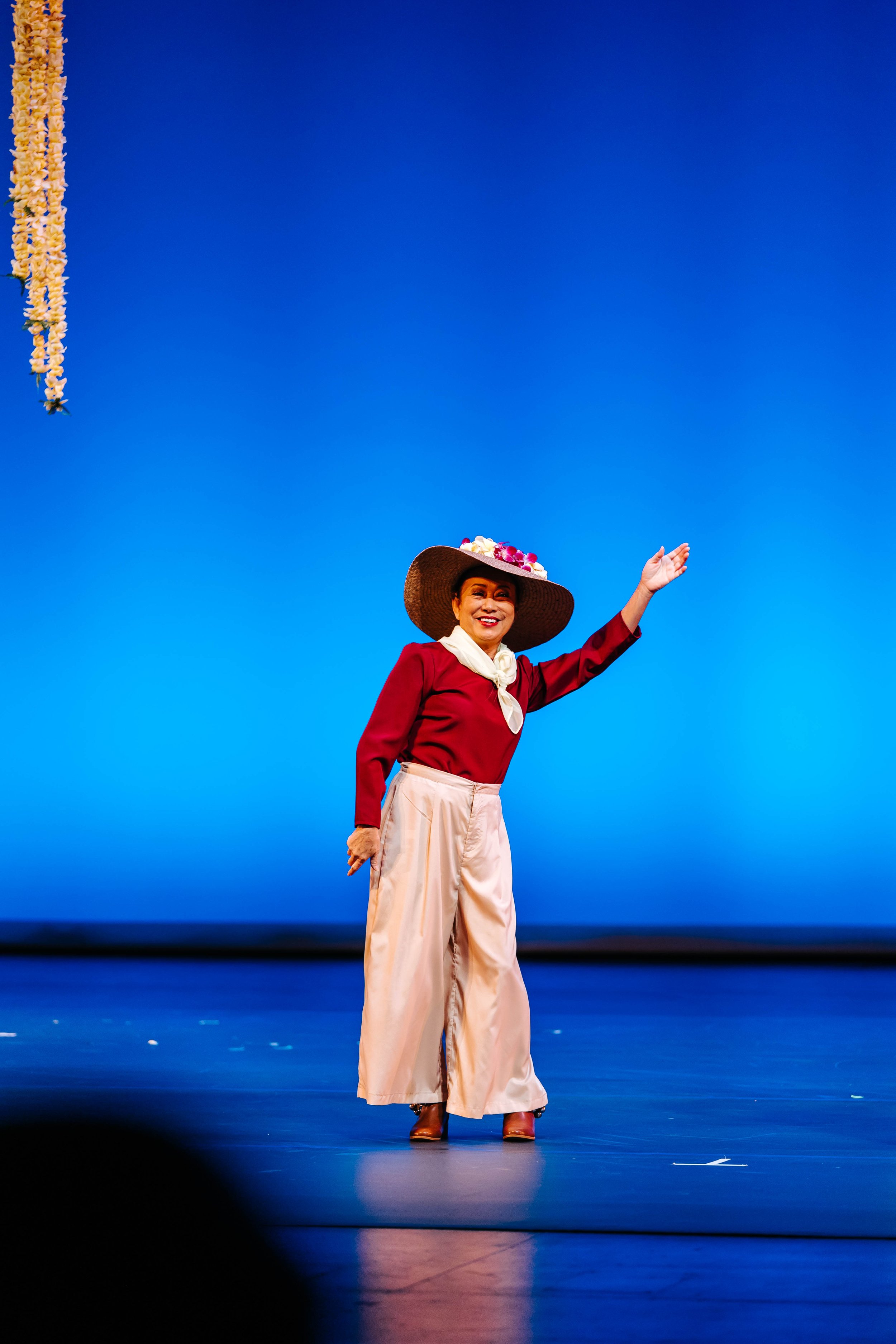
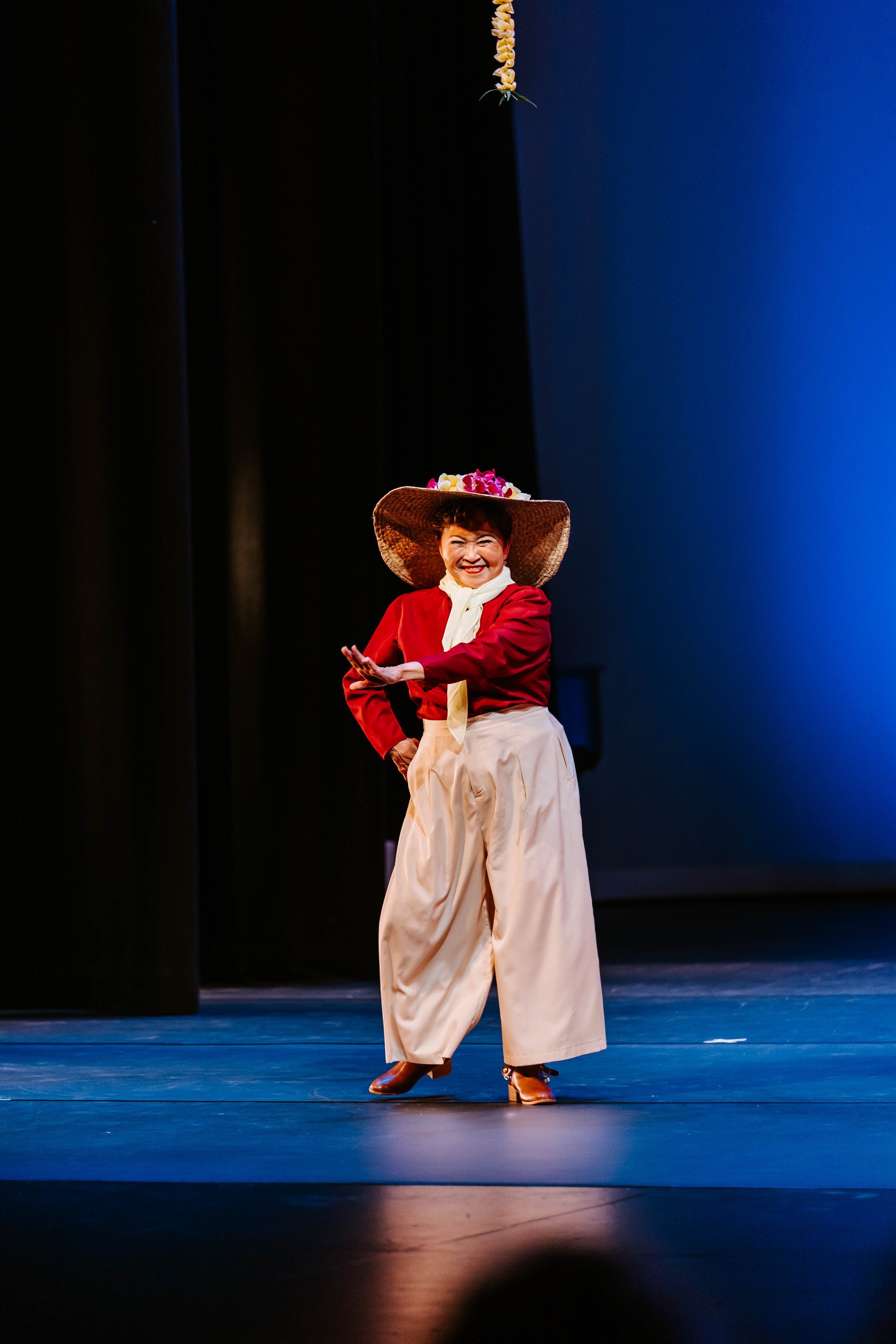
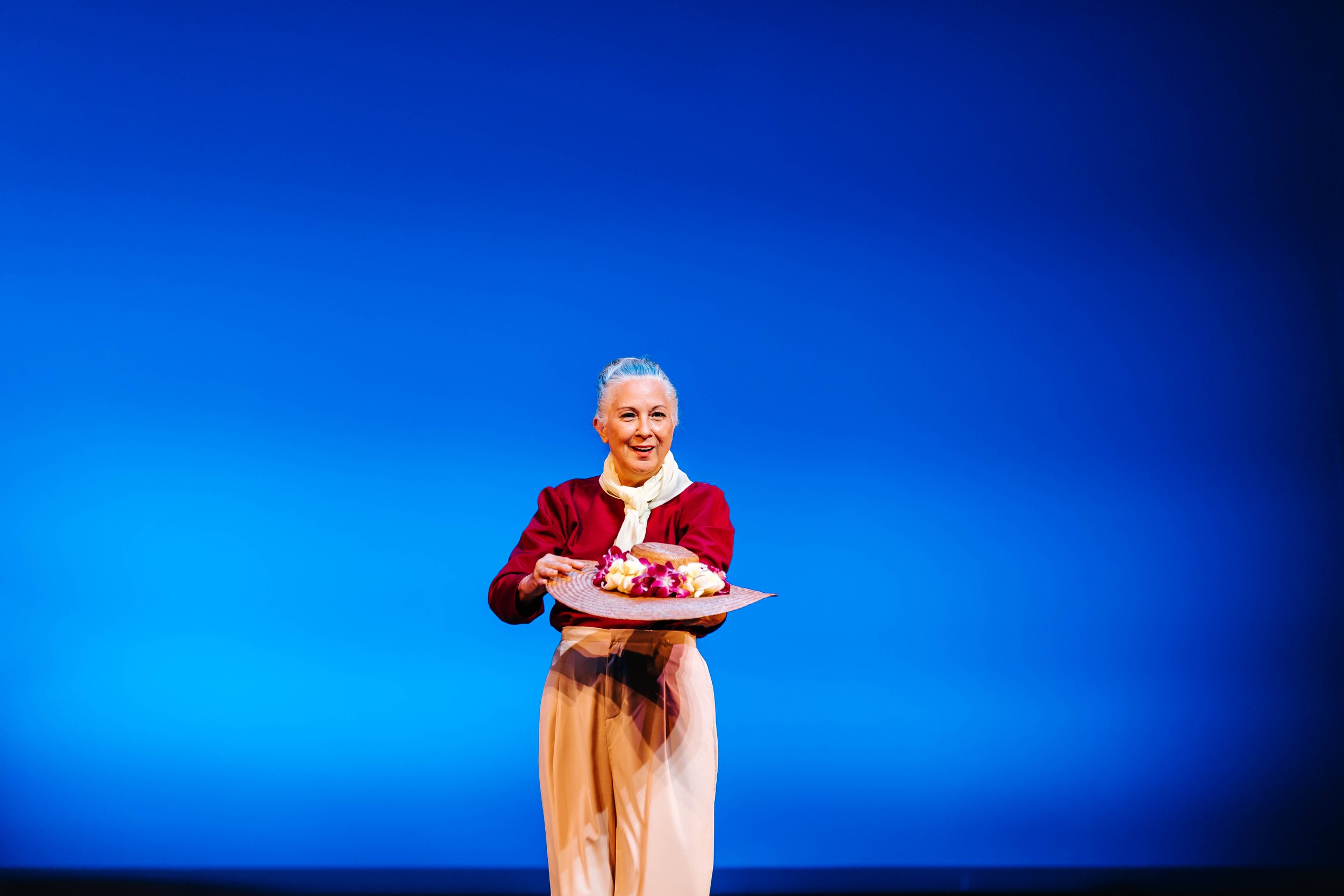
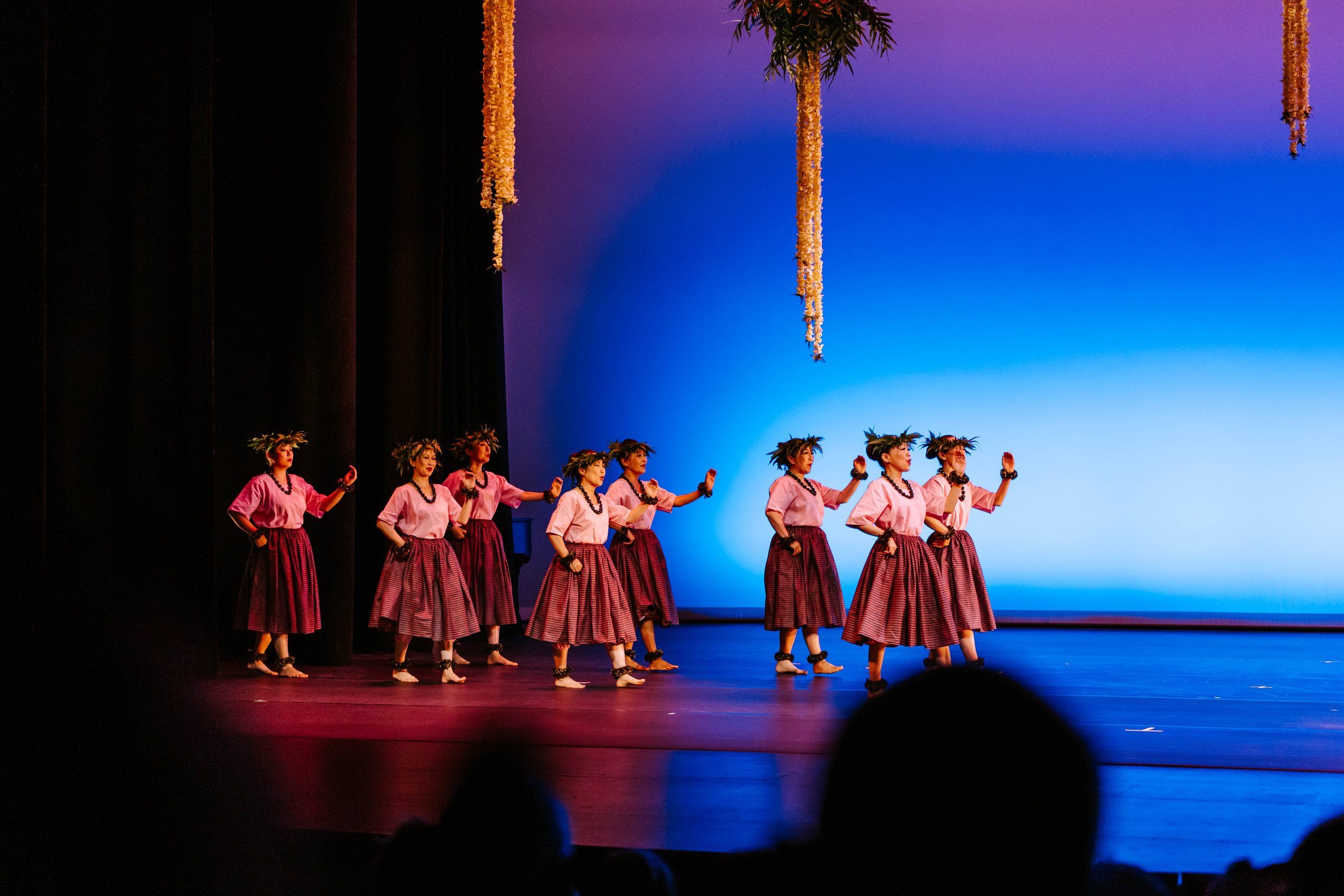
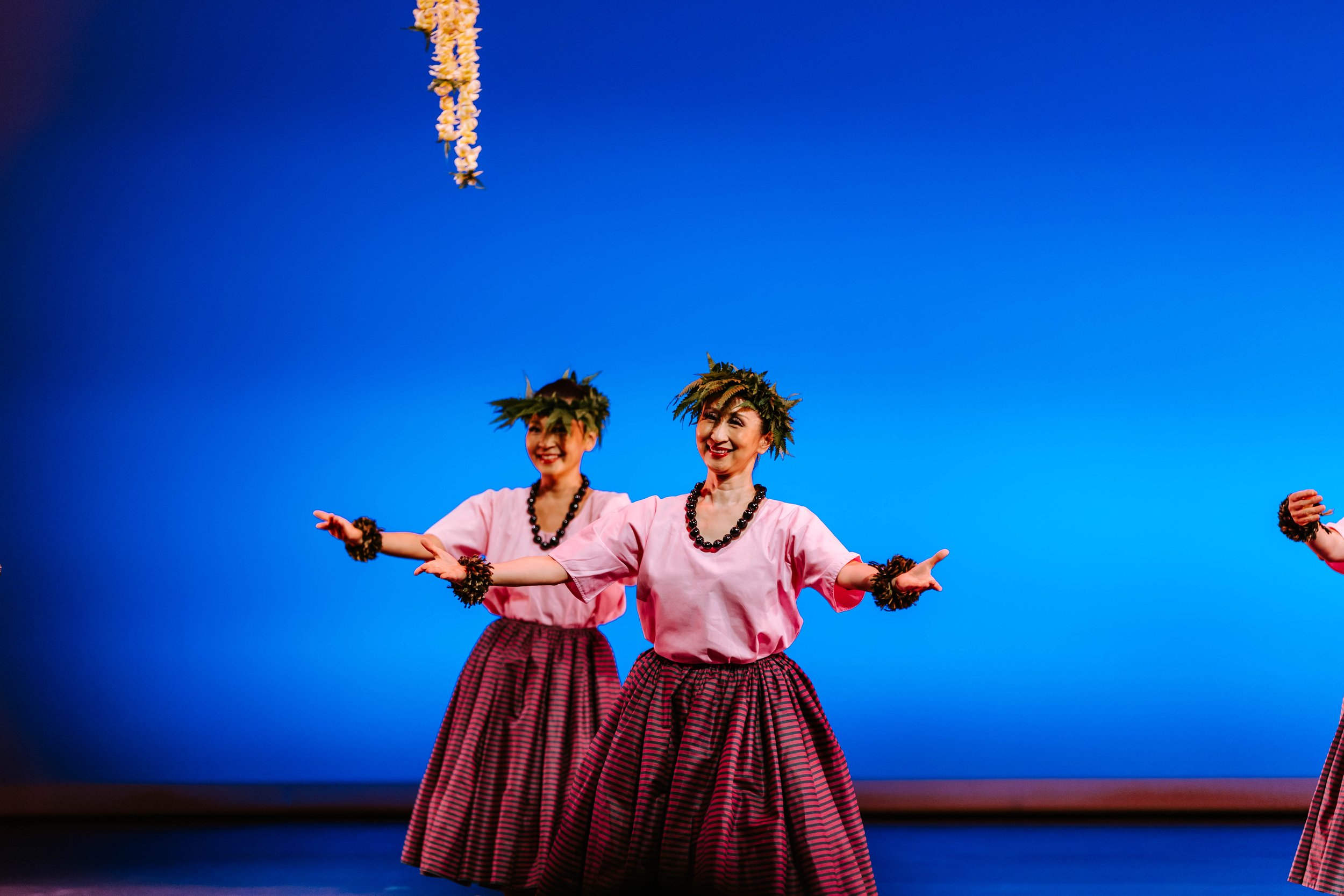
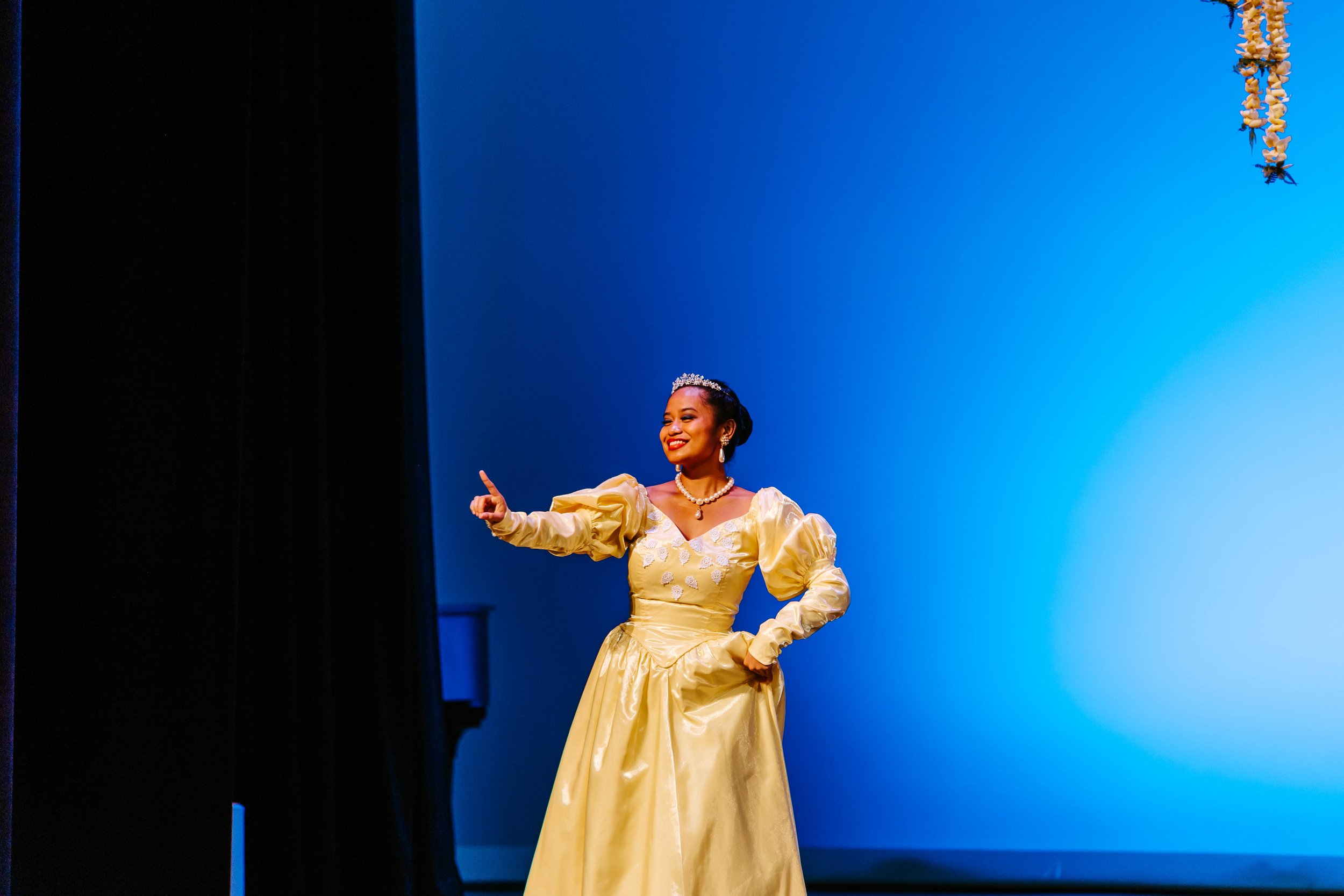
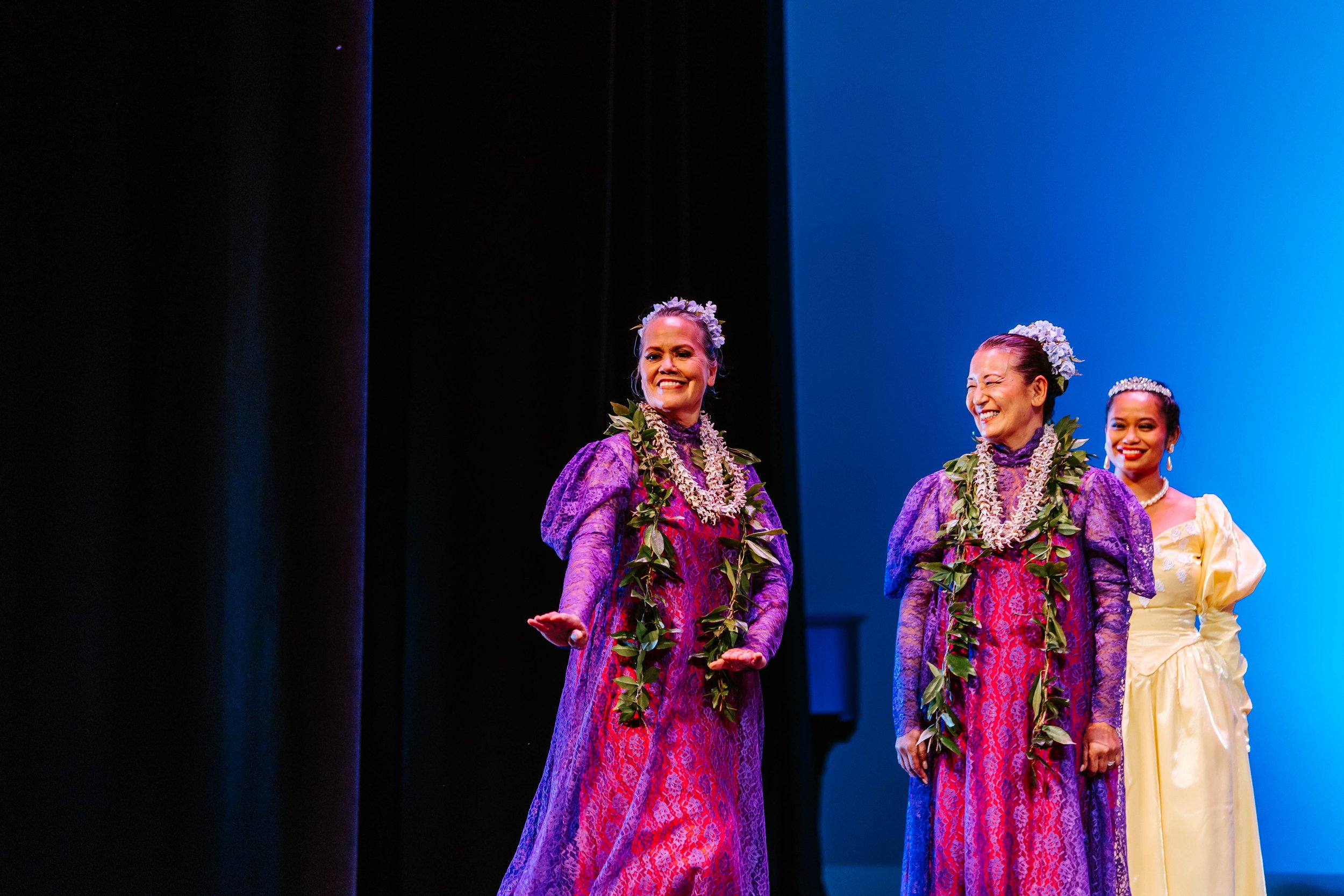
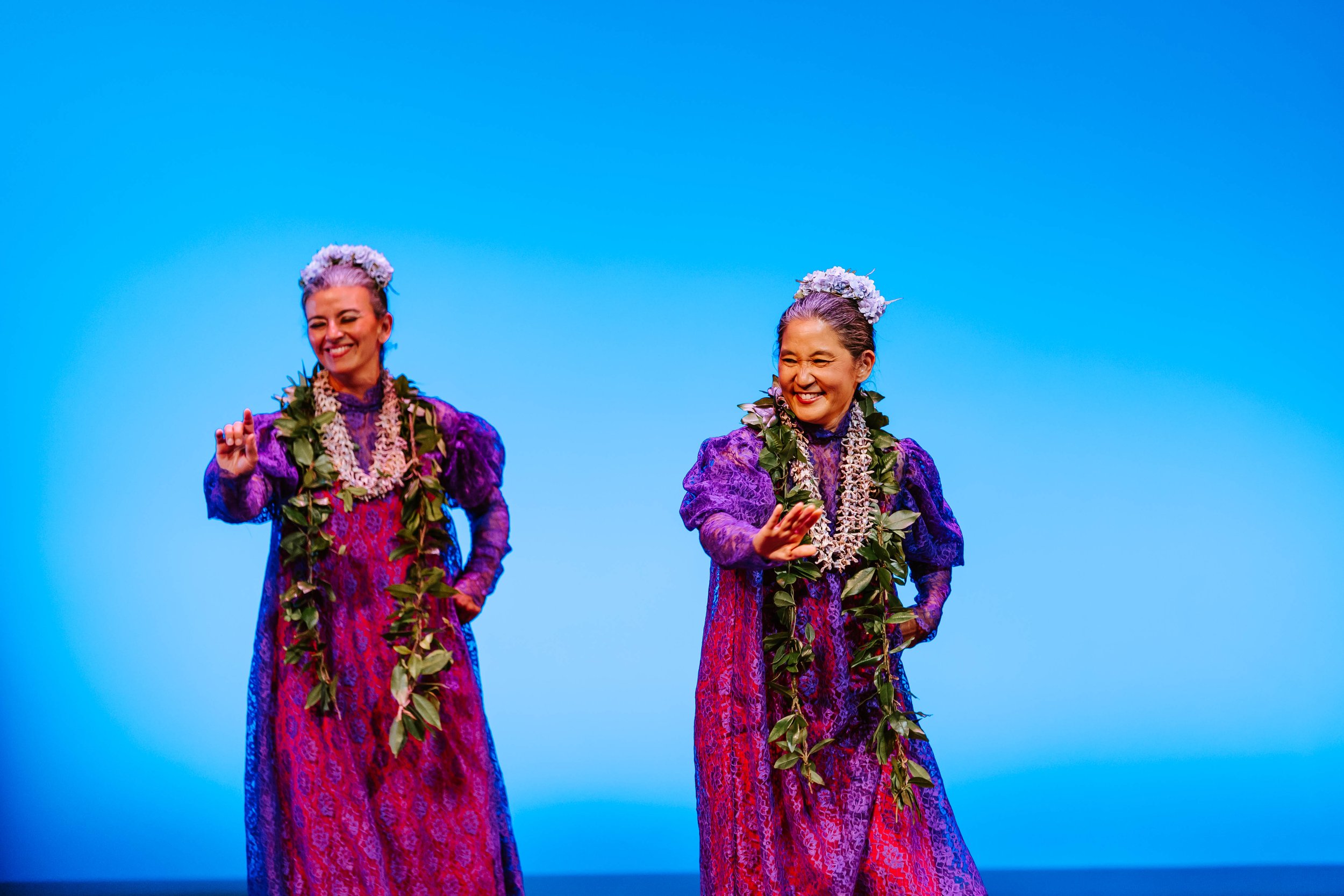
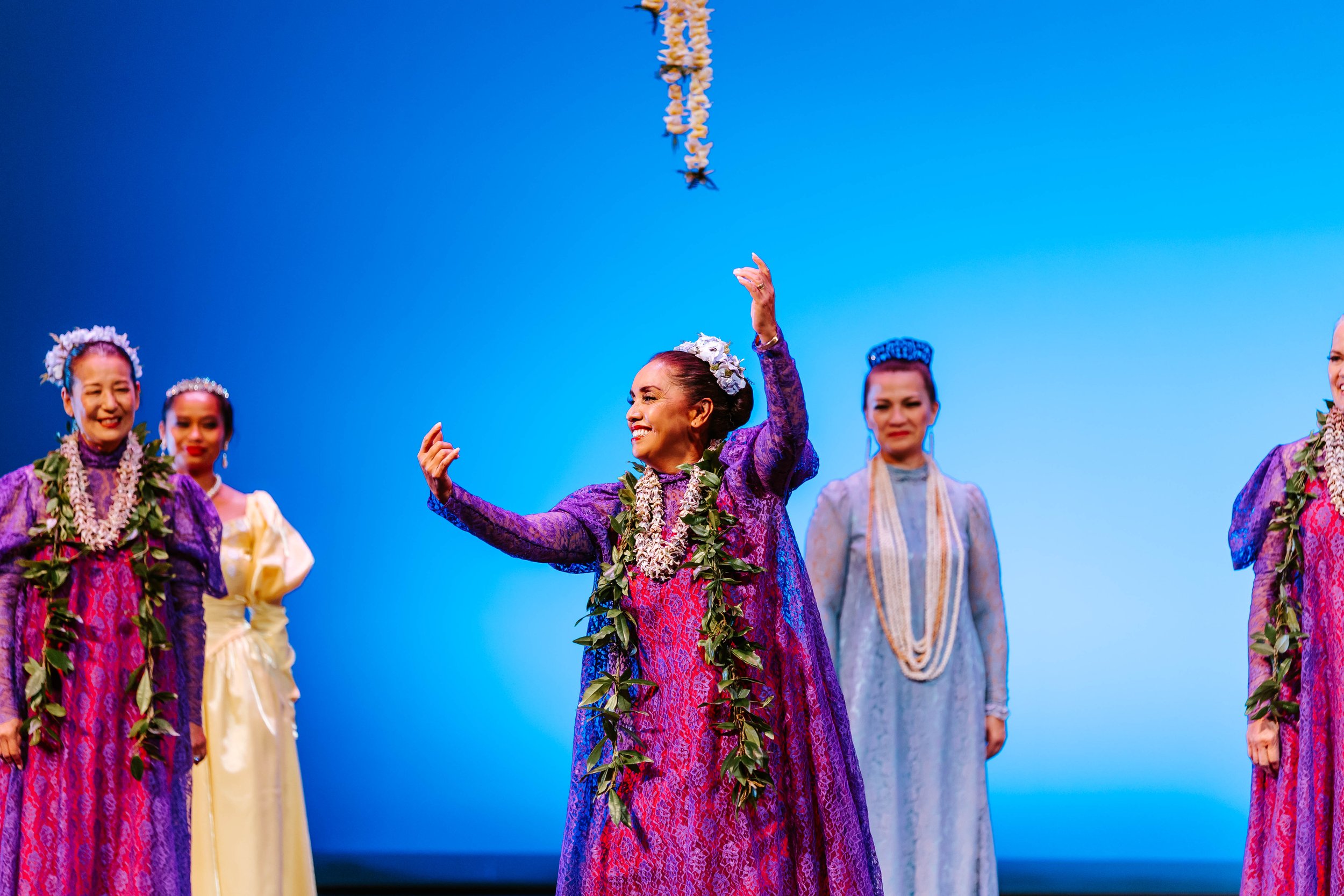
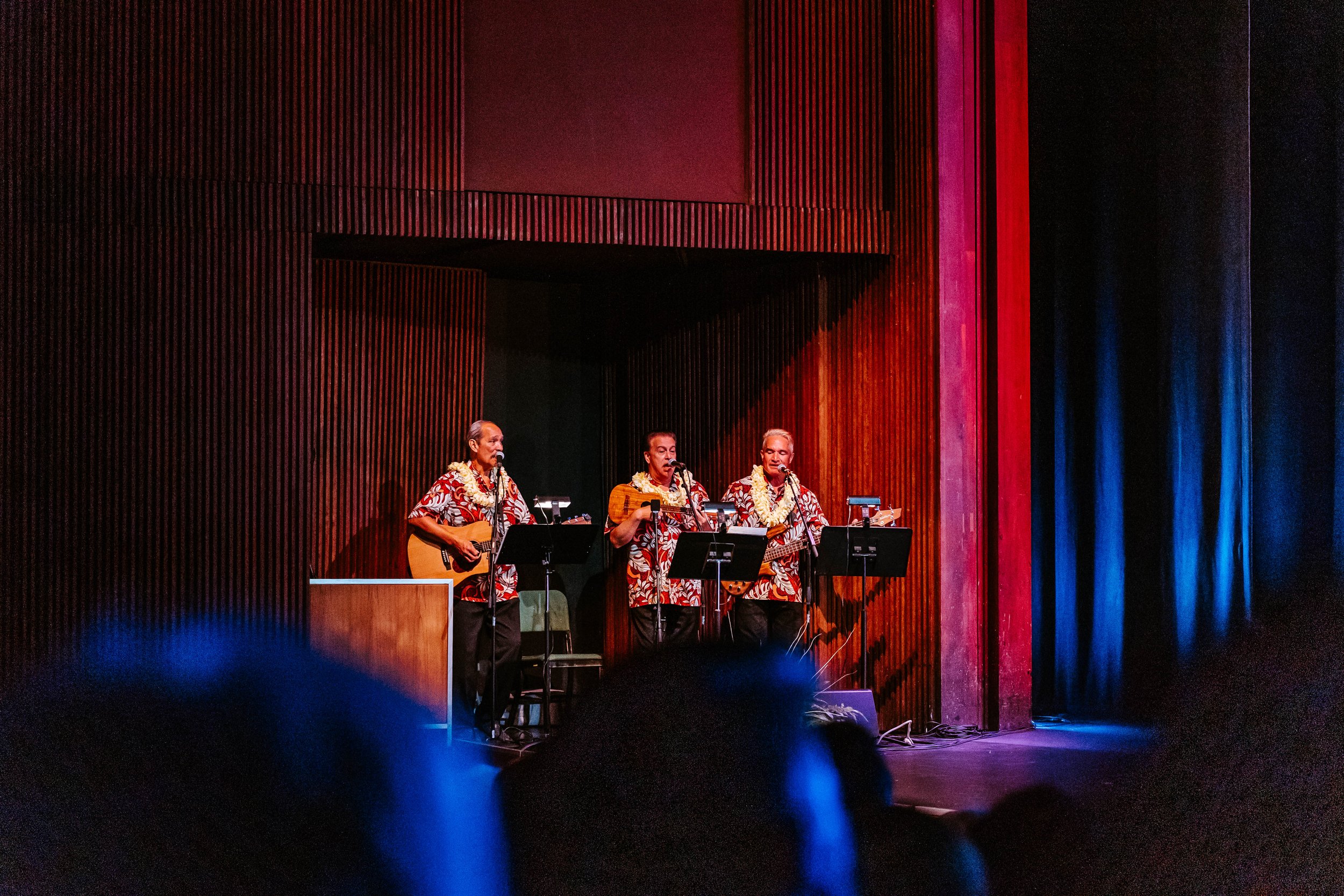
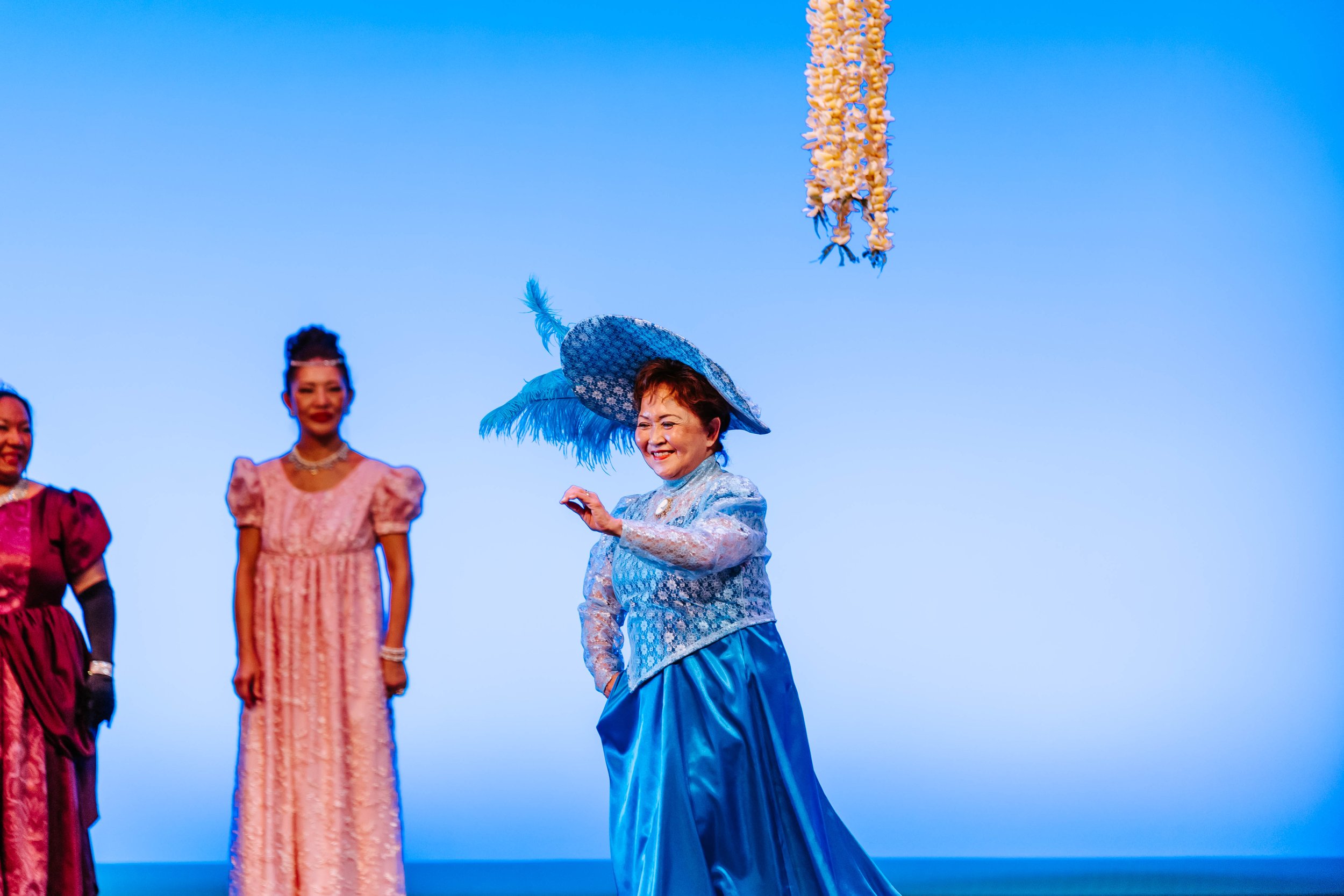


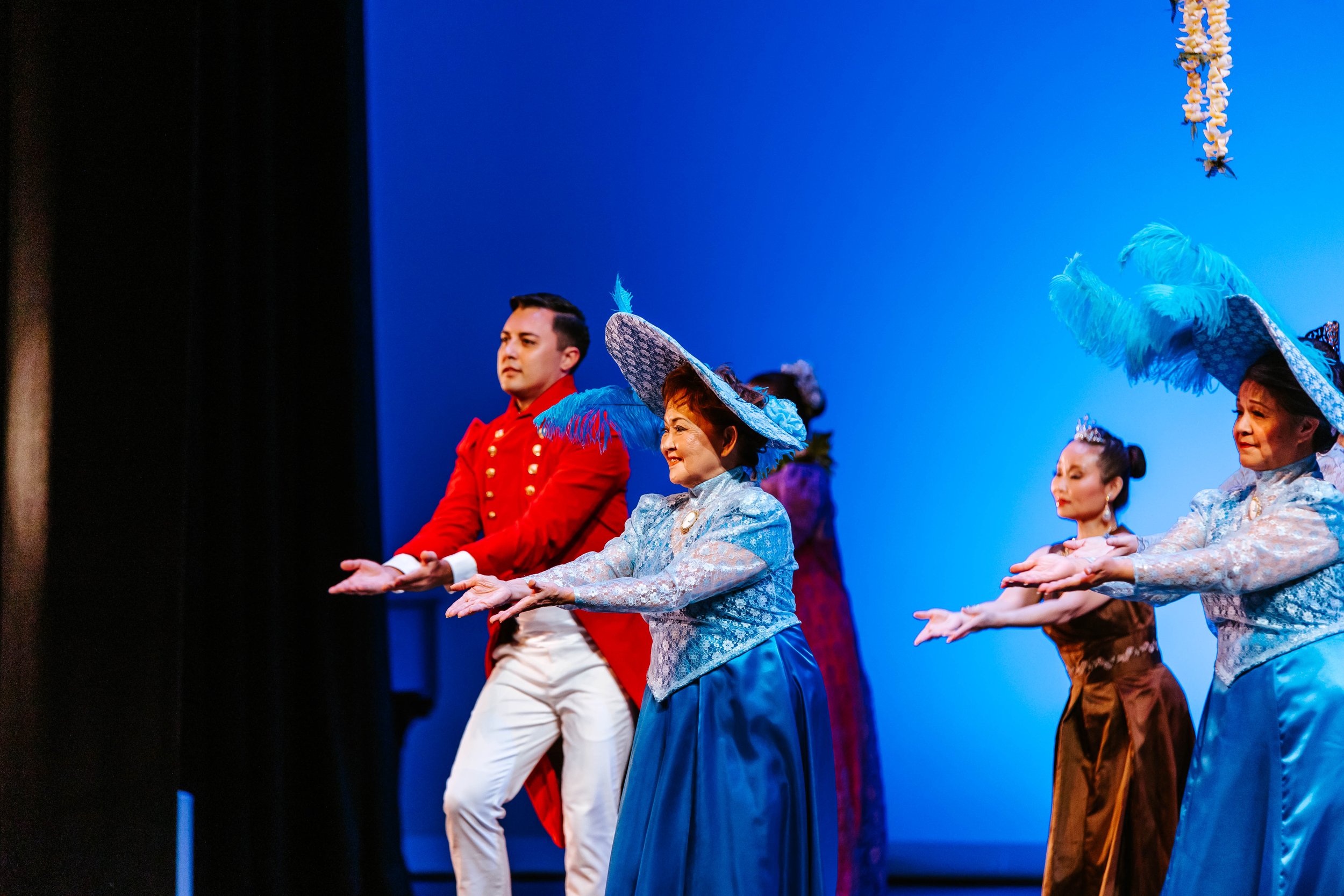
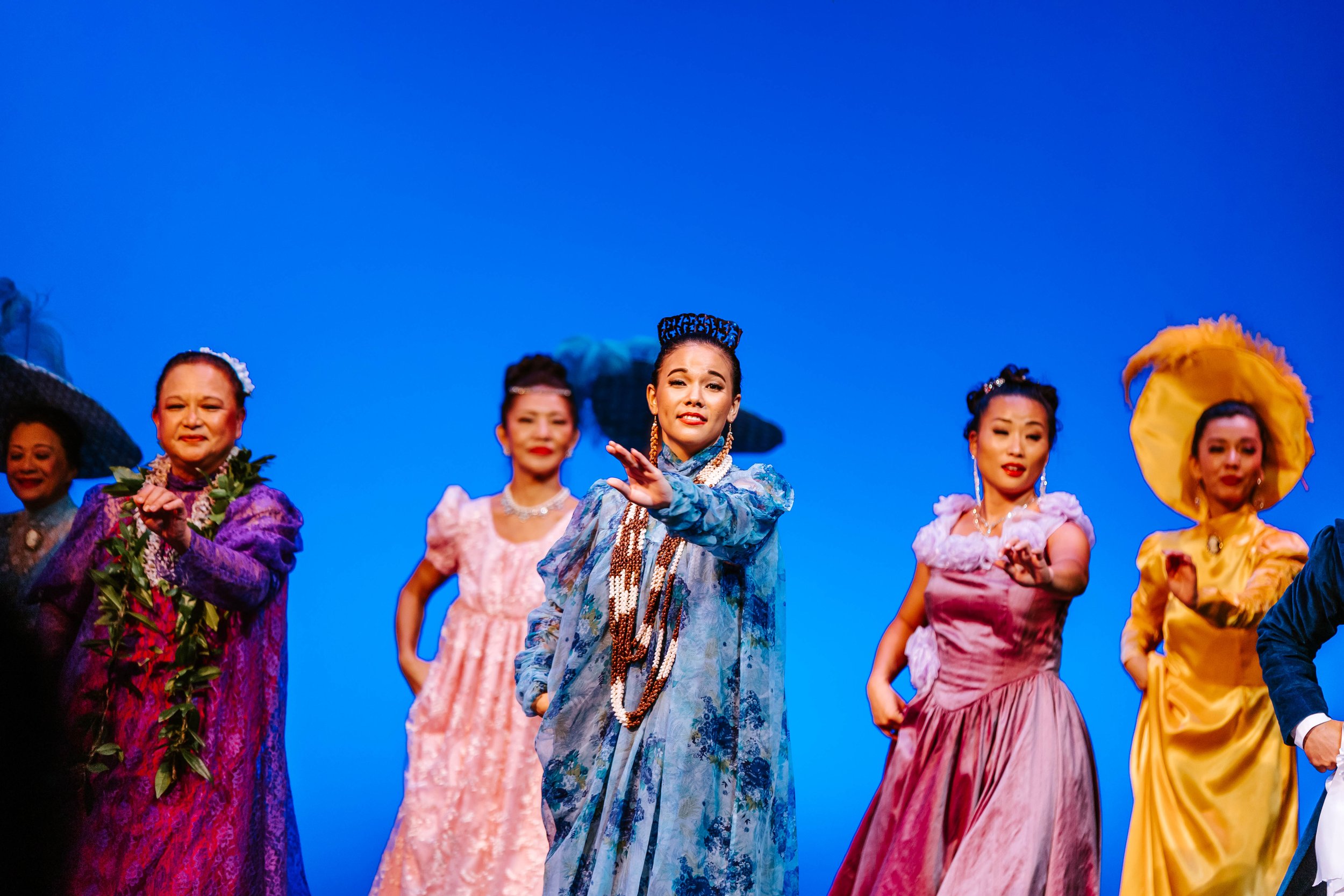
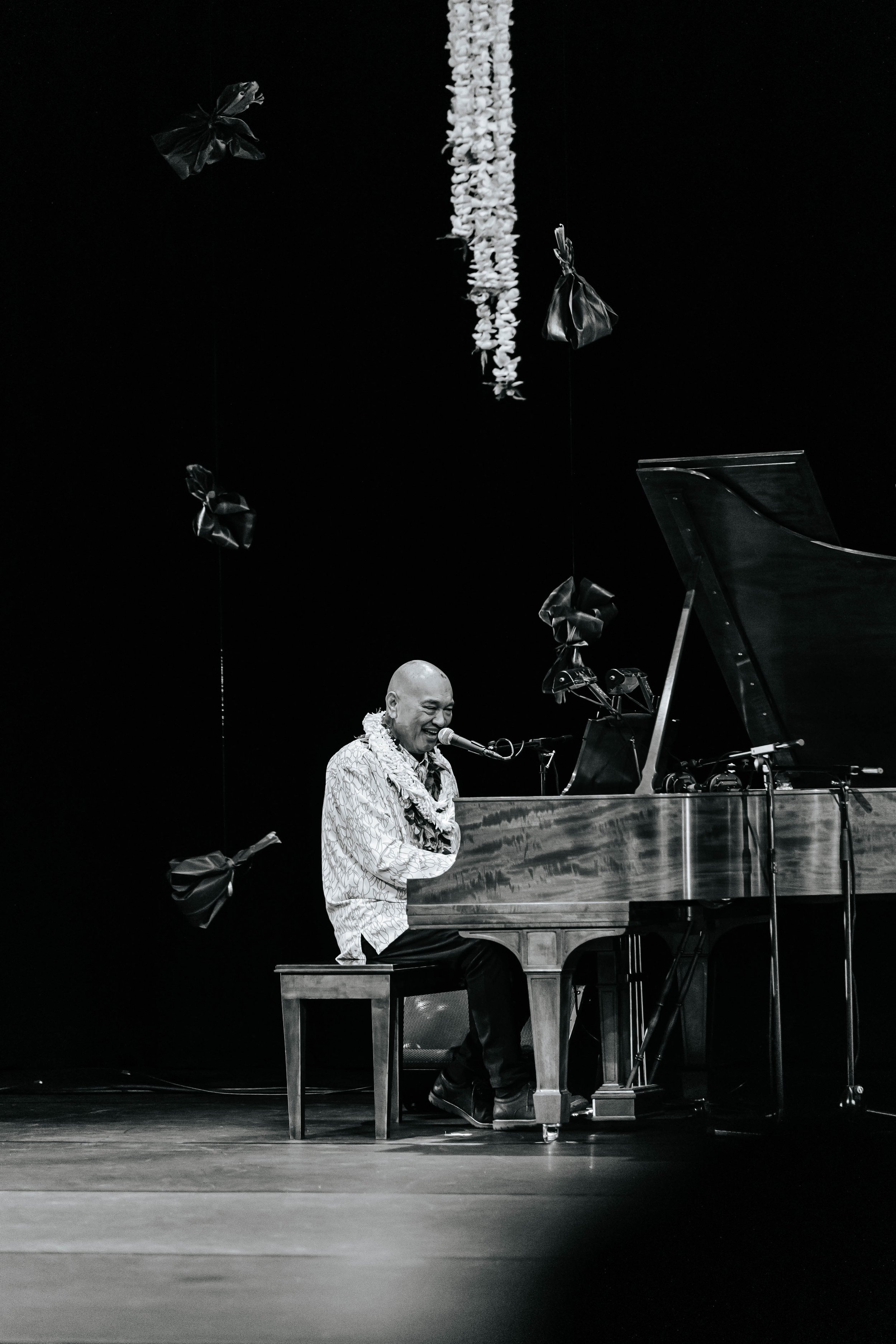
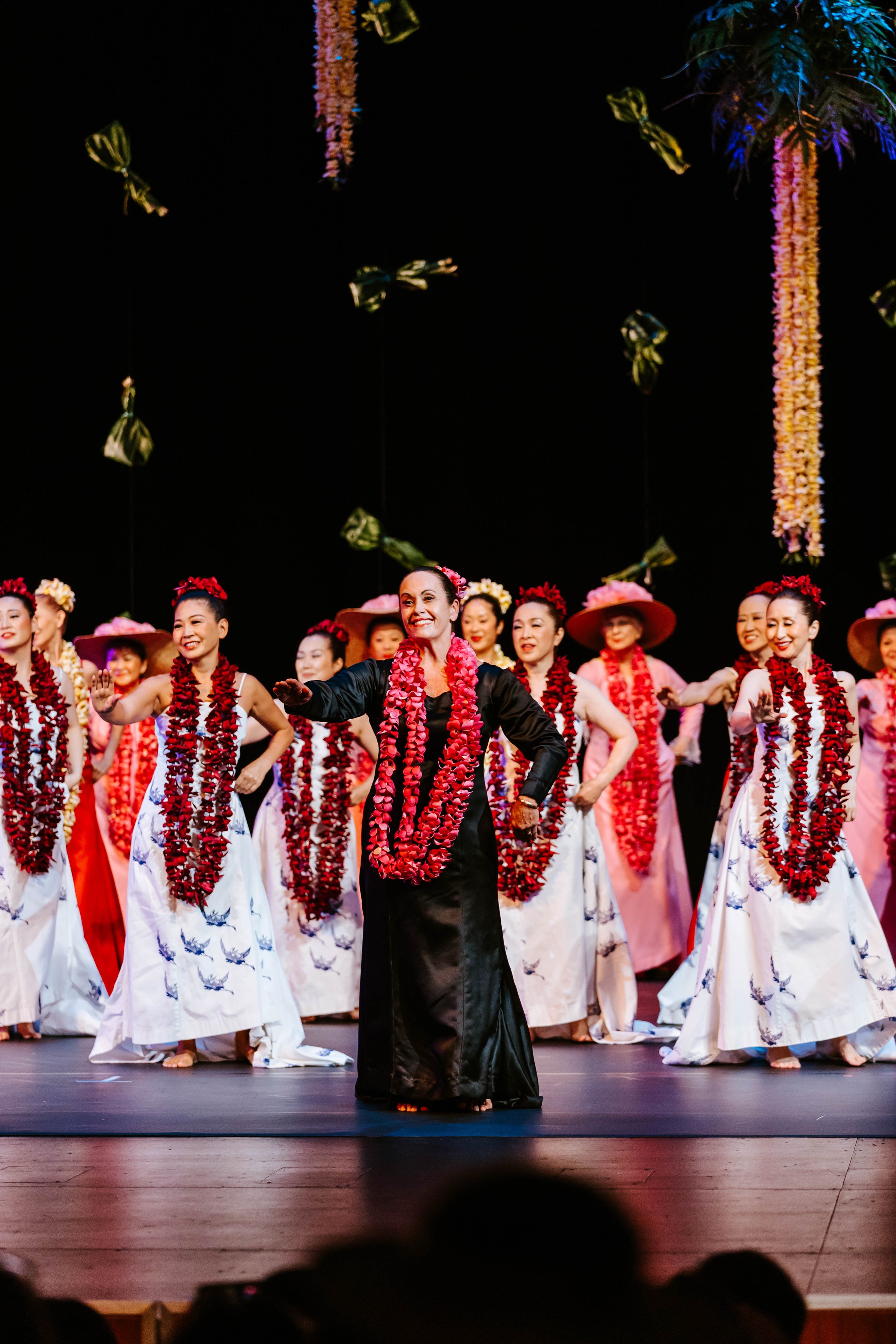
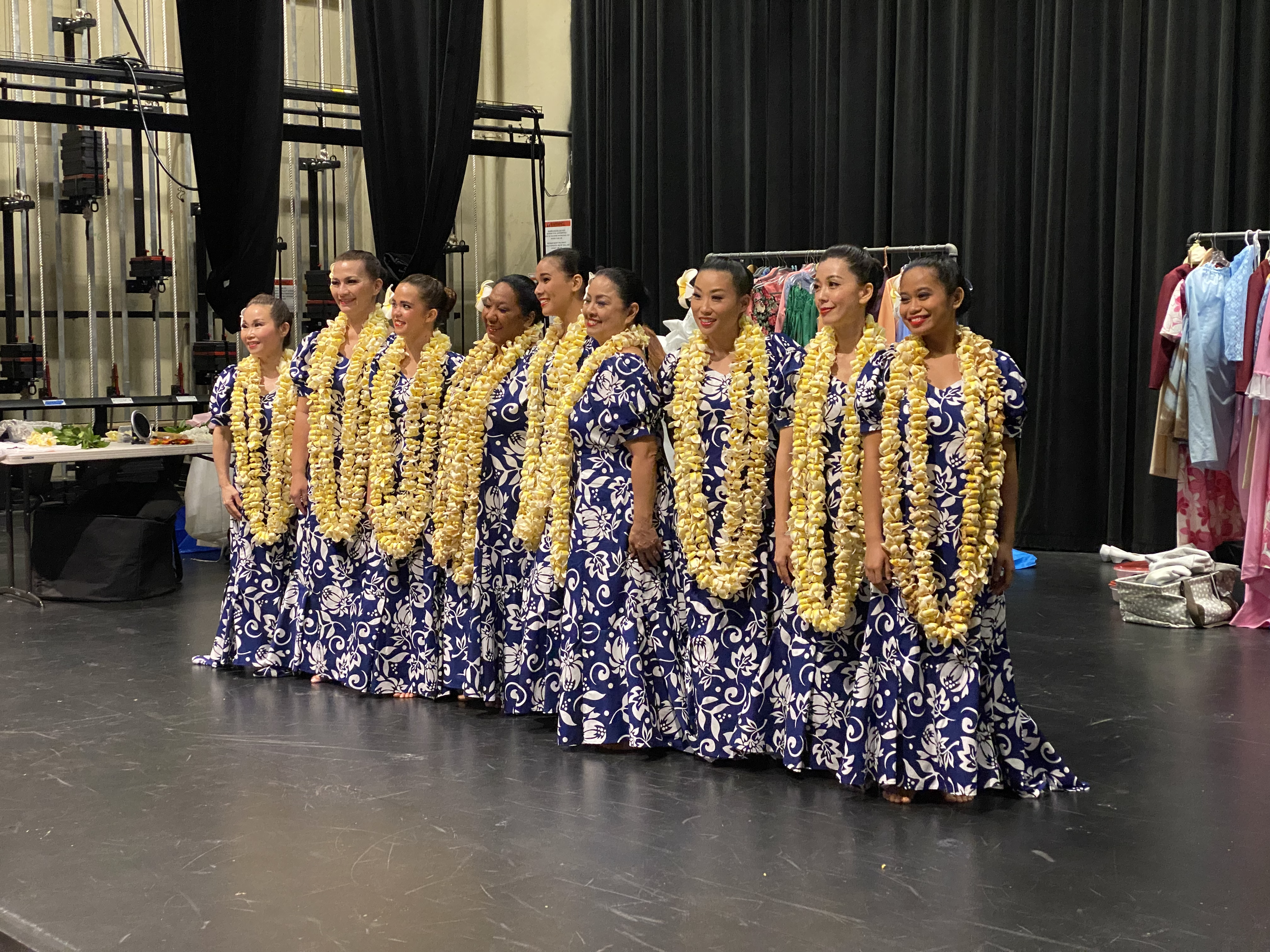

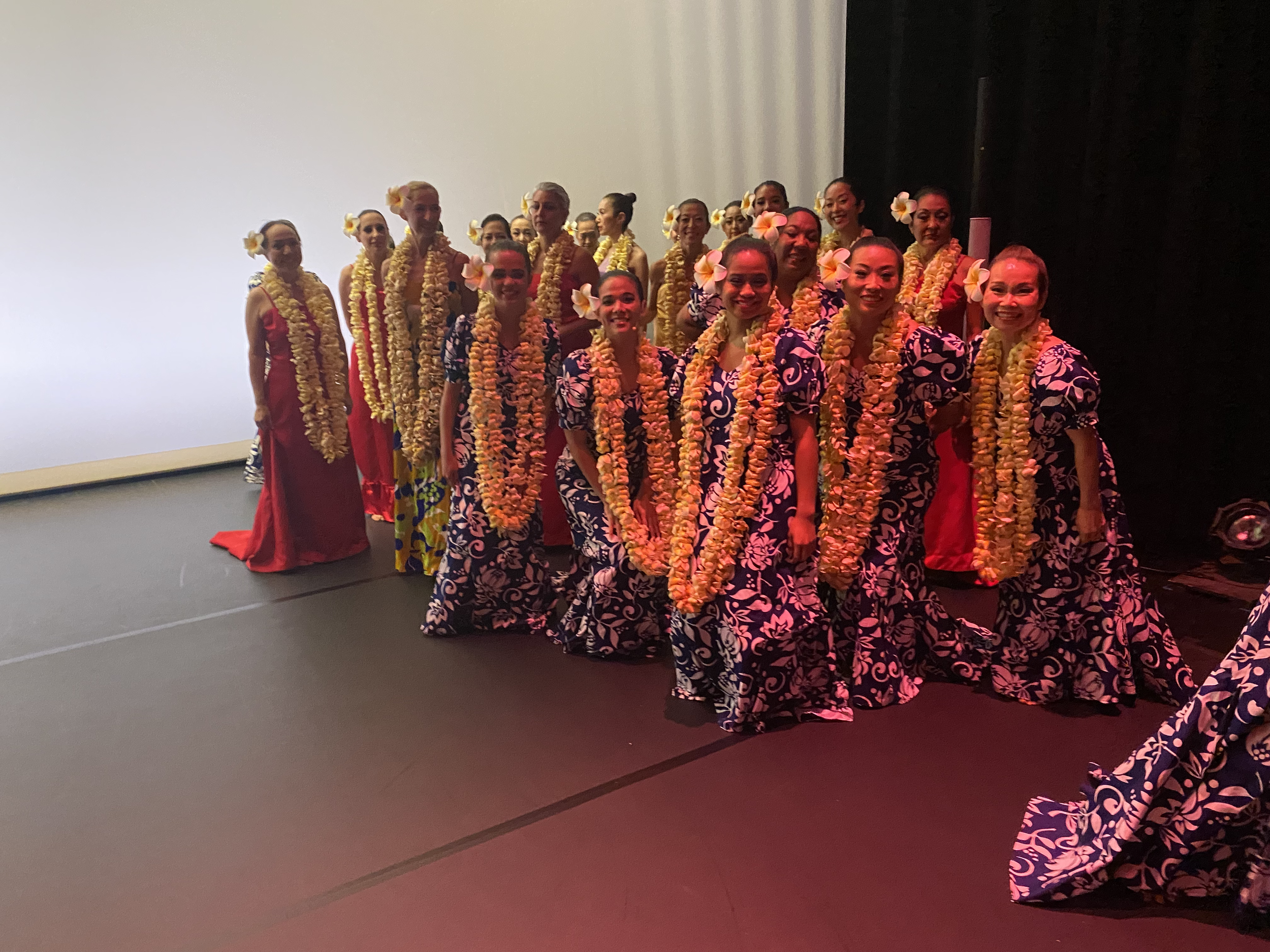
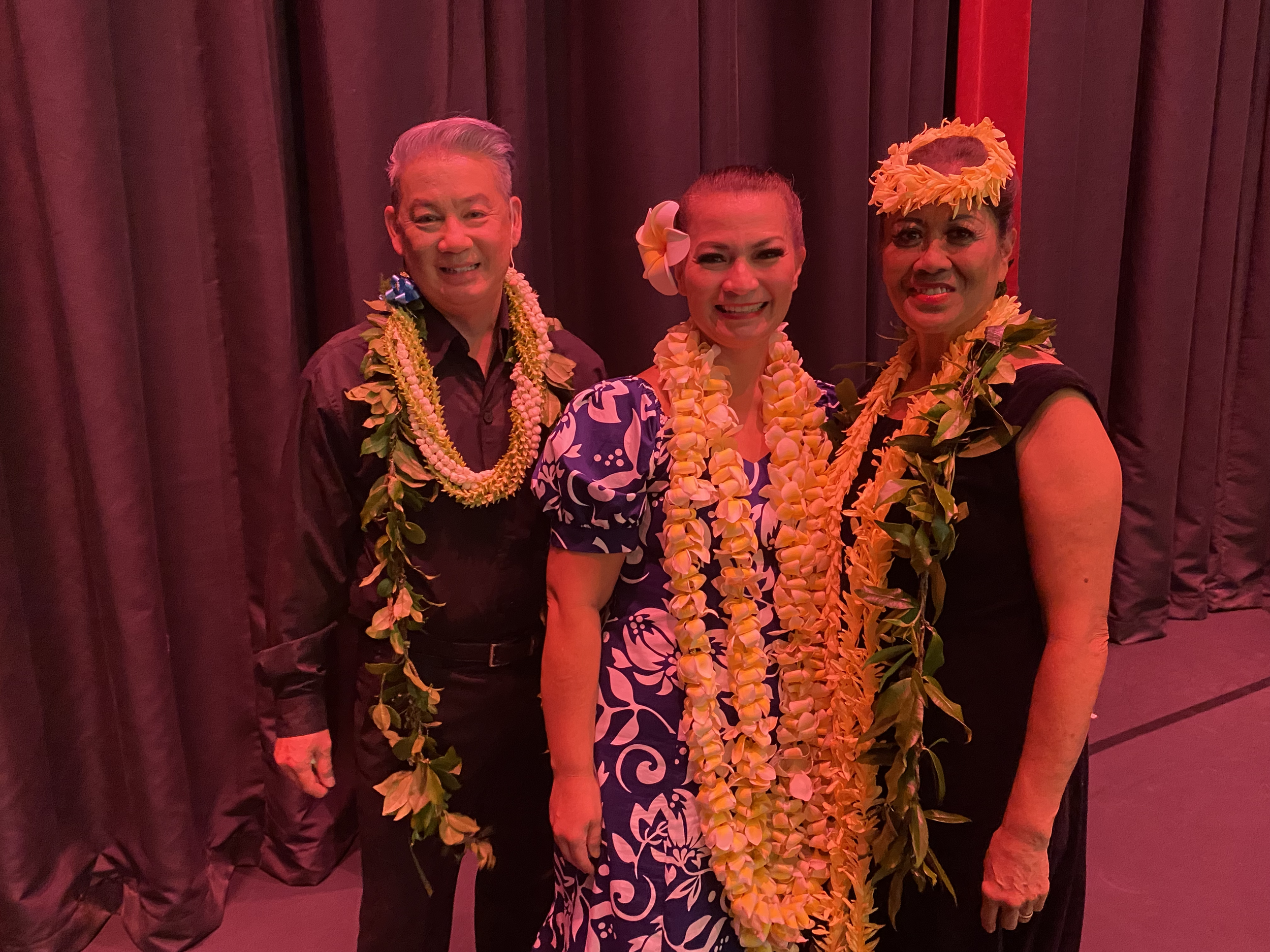


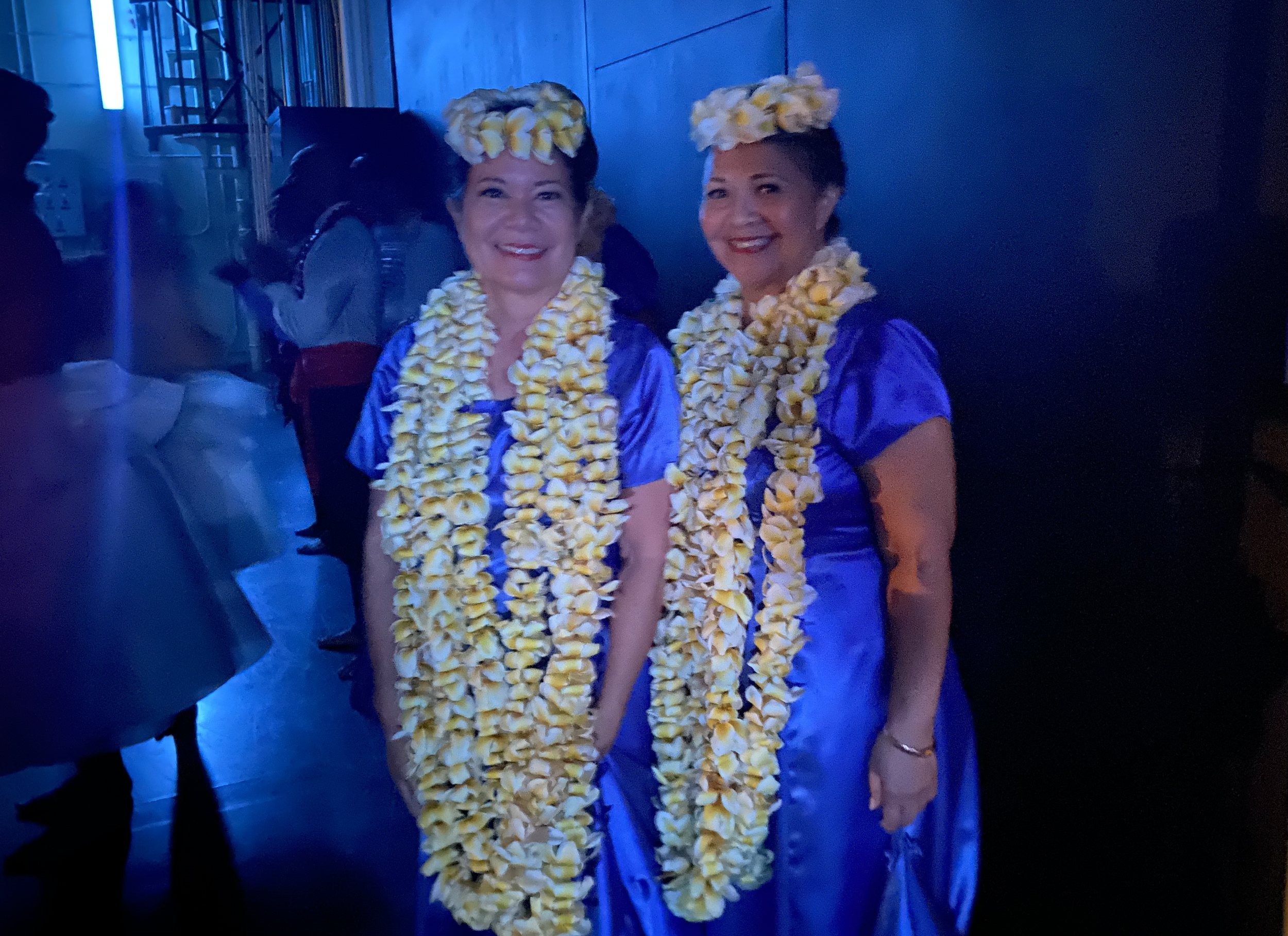
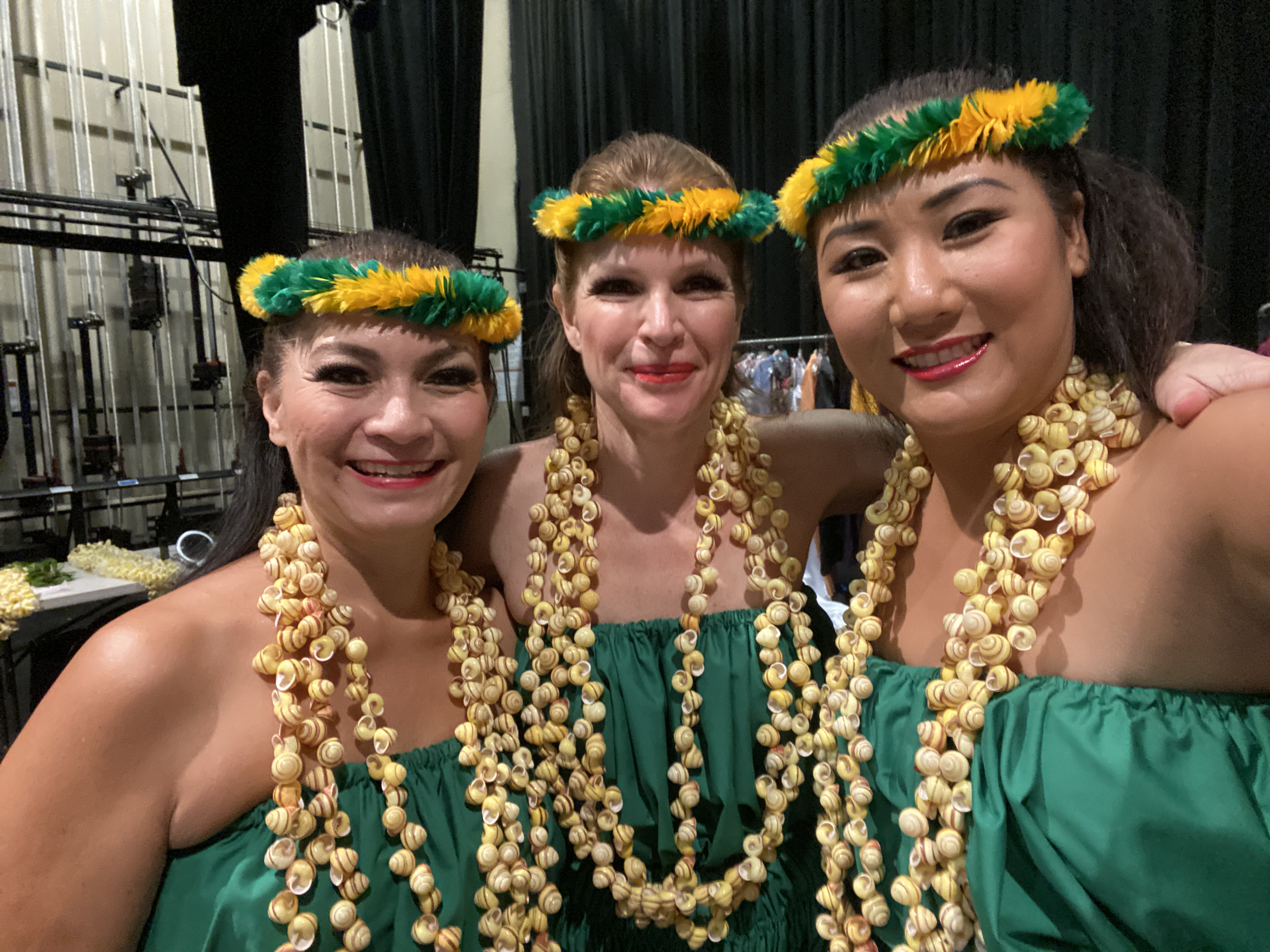


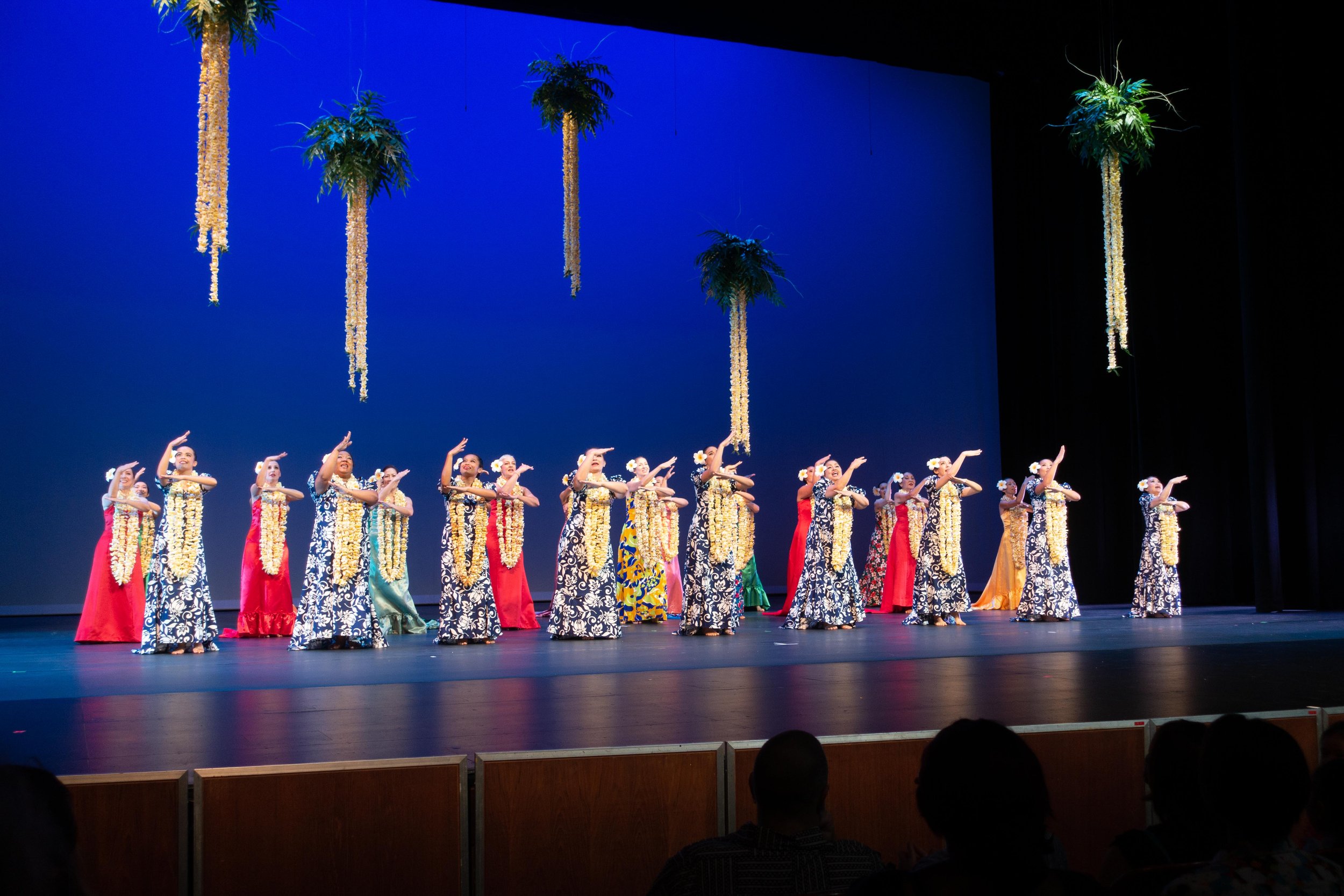
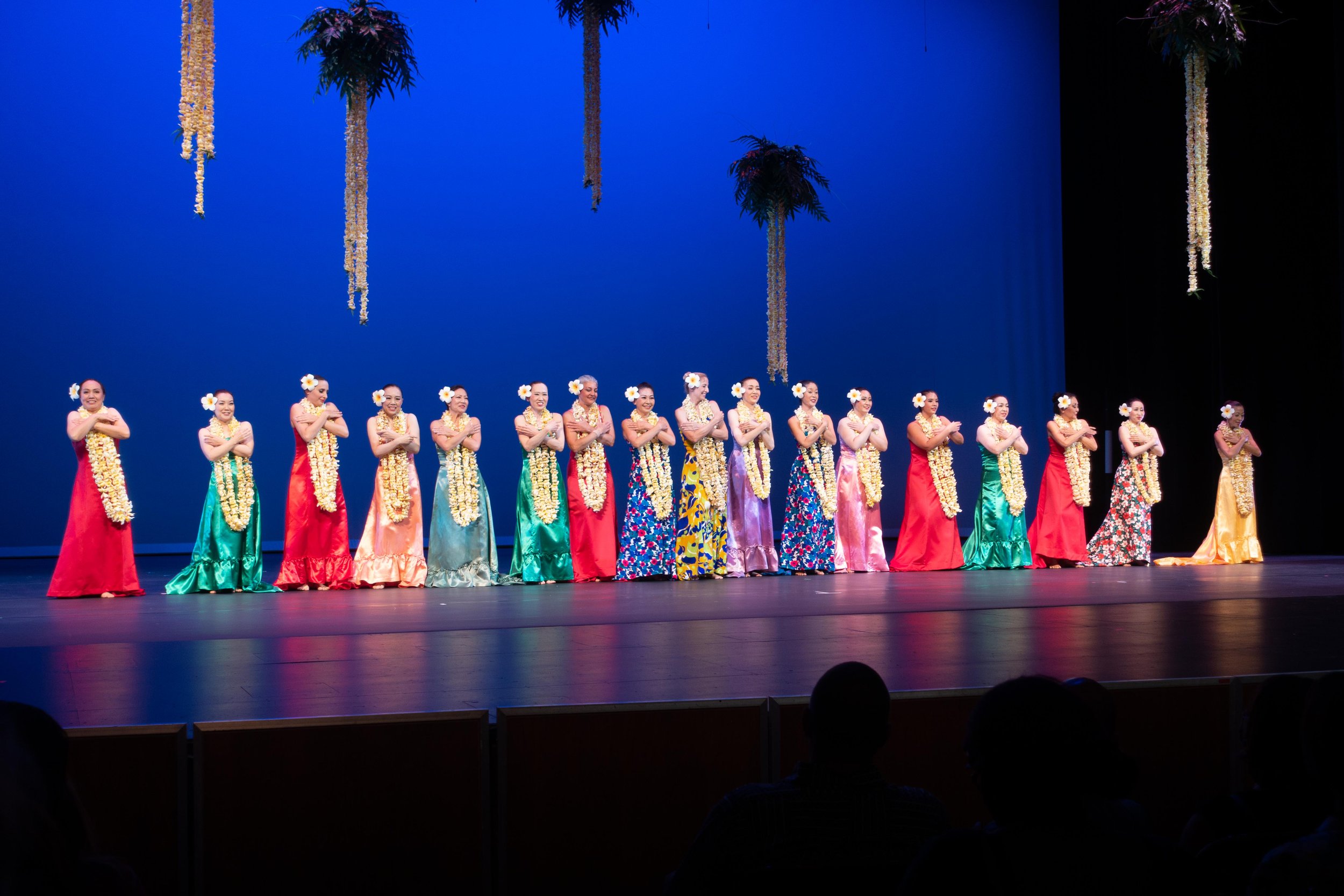
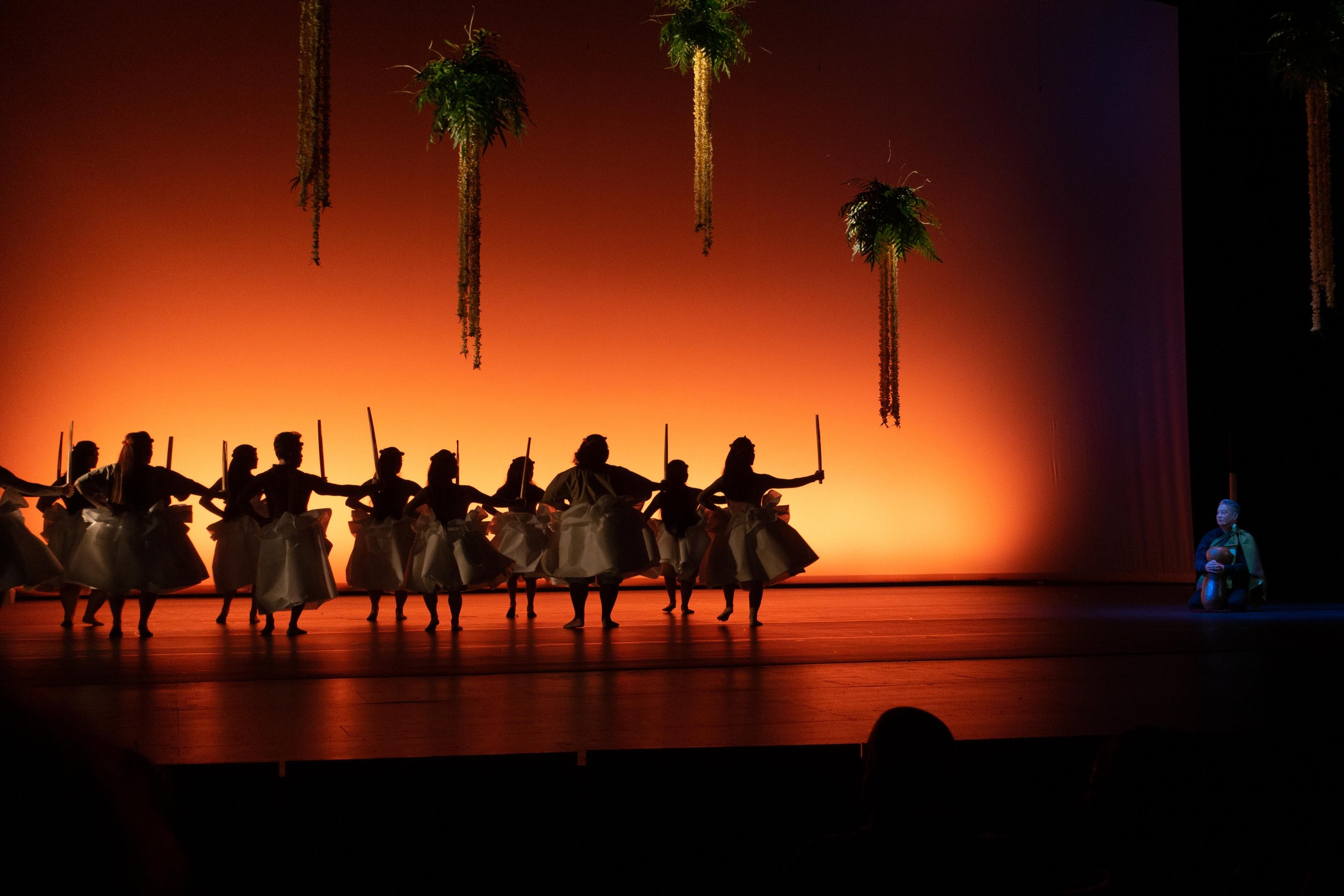
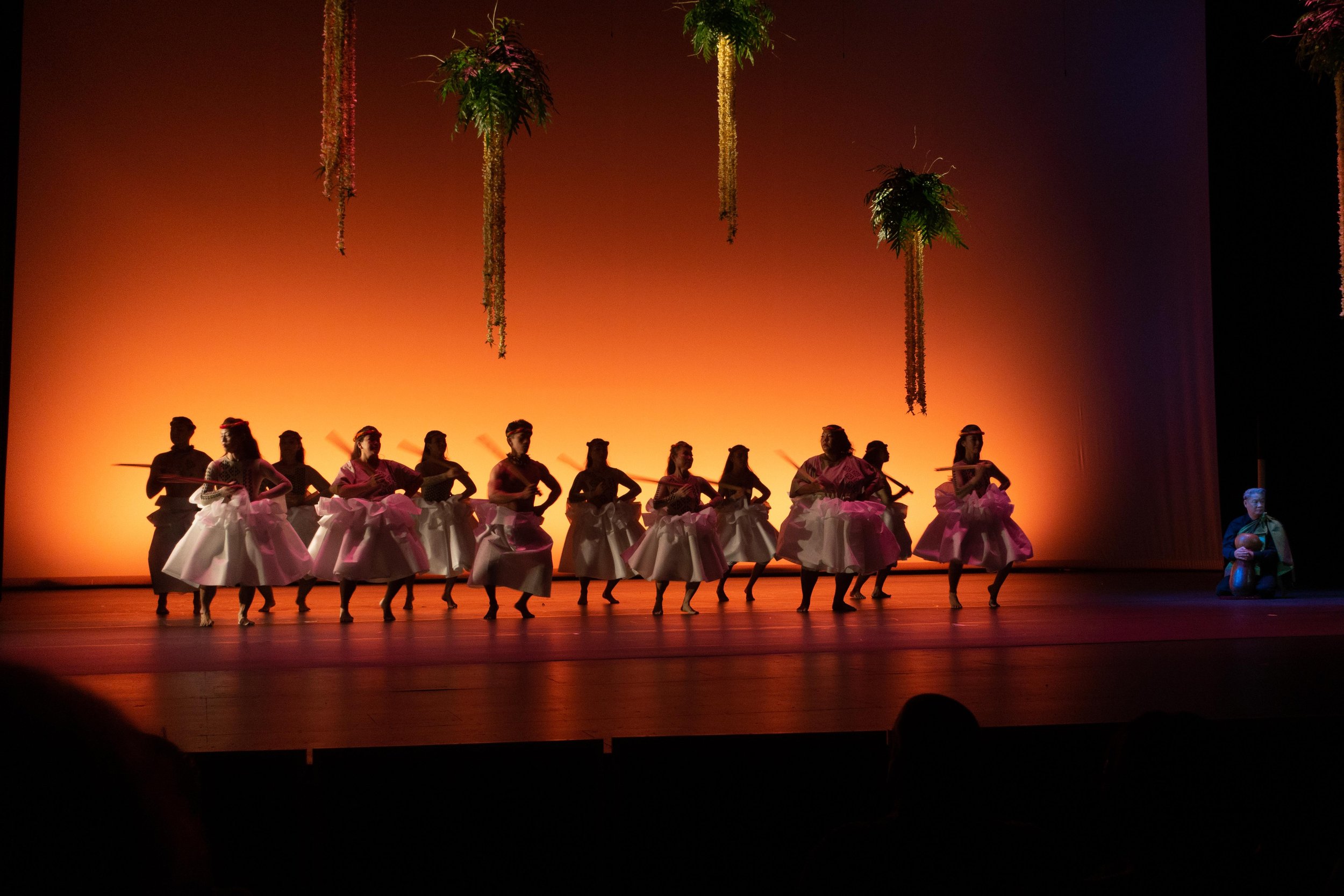
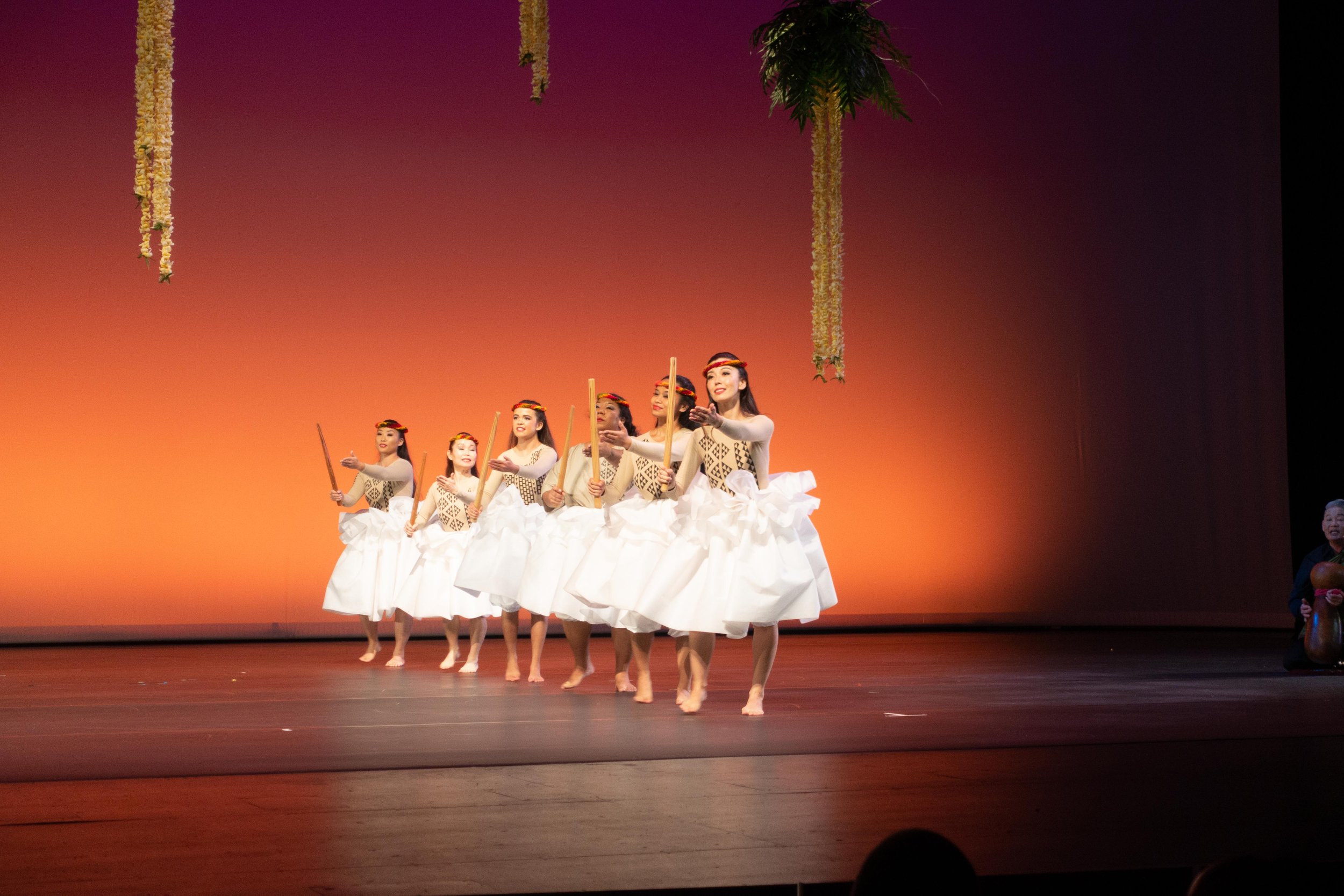
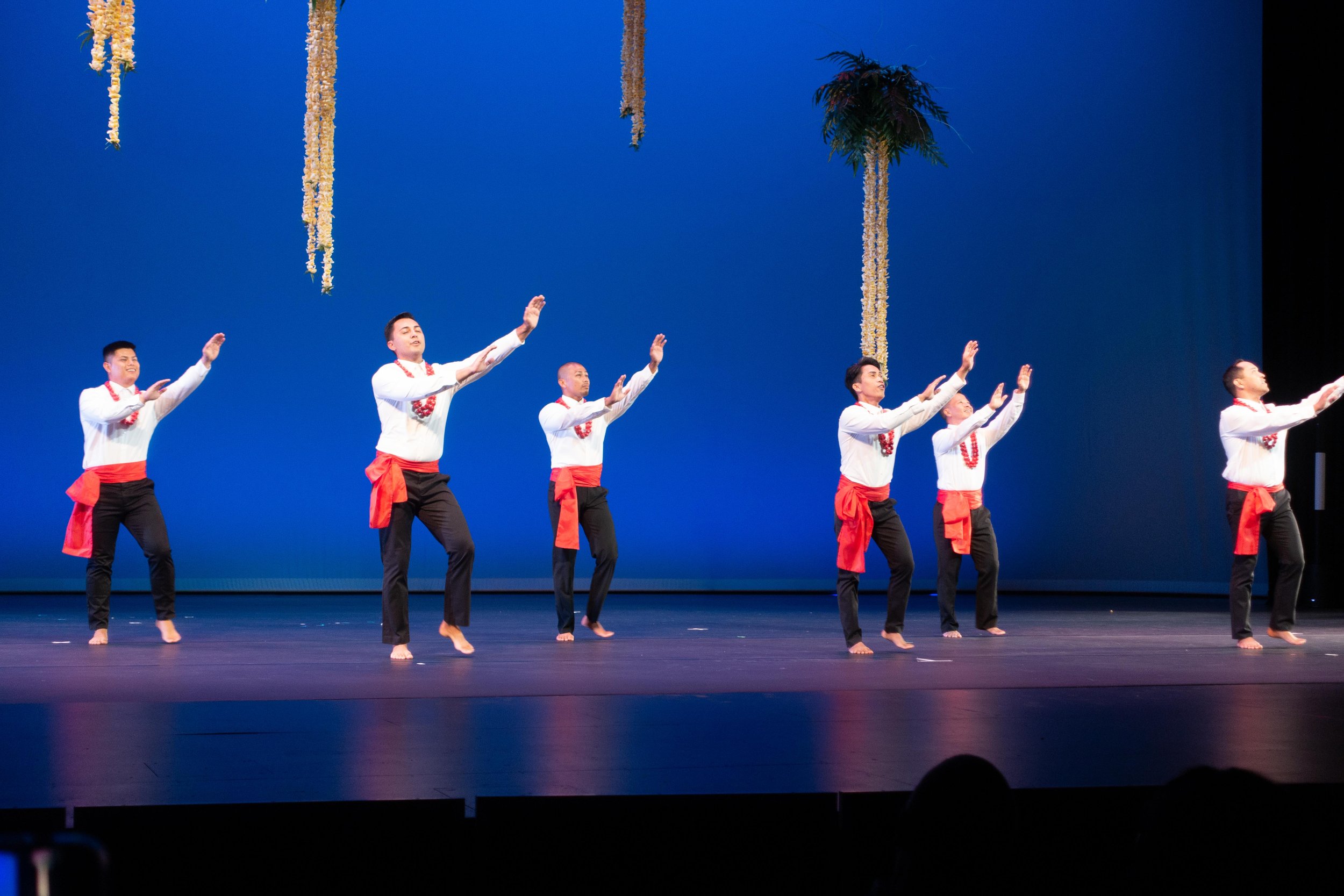
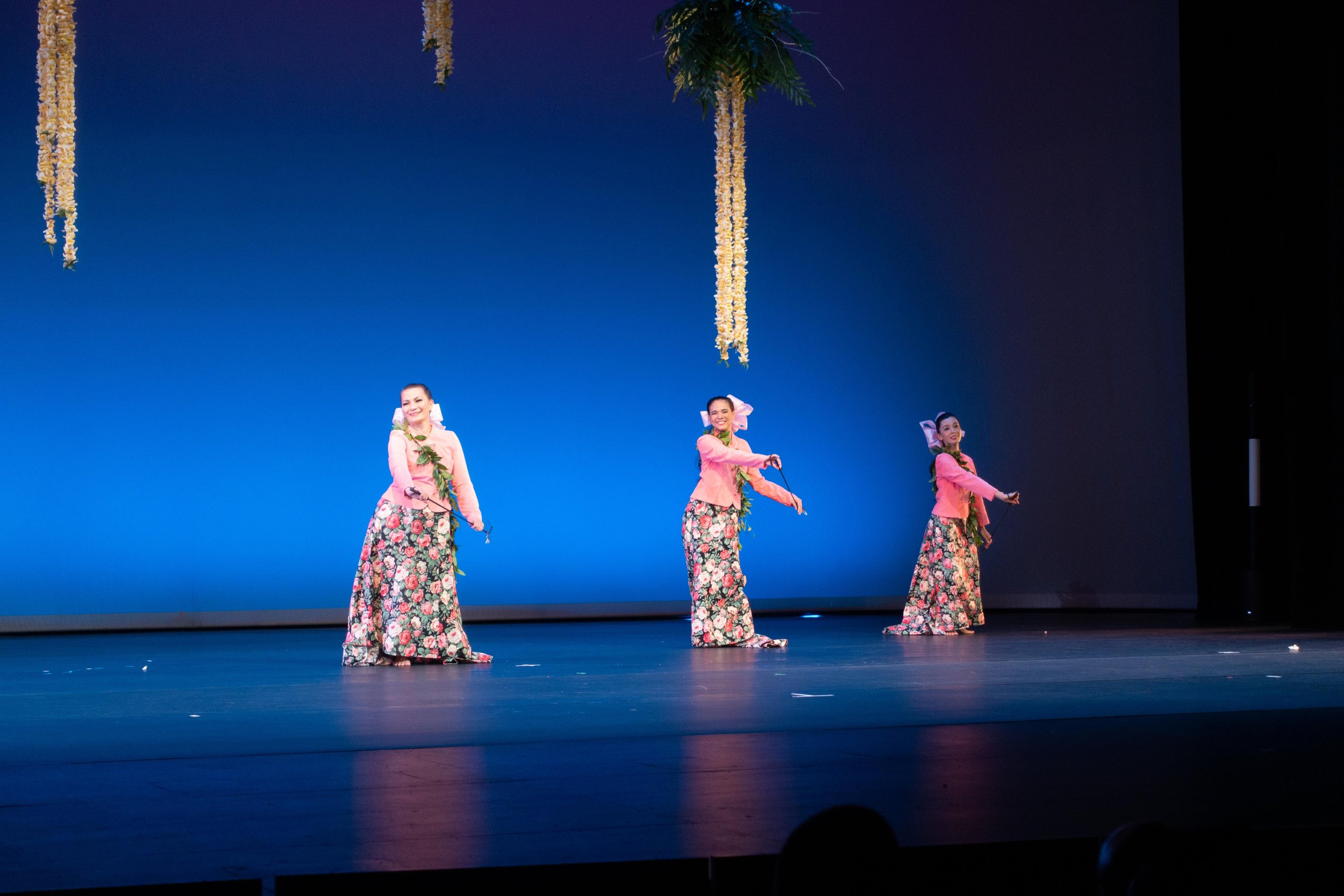
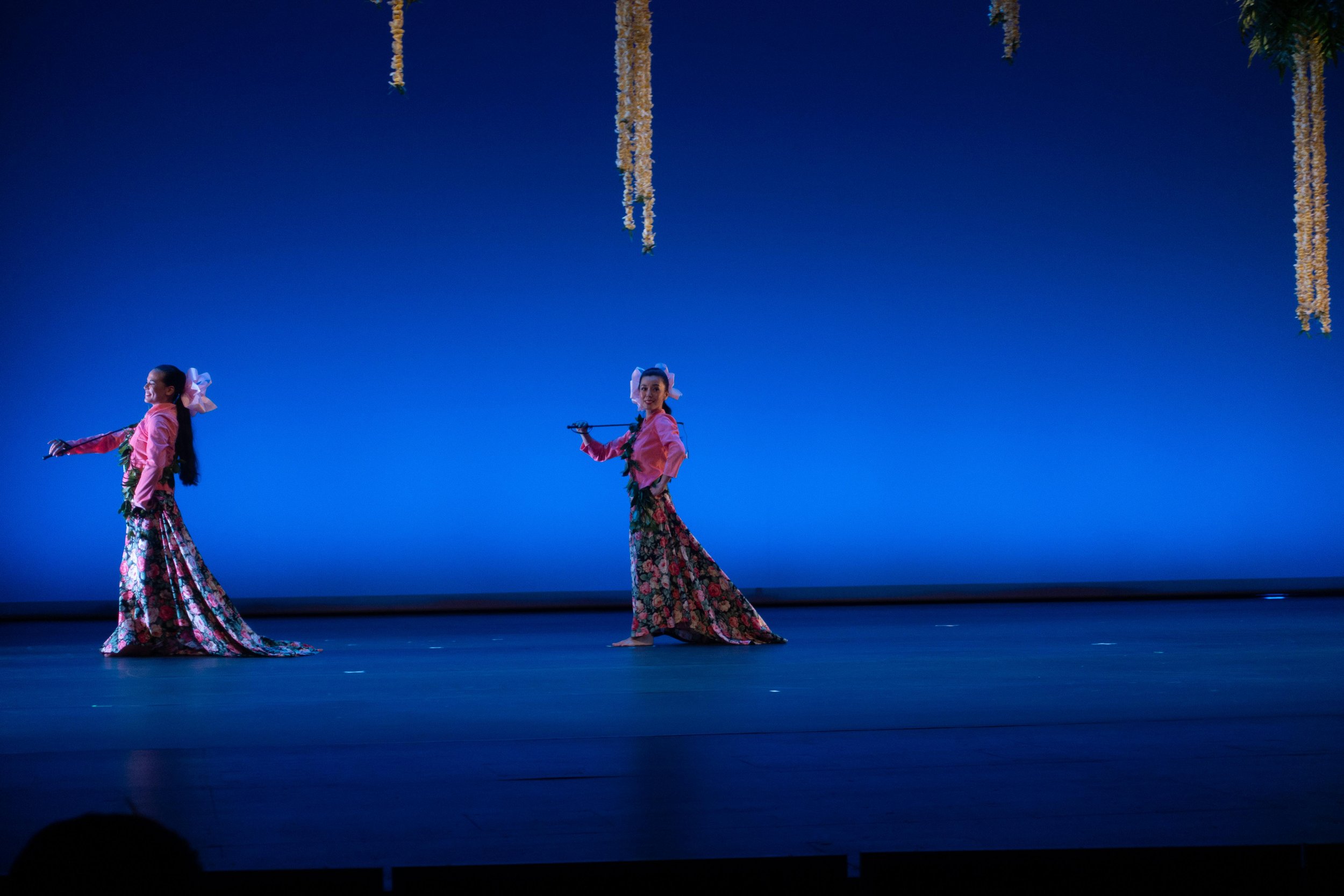

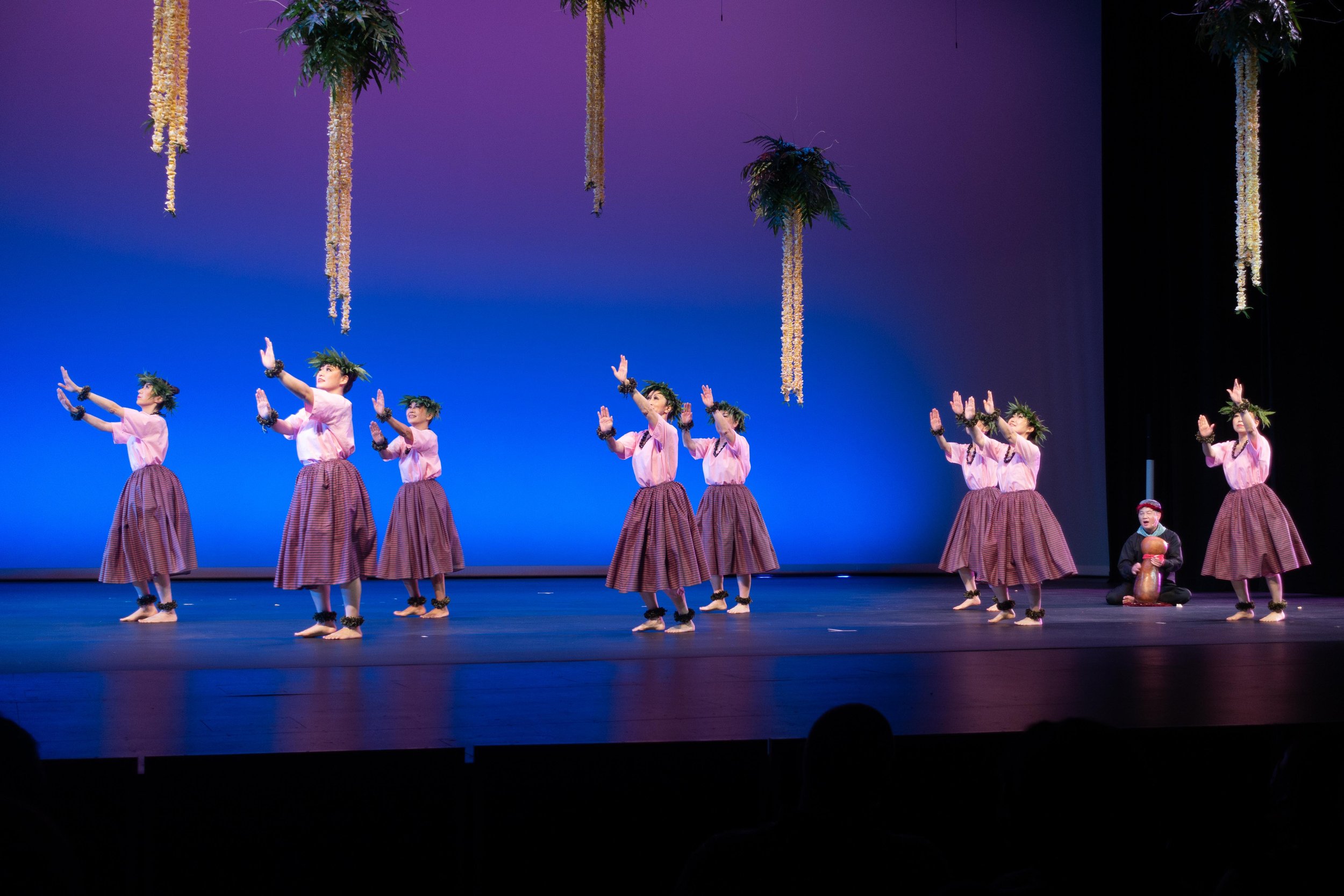
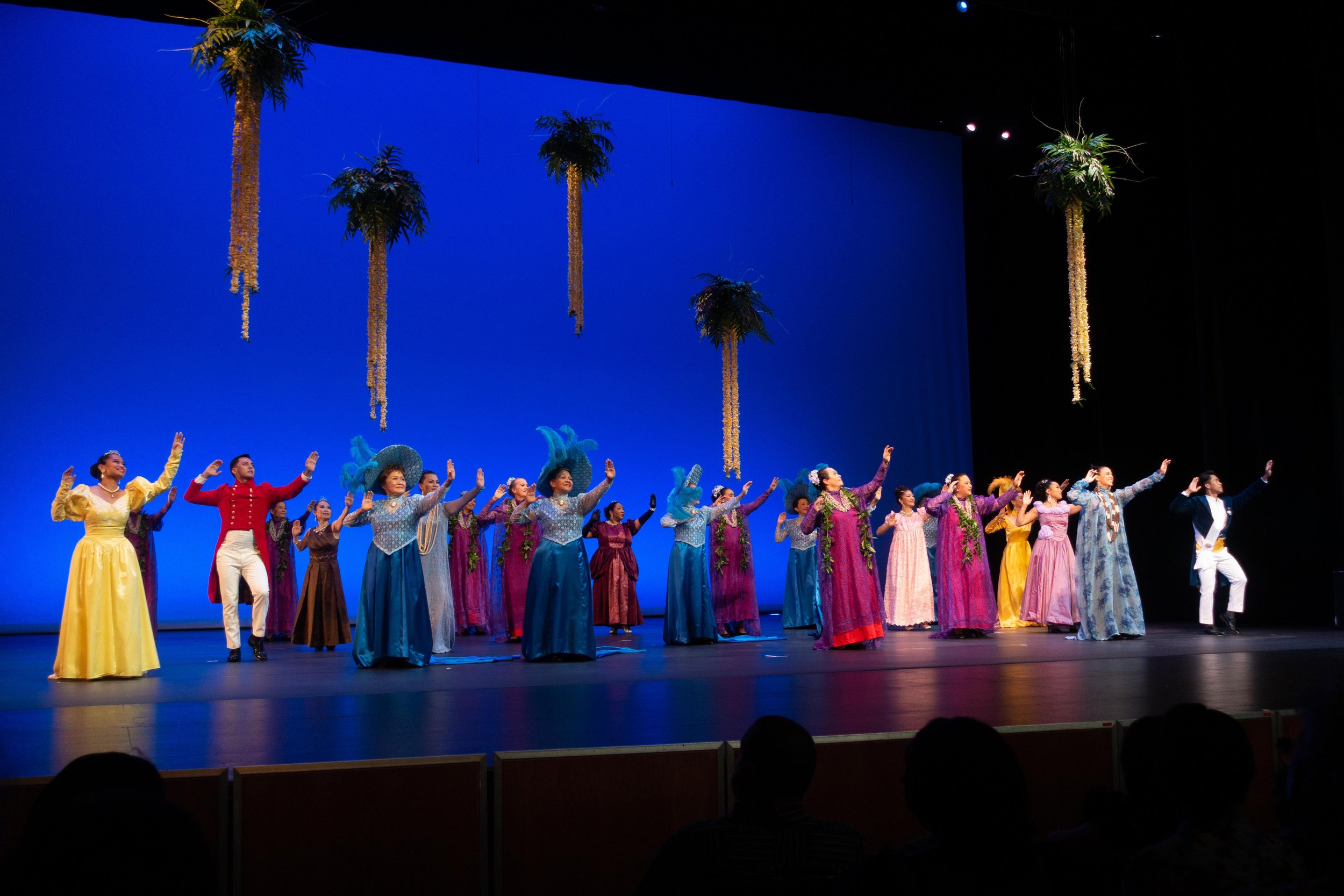
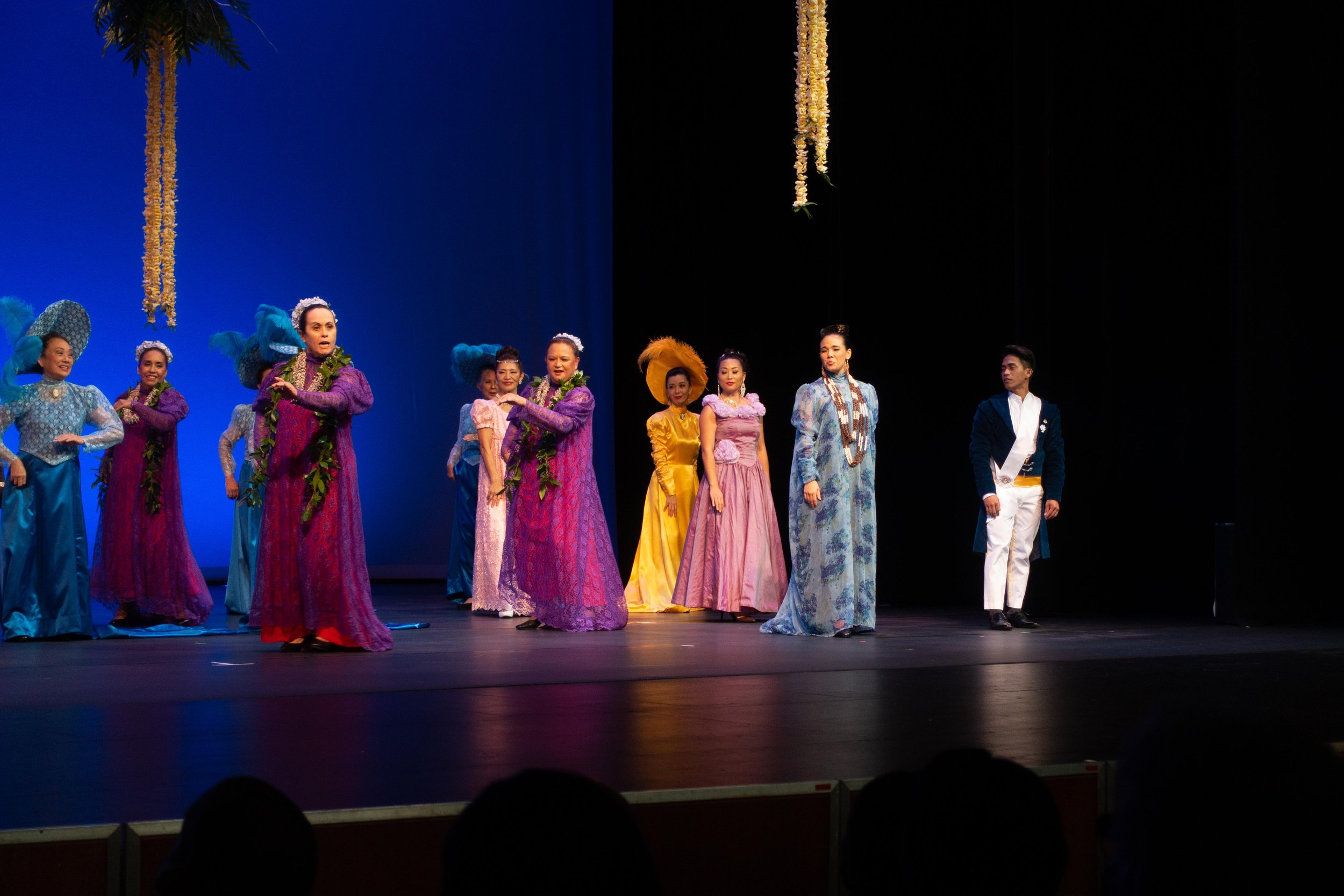

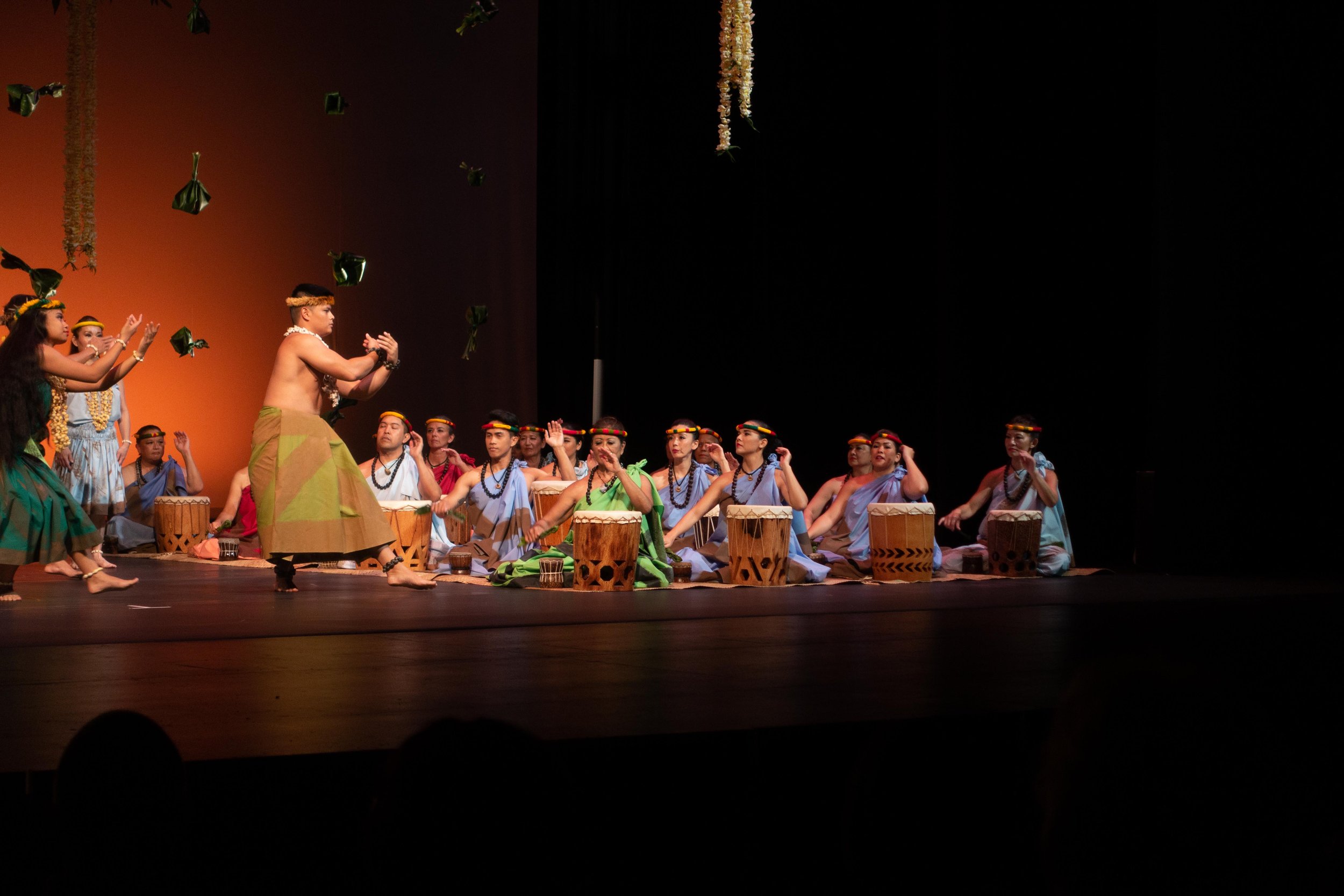
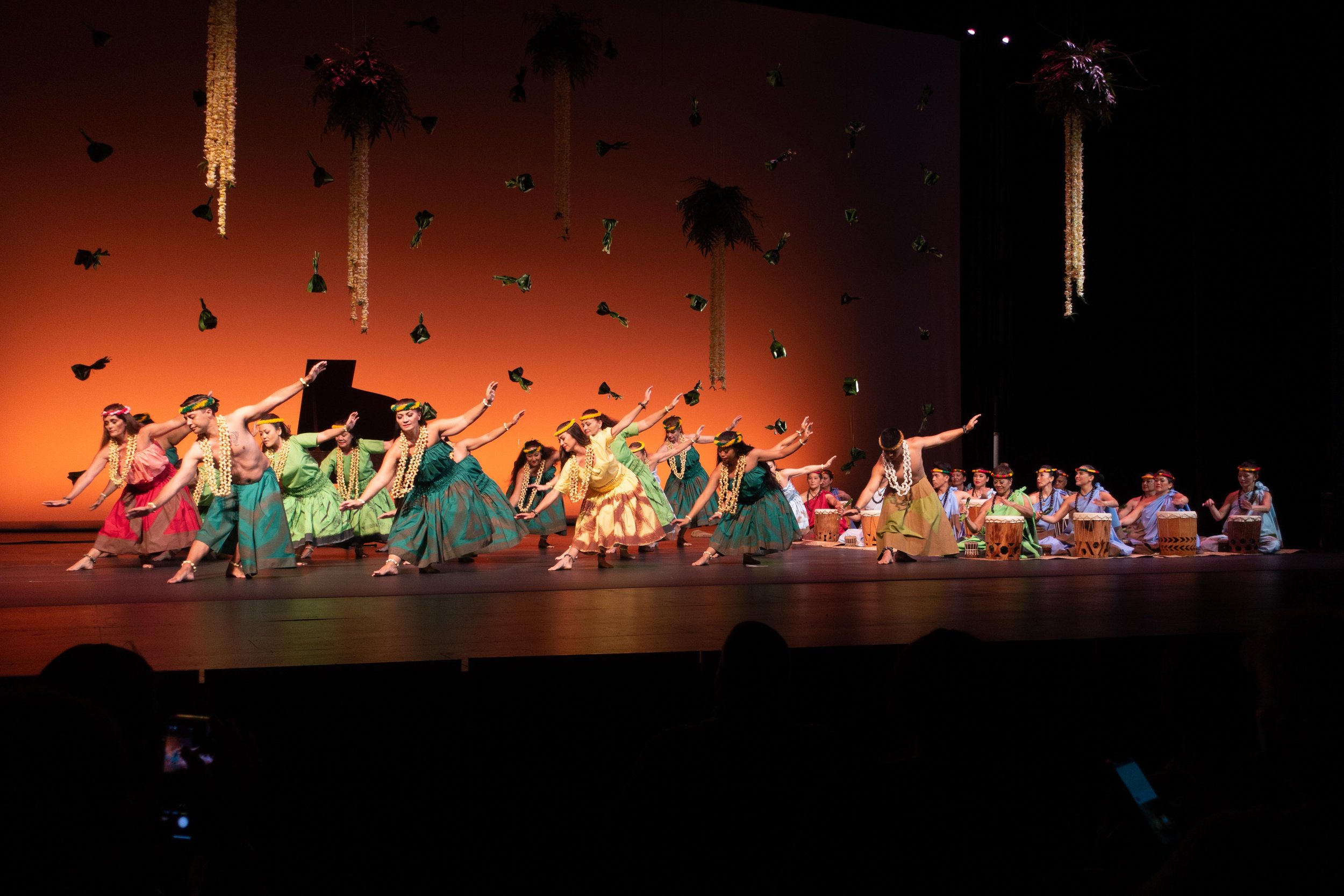
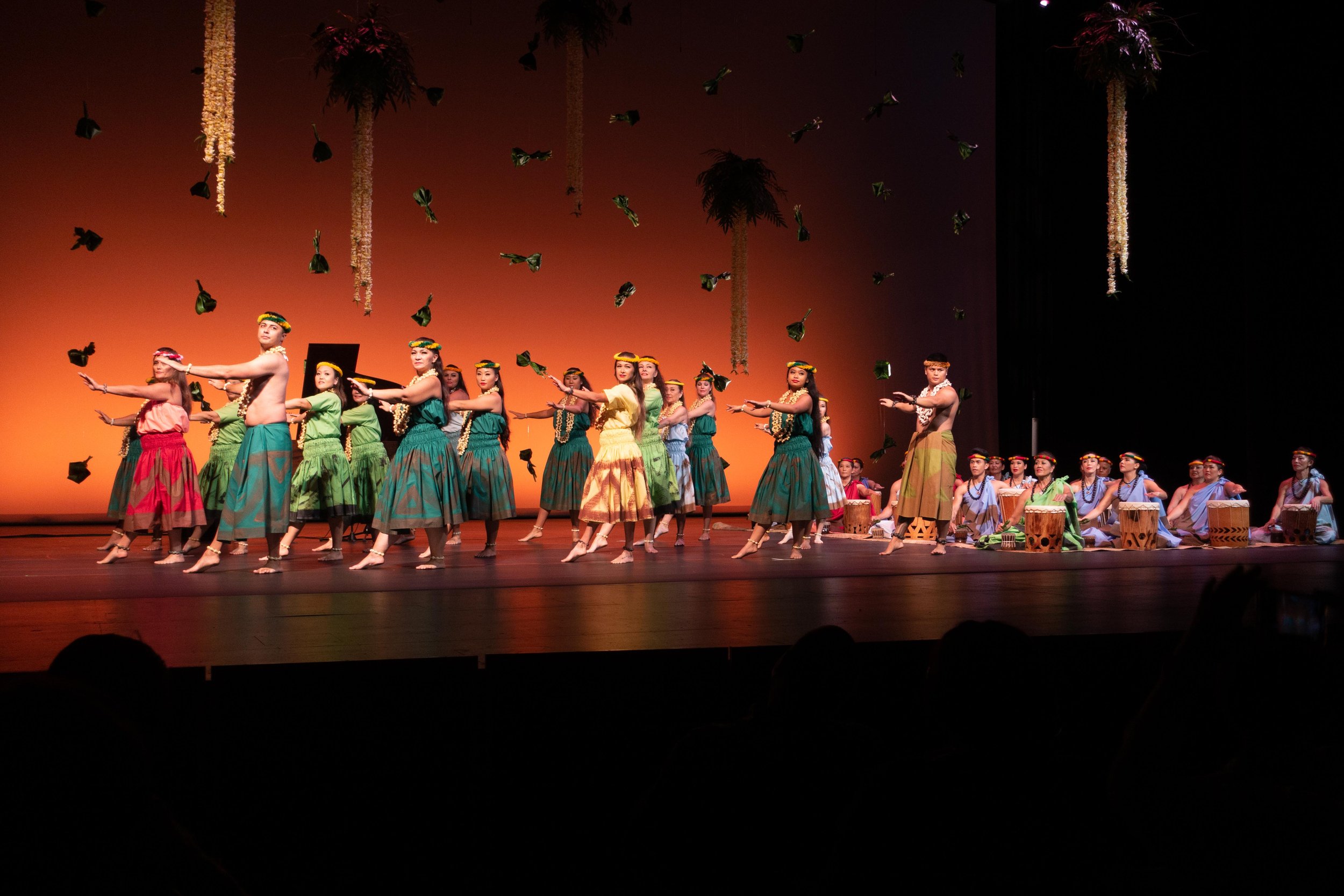
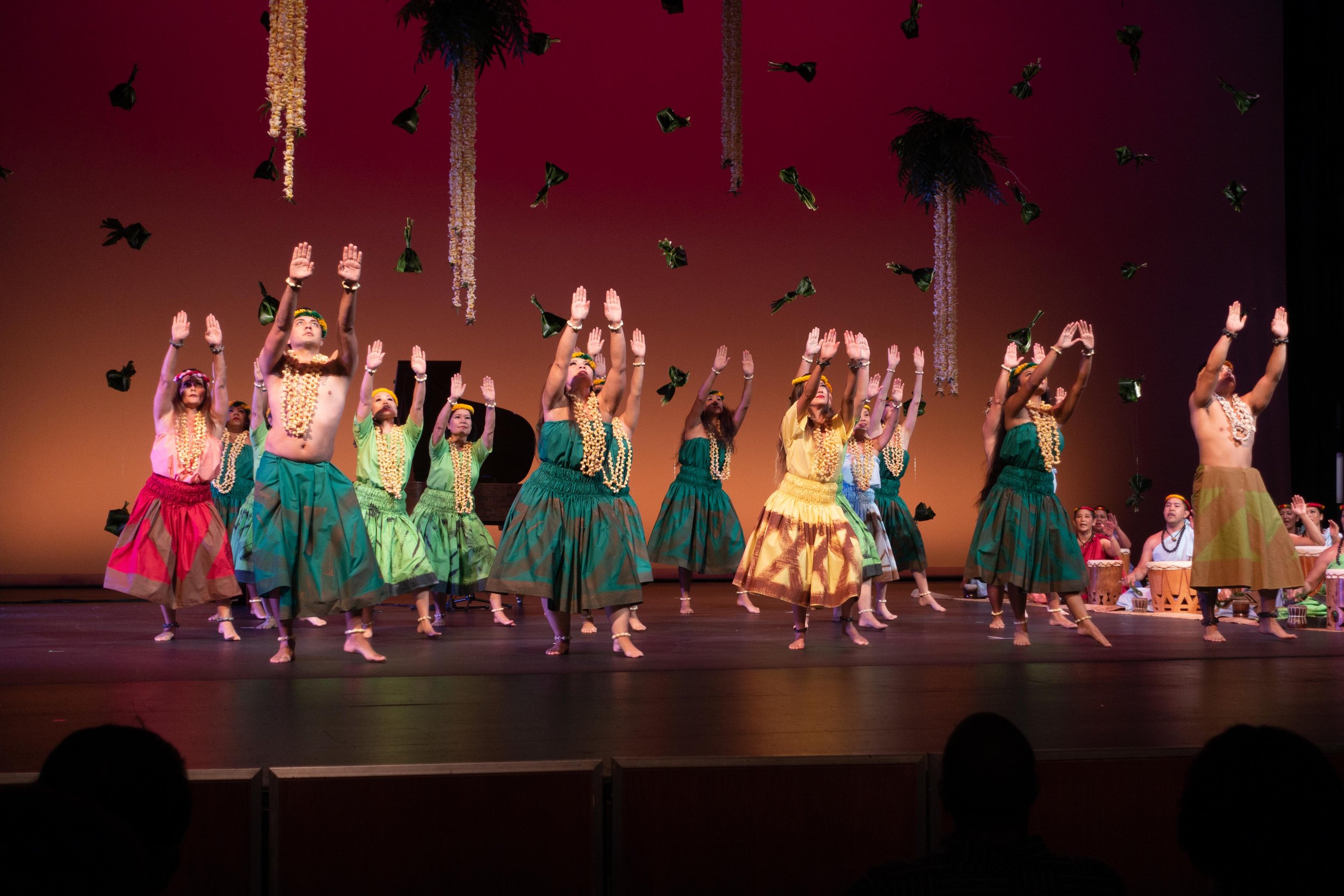

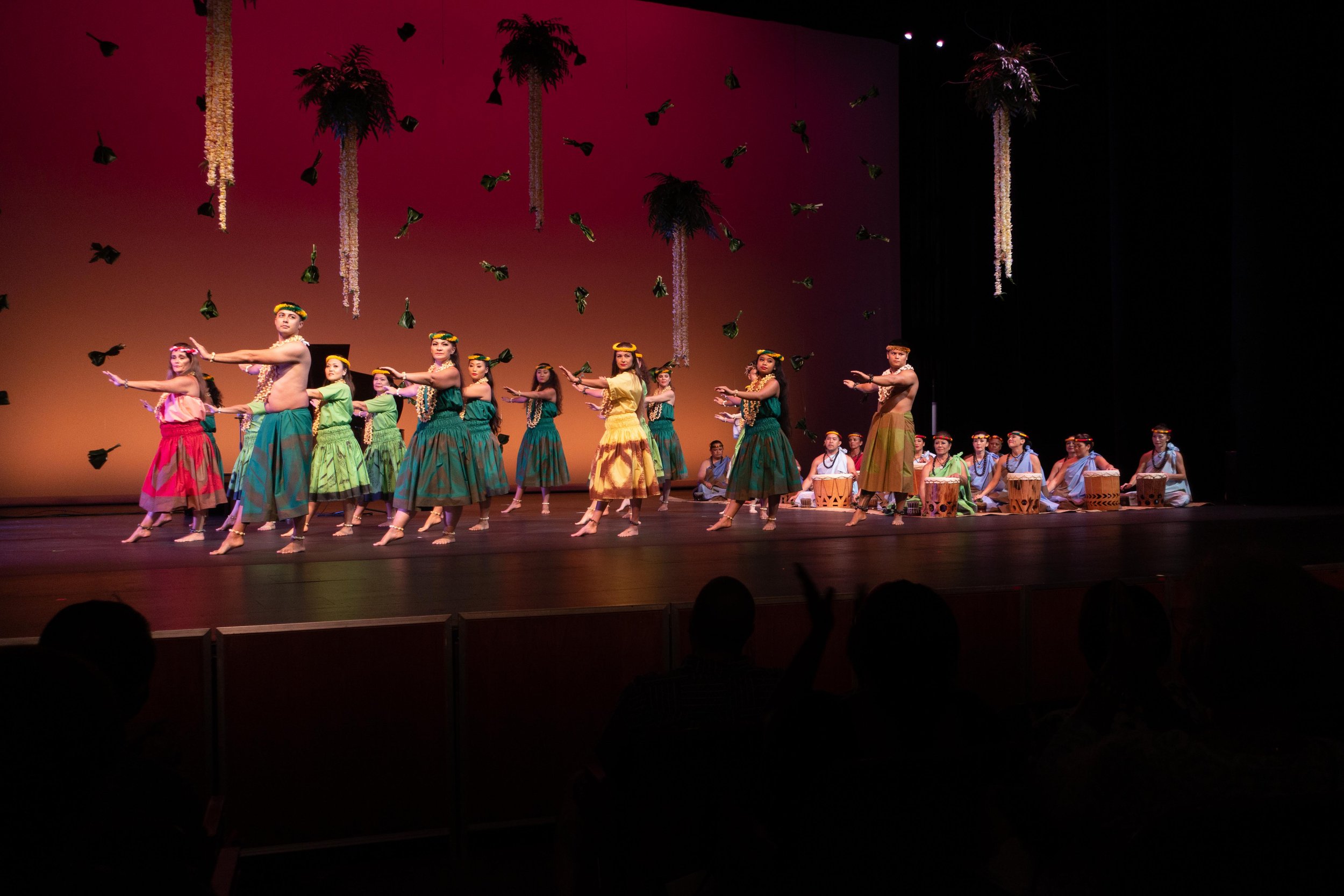
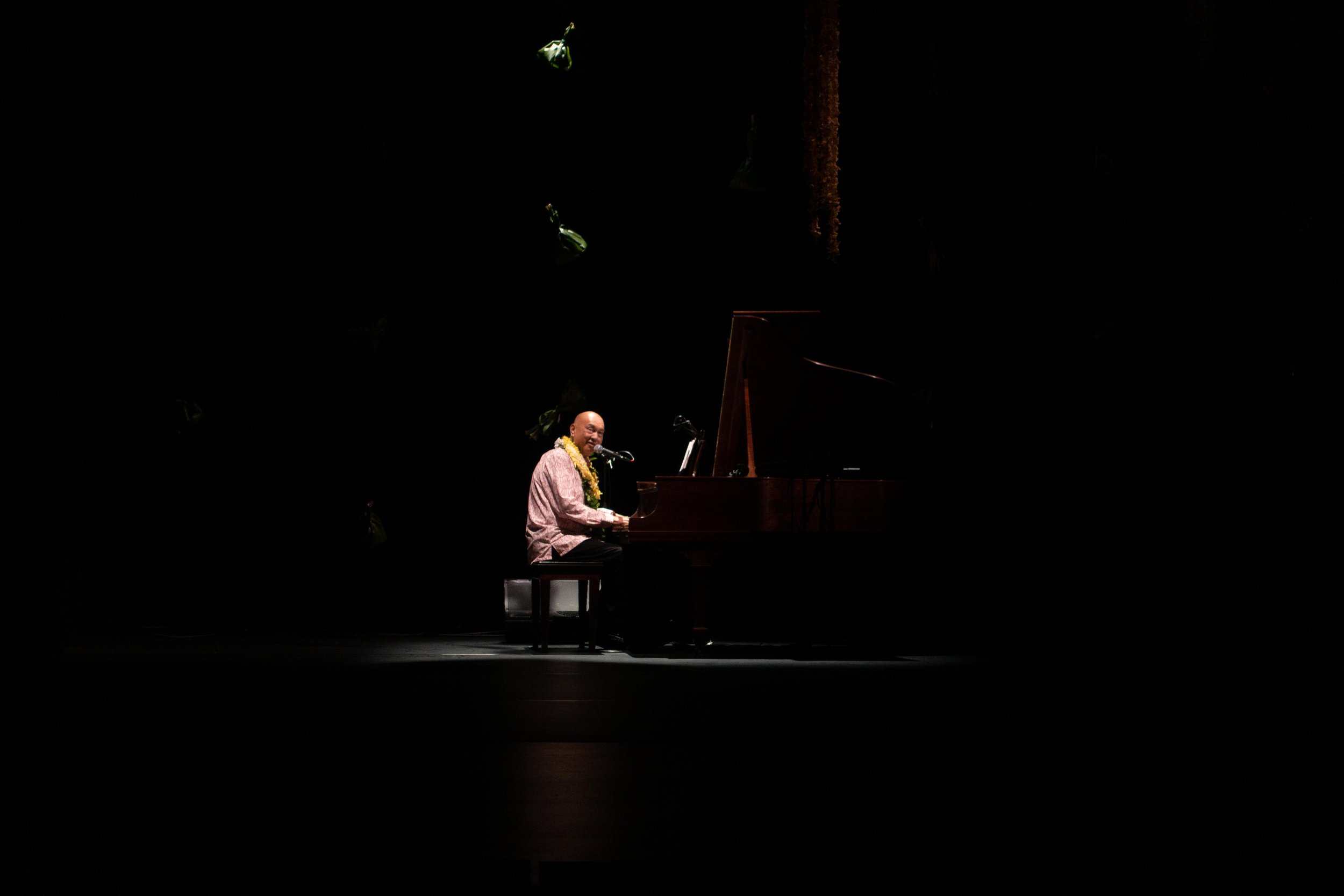
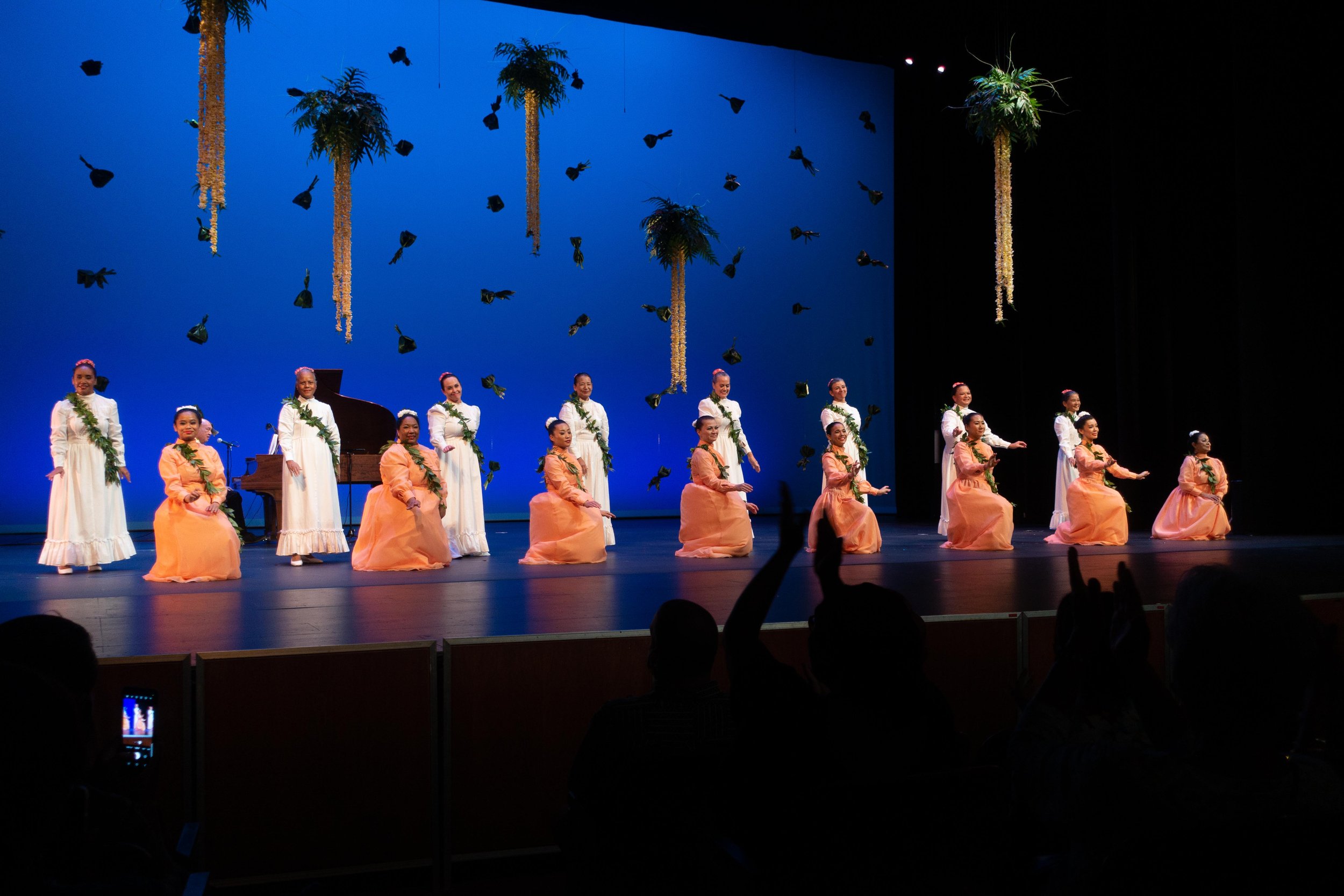
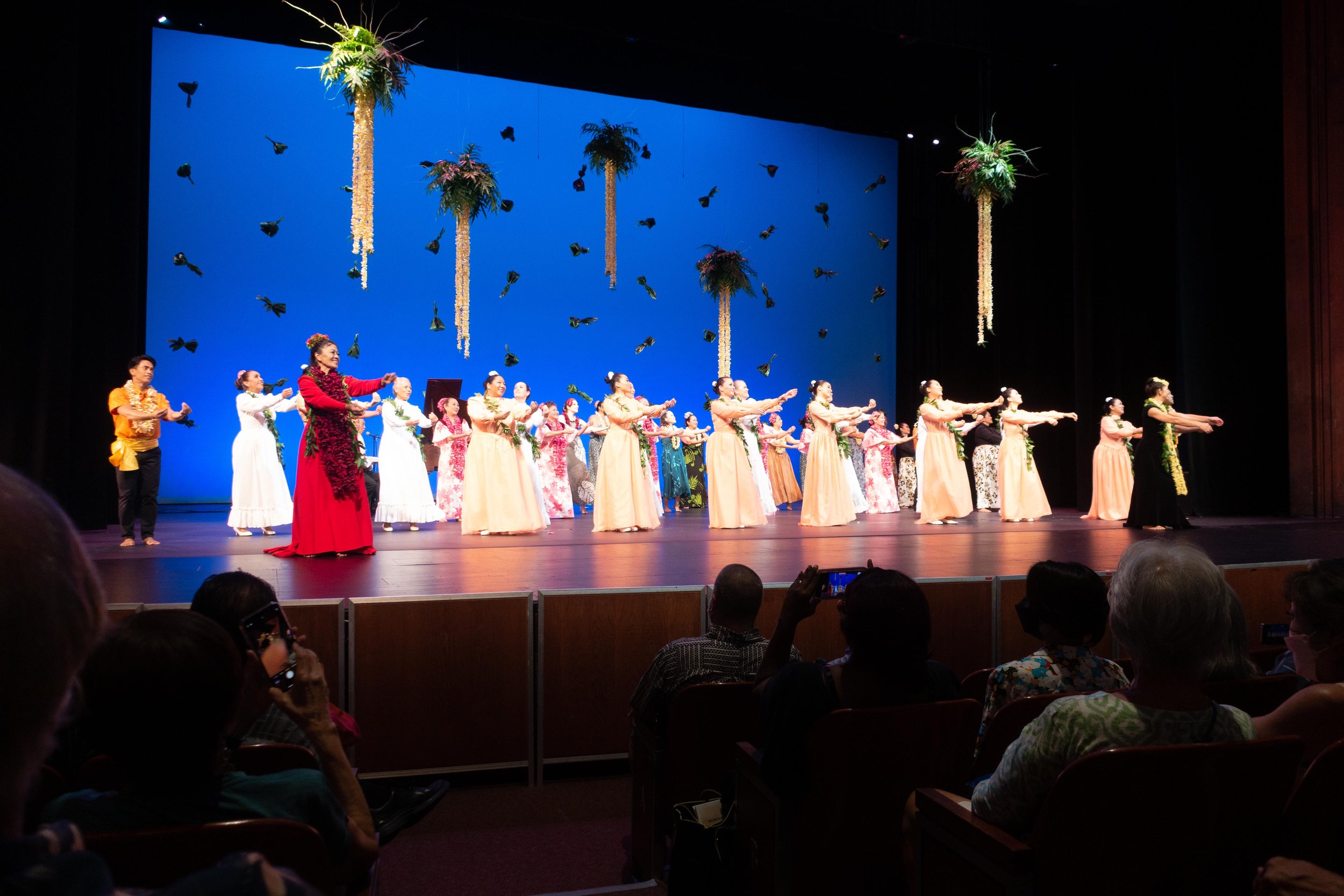
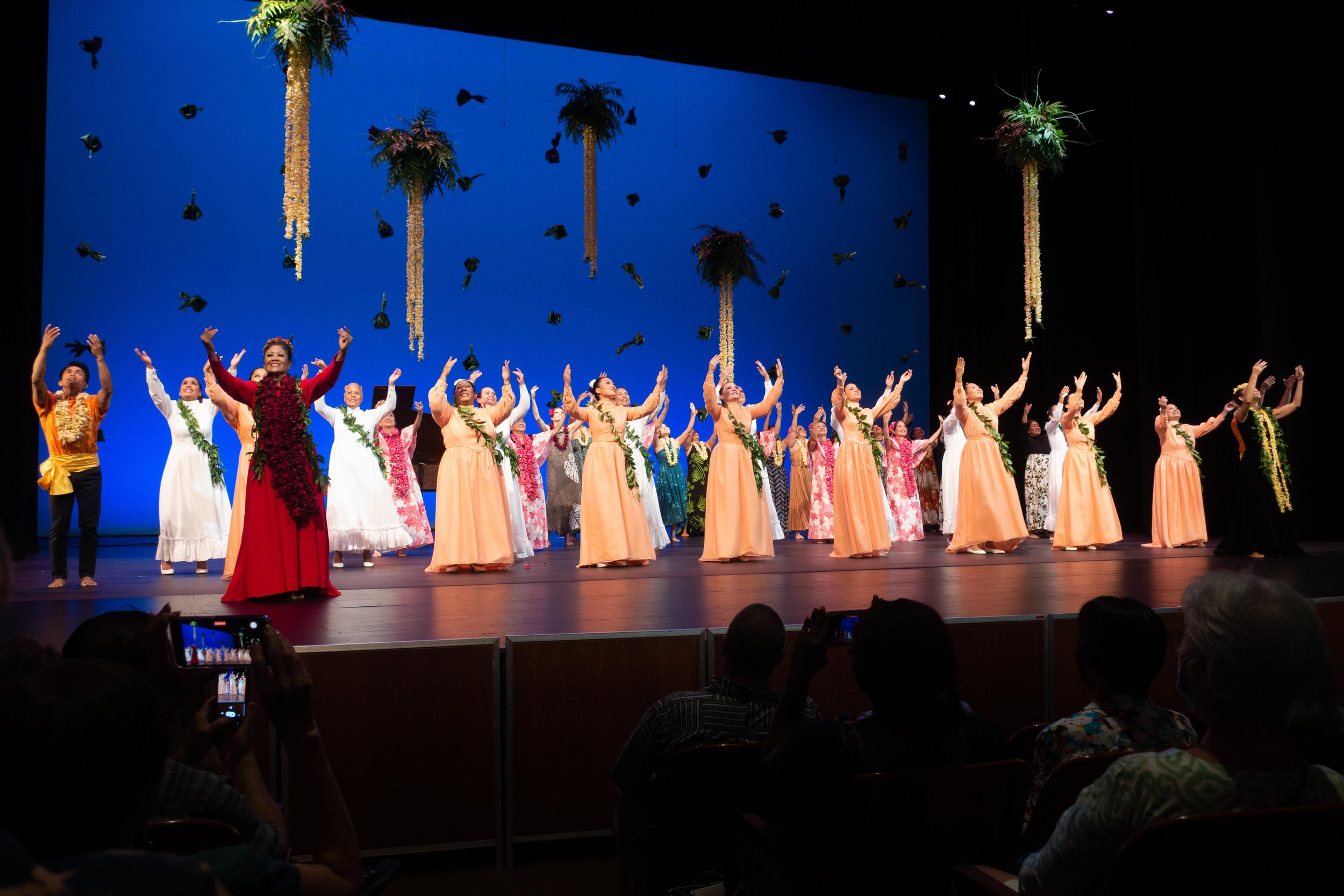
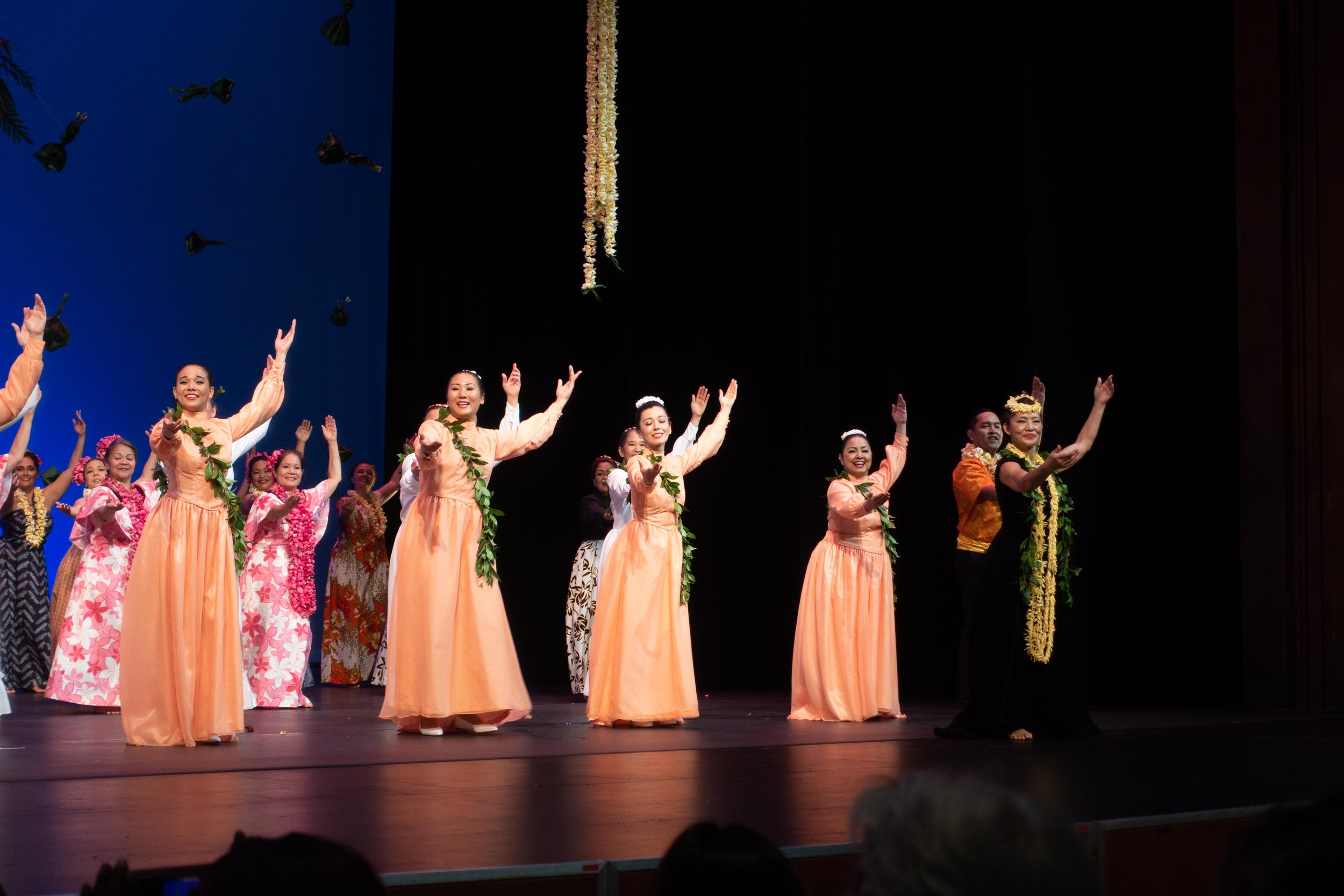
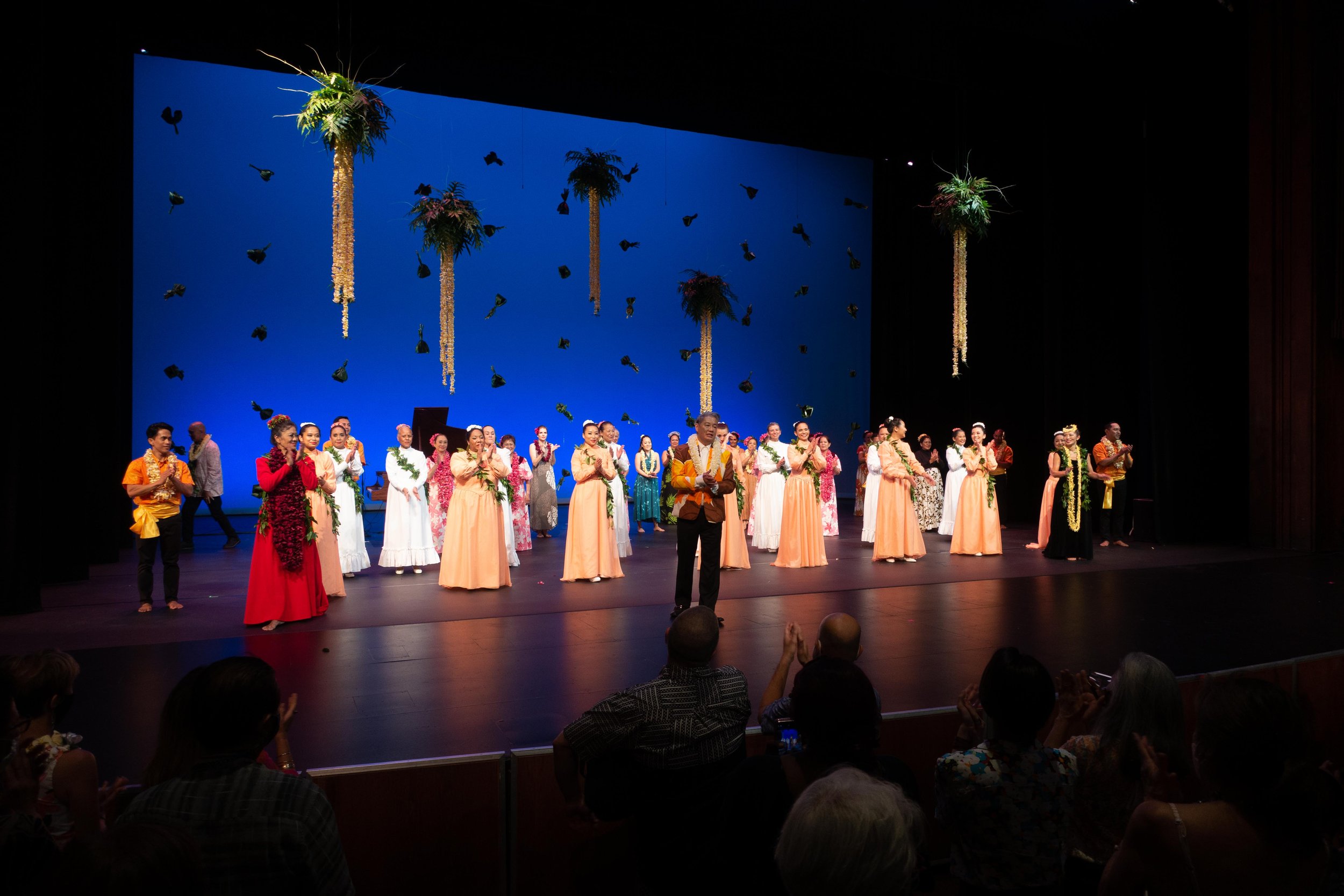
Local Motion! Huliau: Halau Hula Ka No‘eau’s
25 Years of Dance, Chants, and Traditions
(Text from Asia Pacific Dance Festival program)
Download the program PDF here.
Kumu Hula Michael Pili Pang’s anniversary celebration weaves together hula, chants, and music in order to huliau—to look back to the future, to look back in order to move forward.
Since its 1986 founding Kumu Michael has worked with his hālau to develop his creative expression while maintaining the integrity of the tradition from which he comes. As with other kinds of dance, there are many styles of hula. These vary based on the location in which they evolved, the temporal context in which they were created, and the people who contributed to their legacy. Kumu Michael credits his style to Kumu Hula Maiki Aiu Lake (1925-1984), honorifically known as “Aunti Maiki.” Her hula lineage traces its roots to O‘ahu’s court dancers who played an important role in documenting and telling stories of the 1800s, when Hawai‘i was an independent nation. During her lifetime Aunti Maiki focused on dances of her ancestors from
two or more prior generations to bridge older hula with modern hula. Her elders recognized the older movements retained in her dance and revived the old term hula ku‘i, meaning to sew, to piece things together as if making a patchwork quilt, to describe what she did.
During the Monarchy period (1820-1893) hula shifted from its ritualistic form to an honorific form and reflected the dramatic changes occurring in Hawai‘i. Hula ku‘i is the product of an environment in which western music, social dance, religion, and politics all significantly impacted life and hula. This was an evolutionary period that linked the traditional to the modern. Aunti Maiki’s “Hula Ku‘i Style” and technique reflect this period.
Hālau Hula Ka No‘eau’s style has been influenced by its extensive performing experiences. They have toured throughout the United States, Canada, Asia, and the Hawaiian Islands; shared the stage with international performing companies at festivals in Hawai‘i, Canada, Japan, and Taiwan; and in 1997 had their first performance tour at New York City’s Symphony Space.
They have won hula competitions, presented lectures at universities and public libraries, produced concerts, and collaborted with their hula brother and sister hālau and other non-profit organizations.
The hālau comprises a resilient group of artists— practitioners, students, sisters, brothers, mothers, fathers, aunties, uncles, kupuna (elders), and keiki (children). They maintain an understanding that they simultaneously huliau—live in the present, have one foot firmly planted in the past, and create and tell stories for the future. Just as their ancestors did, the hālau maintains a working body of hula knowledge— a form of cultural identity.
Kumu Hula Michael Pili Pang studied hula under the tutelage of Hula Masters Maiki Aiu Lake and Mae Kamamalu Klein. He holds a Bachelor’s Degree in Art and Education from the University of Puget Sound and is the only kumu hula to earn a Master of Fine Arts Degree in Dance from the University of Hawai’i at Manoa. He was appointed Executive Director of the Mayor’s Office of Culture and the Arts by Mayor Mufi Hannemann (2005-2011) and continues to serve on several community boards as a cultural consultant. Kumu Michael is the founder and Kumu Hula of Hālau Hula Ka No‘eau, and the Executive Director of Mu‘olaulani, the non-profit corporation supporting the endeavors of the Hālau. In Hawai‘i he has taught hula and Hawaiian music at the University of Hawai‘i at Manoa’s Music Department, ‘Iolani School, St. Andrew’s Priory, and Waimea Elementary and Middle Schools, and served on the Asia Pacific Dance Festival’s Organizing Committee from 2011 to 2019. He and his hālau present lectures, demonstrations, and concerts at universities and colleges in Hawai‘i, North America, Canada, and Asia.
Program
Kumu Michael Pili Pang weaves together tonight’s program in five pauku (sections) to tell who the hālau is, what they strive to maintain, and most importantly, where they come from.
Pauku ‘Ekahi (Section 1)—Fundamentals
In starting any project one must have a basic understanding, a foundation on which to create. All haumana (students) who enter Hālau Hula Ka No‘eau begin with an introductory class in which they learn a vocabulary of lower and upper body movements. This creates a tool box for weaving together movement, poetry, music, and chant, and helps the haumana understand the core hālau philosophy: “the art of Hawaiian dance expresses all that we see, hear, smell, taste, touch, and feel.”
Pauku ‘Elua (Section 2)—The Ulana Process (weaving together your project)
Artists usually have a special place to do their work and they remember where it all began. In 1986, Hālau Hula Ka No‘eau was established in the uplands of Waimea, in the North Kohala District on the Island of Hawai‘i. It was there that Kumu Hula Michael Pili Pang and his Ladies from Waimea established a reputation and created a foundation on which he continues to build in Honolulu. This section is dedicated to those special ladies from Waimea. “ ‘A‘ohe u‘i hele wale o Kohala la’—No one in Kohala is as beautiful as you.”
Pauku ‘Ekolu (Section 3)—Deceptive Simplicity: Design and Technique
Design, technique, color, and pattern are all part of the weaving process. For hula we add in music, tempo, and choreography. Aunti Maiki added time and place, two elements that separated her style from that of other hula masters. She believed if you danced hula for the king you should look the part. Thus, her movements, costumes, and choreography were reflections of a time and place. This idea formed the roots of our hālau style, our “gentle mannerisms of the hula ku‘i.”
Pauku ‘Eha (Section 4)—Monumental Stages of Your Ulana Project
While the process of creating has no timeline, when a pivotal section is completed it is time for recognition and celebration. In hula these moments of training are acknowledged through an ‘ūniki ceremony. To execute this ceremony we go through a process of niki—tying and binding by looping forward and back, around and through, making twists and turns in order to teach students to see with their ears, hear with their eyes, and think with their heart and soul. But going to a hālau to learn hula is not the same as training for ‘ūniki. Uniki “training” is reserved for only a few haumana selected by the kumu. With the guidance and blessings of his Kumu Hula Mae Kamamalu Klein, Kumu Michael has graduated 31 Kumu Hula (hula teachers), 1 Ho‘opa‘a (graduate chanter), 10 ‘Ōlapa-Ho‘apa‘a (graduate chanters/dancers), and 23 ‘Ōlapa (graduate dancers). Our Hula Pahu section recognizes the works and accomplishments of the graduates of our hālau.
Pauku ‘Elima (Section 5)—Margaret Suite: A Collection of Works of Art
In this section the ulana process adds the music of Robert Cazimero, Oluea, and the Kawika Trask Trio to the hula choreography of Aunti Maiki. While Aunti Maiki is remembered as one of the leaders of the Hawaiian Renaissance and a teacher of teachers, many forget that she was a great choreographer, designer, composer, and much more. For a special few she was our matriarch, confidant, and mentor. Our inspiration. Our hula. “ ‘A‘ohe mea e hemo ‘ai me au ‘o‘oe a mau loa’—There is nothing to separate you from me forever.”
HĀLAU HULA KA NO‘EAU PERFORMERS
Michael Pili Pang, Kumu Hula
Kokua Kumu Hula (Assistant Kumu Hula)
Laurie Leilani Kaeo and Emiko Kahiwalani Etherton
Waimea Mā (Waimea Group)
Keli Namahana Acquaro, Liana Lei‘ilima Aviero, Lelehua Bray, Keikilani Curnan, Kahelelani Fujii-Cook, Lois Kamamo Greg, Kanoe Lindsey, Cherise Ke‘ala‘aumoe Mundon, Auli‘i Nahulu, Nicole U‘imae‘ole Collins, Anela Kapi‘olani Lagaret
Honolulu Mā (Honolulu Group)
Daisy-Mae Hulali Canite-Miyashiro, Alrando Hōkūloa Fortuna, Kawehionalani Goto, Tamie Līhau Onchi, Tammi Keōlani Canida, Chiaki Kolonahe Hasegawa, Dezaree Hōkū Akina, Renee Kamaile Espiau, Deborah Lahela Ing, Kathryn-Ann Kaleo Kamealoha, Christine Kapalai Koroki, Kelson Ikaika Paiva, Lakeasha Ka‘olena Ruffin
Gracious Ladies
Josi DeSynot, Ann Kealaula Doike, Wendy Ford, Sherry Kilipohe Kekahuna, Aileen Lehua Magno, Cherille Nakamatsu’
Nā Wahine Ka‘ōpu‘u
Eri Ackman, Laura Gajdzik, Ali Grischuk, Jeddie Kawahatsu, Lisa Lee, Mika Yamada, Dayle Murakami, Juliet Tierney, Iris Tolosa, Jennifer Wood
Returning Graduates
Helene Mililani Honda, Noelani Goldstein, Esther ‘Oilipua Izuo, Renee Kauluwehionaona Kaneshiro, Jodi Hali‘alaulani Nagata-Inoue, Budi Kauluwela Staven, Austin Lamakauwila Ramiscal-Souza, Shazareen Keaowaena Ramiscal-Souza
Japan Mā (Japan Group)
Kao Higashikuba, Mayuka Higashikuba, Yuko Iwasake, Keiko Koike, Yoshiko Nishi, Mariko Sunaga,Masami Tashiro, Yuko Matsubara
Musicians
Robert Cazimero, Oluea (Paul Kim, Henry Barrett, Tote Conching), Kawika Trask Trio (Kawika Trask, Gigi Takaki, Dwight Kanae)
Lighting Designer and Stage Manager
Daniel K.T. Sakimura

